Parts Of a Sail Explained (Illustrated Beginners Guide)
Are you curious about sail mechanics and how they engage the wind? In this illustrated guide, we'll explain the various sail components and how they work together to propel a sailboat. From the head to the foot, the tack to the clew, we'll break down each part and give you a solid foundation to build on as you learn to trim sails and navigate the open sea.
A sail, which is a large piece of fabric that is attached to a long pole called the mast, uses the wind to pull a sailboat across the water. It has various parts, such as the head, tack, clew, luff, leech, foot, mainsail, jib, and batten. These components determine the shape and efficiency of the sail.
Let's break down all these terms and descriptions to understand how each component interacts with each other. So, whether you're a seasoned sailor or a beginner, you'll have a better grasp of sail trim and optimal performance on the water.
- The primary parts of a mainsail include the head, tack, clew, luff, leech, and foot.
- Some critical elements of the jib include the sheet, genoa, and headstay.
- Asymmetrical spinnakers are designed for off-wind sailing and have a more rounded shape, while symmetrical spinnakers are used for downwind sailing and have a more traditional, triangular shape.
- The most common fabrics used for making sails are traditional fabrics like cotton and flax, and modern fabrics such as polyester and nylon, Dacron, Mylar, and laminates.
- Be sure to learn how to properly trim, reef, clean, flake, and store your sails for durability and optimal performance.
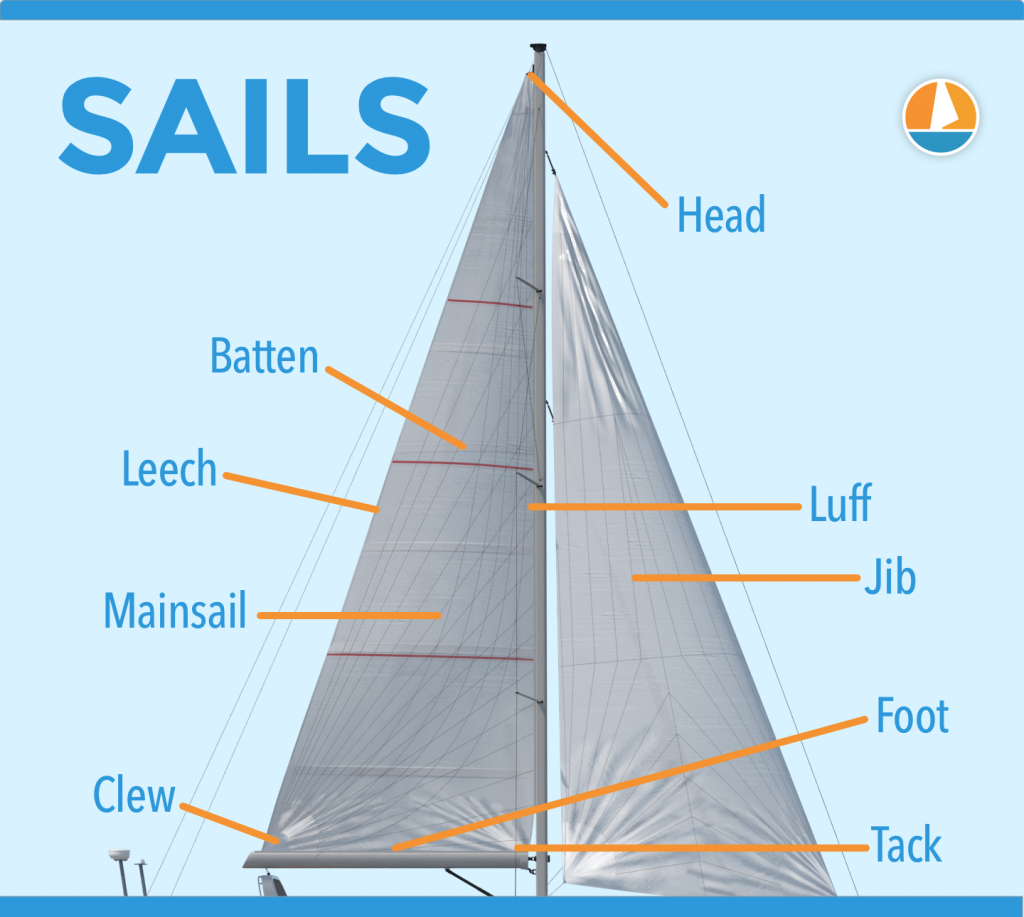

On this page:
Parts of a sail and their functions, mainsail components, jib components of a sailboat, components of spinnakers, sail controls and settings, sail care and maintenance, sail materials and construction.
In this guide, we'll focus on the three main types of sails : Mainsail, Jib, and Spinnaker.
Mainsail is the primary sail on your boat
The mainsail is the largest sail on a sailboat and is typically attached to the mast and boom. It is found aft (rear) of the mast. It's attached to the boat through a track or sail slide, which allows it to move up and down.
Jib is a triangular sail placed in front of the boat
The jib is a smaller sail that is attached to the bow of the boat and works in conjunction with the mainsail to control the direction and speed of the boat. It helps to improve the boat's handling and increase speed, working in tandem with the mainsail.
In some cases, larger jibs called genoas are used to capture more wind, thus increasing the boat's speed.
Spinnaker is designed for sailing downwind
The spinnaker is a large, colorful, and lightweight balloon-shaped sail designed for sailing downwind. It captures the wind from the rear, pushing the boat forward with added speed and stability.
In this section, you'll find a comprehensive explanation of the primary components of a sail and their functions:
Head is the uppermost corner of a sail
The head of the sail refers to the uppermost corner where it connects to the top of the mast. Knowing the location of the head is essential, as it helps you identify the top of the sail and allows you to properly hoist and secure it in place.
Tack is the lower front corner of a sail
The tack is where the lower front corner connects to the base of the mast, or the boom. This important point helps you determine the sail's orientation and affects its overall shape and efficiency. By adjusting the tension at the tack, you can control your sail's performance and handling in various wind conditions.
Clew is the lower rear corner of a saisl
The clew is where the sheets attach to control the sail's angle to the wind. Adjusting the tension on the sheets can change the sail's shape and ultimately influence the boat's speed and direction. Becoming familiar with the clew will help improve your sailing skills and ensure smooth maneuvers on the water.
Luff is the front edge of the sail
The luff is the forward edge of the sail that runs along the mast. It's crucial to maintaining a tight and efficient sail shape. When sailing upwind, pay close attention to the luff, as it can provide valuable information about your sail's trim. A properly trimmed sail will have a smooth luff, allowing the boat to move efficiently against the wind.
Leech is the rear edge of the sail
The leech is opposite the luff. It plays a critical role in controlling the overall shape and efficiency of your sail. Watch the leech carefully while sailing, as excessive tension or looseness can negatively affect your sail's performance. Adjusting your sail's trim or using a device called a "boom vang" can help control the shape and tension of the leech.
Foot is the bottom edge of the sail
The foot is running between the tack and the clew. It helps control the shape and power of the sail by adjusting the tension along the boom. Ensure the foot is properly trimmed, as this can impact your boat's performance and speed. A well-adjusted foot helps your sail maintain its proper shape and operate at optimal efficiency while out on the water.
In this section, we'll look at some critical elements of the jib: the sheet, genoa, and headstay.
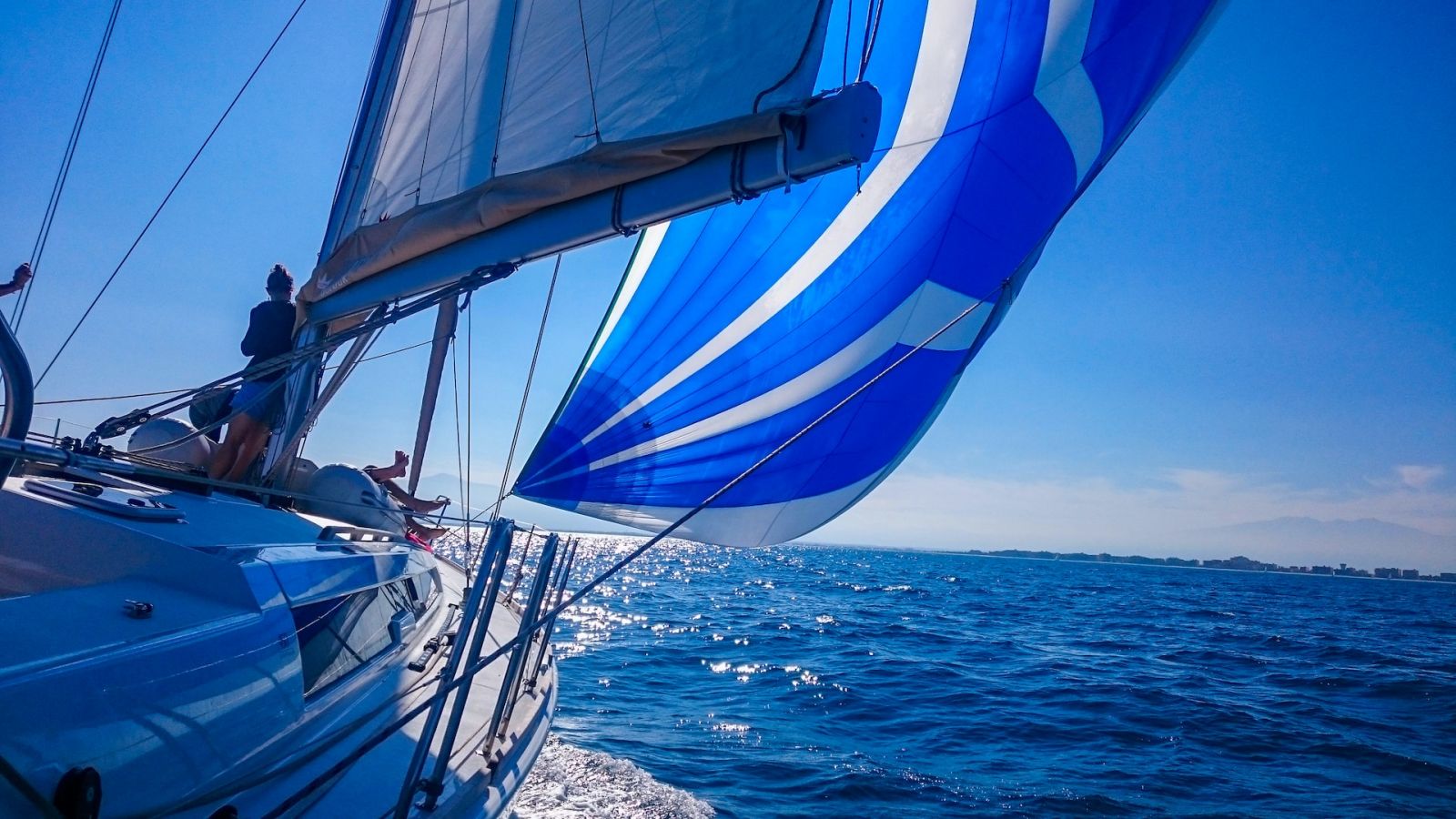
Sheet is the line used to control the position and trim of the sail
The jib sheet is the line used to control the jib's angle in relation to the wind. You adjust the sheet to get the best possible sail trim, which greatly affects your boat's performance. The jib sheet typically runs from the jib's clew (the lower rear corner of the sail) through a block on the boat's deck, and back to the cockpit, where you can easily control it.
When adjusting the jib sheet, you want to find the perfect balance between letting the sail out too far, causing it to luff (flutter), and pulling it in too tightly, which can cause heeling or poor sail shape. Make small adjustments and observe how your boat responds to find the sweet spot.
Genoa is a larger jib used to capture more wind
A genoa is a larger version of a standard jib. It overlaps the mainsail, extending further aft, and provides a greater sail area for improved upwind performance. Genoas are categorized by the percentage of overlap with the mainsail. For example, a 130% genoa means that the sail's area is 30% larger than the area of a jib that would end at the mast.
Genoas are useful in light wind conditions, as their larger surface area helps your boat move faster. However, they can become difficult to manage in strong winds. You might need to reef (reduce the size) or swap to a smaller jib to maintain control.
Headstay provides a support structure for the jib
The headstay is a crucial part of your boat's standing rigging system. It is the cable or rod that connects the top of the mast (the masthead) to the bow of the boat. The headstay helps maintain the mast's stability and provides a support structure for the jib.
The tension in your headstay plays a significant role in the jib's sail shape. Proper headstay tension will create a smooth, even curve, allowing your jib to perform optimally. If the headstay is too tight, the sail may be too flat, reducing its power, whereas a loose headstay can result in a sagging, inefficient sail shape.
A spinnaker is a sail designed specifically for sailing off the wind , on courses between a reach and downwind. They are made of lightweight fabric, often brightly colored, and help maximize your sailing speed and performance.
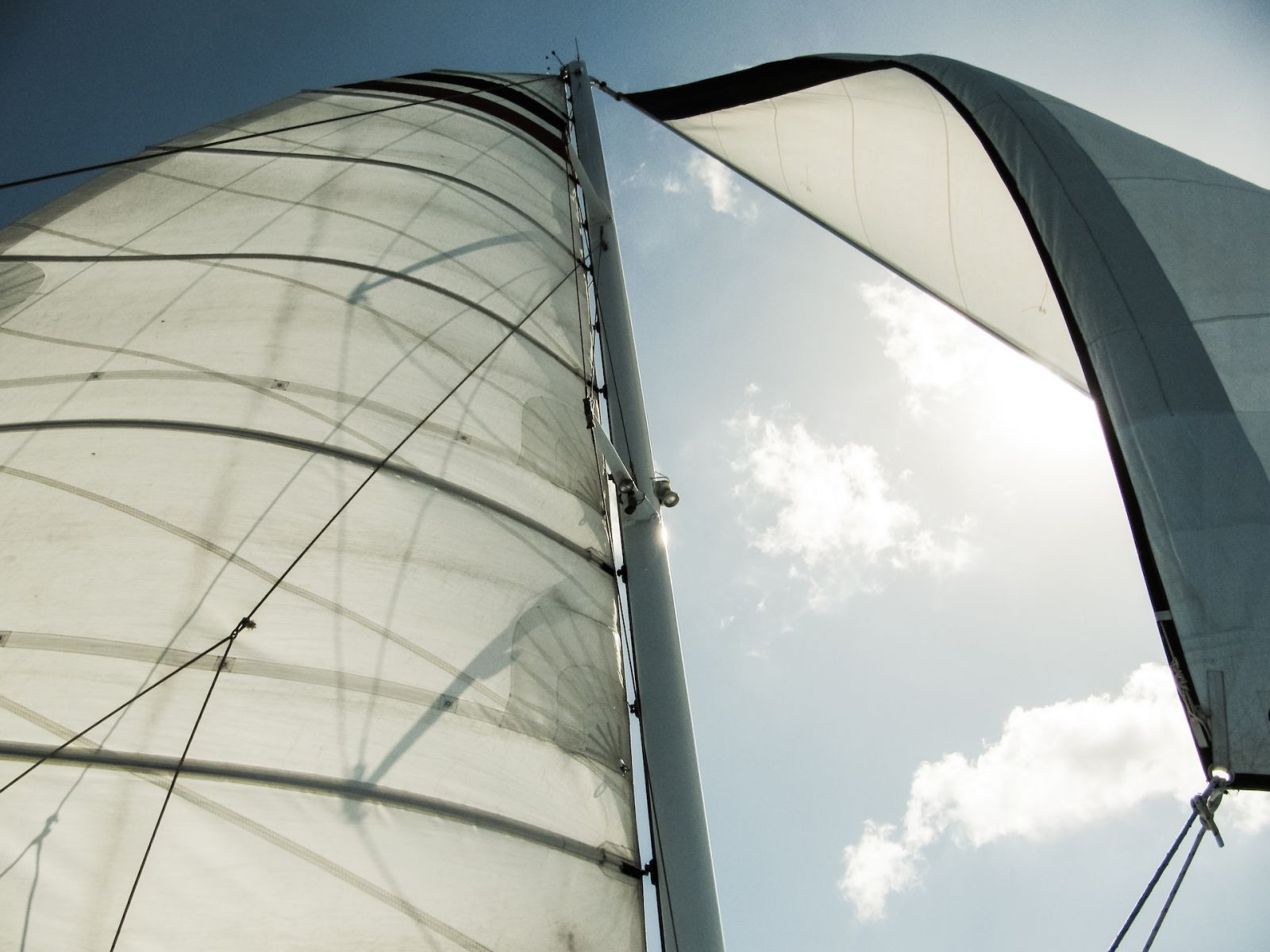
Asymmetrical spinnakers are designed for off-wind sailing
Asymmetrical spinnakers are usually found on modern cruising and racing boats. They're designed for a broader range of wind angles and have a more forgiving shape, making them easier for you to handle. Key components of an asymmetrical spinnaker include:
- Tack : This is the front, lower corner where the sail connects to the boat. A tack line is used to adjust the sail's position relative to the bow.
- Head : The top corner of the sail, where it connects to the halyard to be hoisted up the mast.
- Clew : The aft corner of the sail, connected to the sheet, allowing you to control the angle of the sail to catch the wind effectively.
You can find a step-by-step guide on how to rig and hoist an asymmetrical spinnaker here .
Symmetrical spinnakers are used for downwind sailing
Symmetrical spinnakers are more traditional and usually found on racing boats, where downwind performance is critical. These sails are shaped like a large parachute and are split into two identical halves. Key components of a symmetrical spinnaker include:
- Head : Similar to the asymmetrical spinnaker, the head is the top corner connected to the halyard.
- Clews : Unlike an asymmetrical spinnaker, a symmetrical spinnaker has two clews. Both are connected to sheets and guys, which help control the sail's shape and movement.
- Spinnaker Pole : This is a horizontal pole that extends from the mast and is used to project the windward clew outwards and hold the sail open.
Handling a symmetrical spinnaker can be more challenging, as it requires precise teamwork and coordination. If you're new to sailing with this type of sail, don't hesitate to seek guidance from experienced sailors to improve your technique.
In this section, we'll explore sail controls and settings, which are essential for beginners to understand for efficient sailing. We'll discuss trimming, and reefing, as sub-sections.
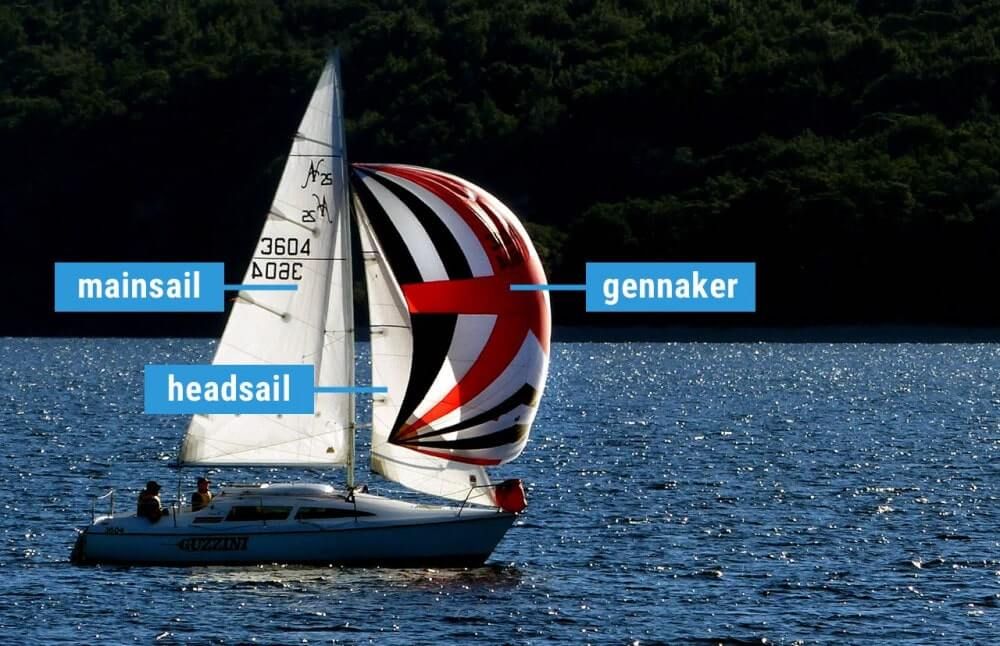
Trimming your sails for speed and stability
Trimming is the process of adjusting your sails to optimize them for the current wind conditions and desired direction. Proper sail trim is crucial for maximizing your boat's speed and stability. Here are some basic tips for sail trimming:
- Pay attention to the telltales, which are small ribbons or yarn attached to the sails. They help you understand the airflow over your sails and indicate whether they're properly trimmed.
- Use the sheets, which are lines attached to the clew of your sails, to adjust the angle of your sails relative to the wind.
- In light winds, ease the sails slightly to create a more rounded shape for better lift. In stronger winds, flatten the sails to reduce drag and prevent excessive heeling.
Reefing your sails for control and balance
Reefing is the process of reducing the sail area to help maintain control and balance in stronger wind conditions. It's an essential skill to learn for your safety and the longevity of your sails. Follow these steps to reef your sails:
- Head into the wind to reduce pressure on the sails.
- Lower the halyard (the line that raises the sail) until the sail reaches the desired reefing point.
- Attach the sail's reefing cringle (reinforced eyelet) to the reefing hook or tack line.
- Tighten the new, lower clew (bottom corner) of the sail to the boom with the reef line.
- Raise the halyard back up to tension the reduced sail.
Take proper care of your sailboat to ensure that it remains in top condition. In this section, we will discuss the key aspects of sail care and maintenance, focusing on cleaning and storage.
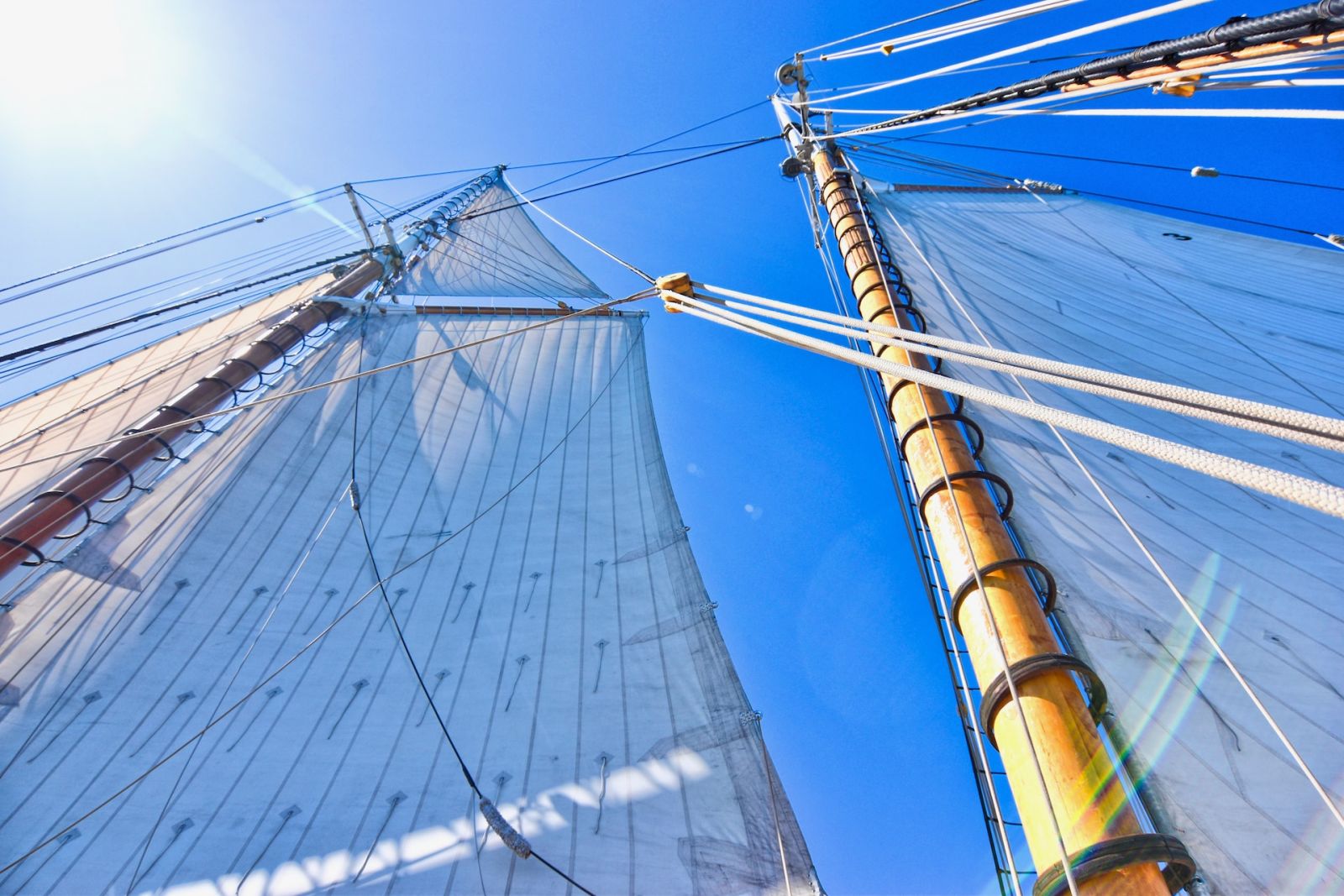
Steps to clean your sails
Keeping your sail clean is crucial for its longevity and performance. Follow these simple steps to maintain a spotless sail:
- Rinse with fresh water after each use, paying extra attention to areas affected by saltwater, debris, and bird droppings.
- Use a soft-bristled brush and a mild detergent to gently scrub away dirt and stains. Avoid harsh chemicals or abrasive materials, as they may damage the fabric.
- Rinse again thoroughly, ensuring all soap is washed away.
- Spread your sail out to air-dry, avoiding direct sunlight, which may harm the fabric's UV protection.
Ways to store your sails
Sail storage is equally important for preserving the lifespan of your sail. Here are some tips for proper sail storage:
- Fold or roll your sail : Avoid stuffing or crumpling your sail; instead, gently fold or roll it to minimize creases and wear on the fabric.
- Protect from UV rays : UV exposure can significantly reduce the life of your sail. Store it in a cool, shaded area or use a UV-resistant sail cover when not in use.
- Ventilation : Ensure your sail is stored in a well-ventilated area to prevent mildew and stale odors.
- Lay flat or hang : If space allows, store your sail laid out flat or hanging vertically to reduce the risk of creasing and fabric damage.
Flaking your sails when not in use
Flaking is the process of neatly folding your sails when they're not in use, either on the boom or deck. This helps protect your sails from damage and prolongs their lifespan. Here's how to flake your sails:
- Lower the sail slowly, using the halyard while keeping some tension on it.
- As the sail comes down, gather and fold the sail material in an accordion-like pattern on top of the boom or deck.
- Secure the flaked sail with sail ties or a sail cover to prevent it from coming undone.
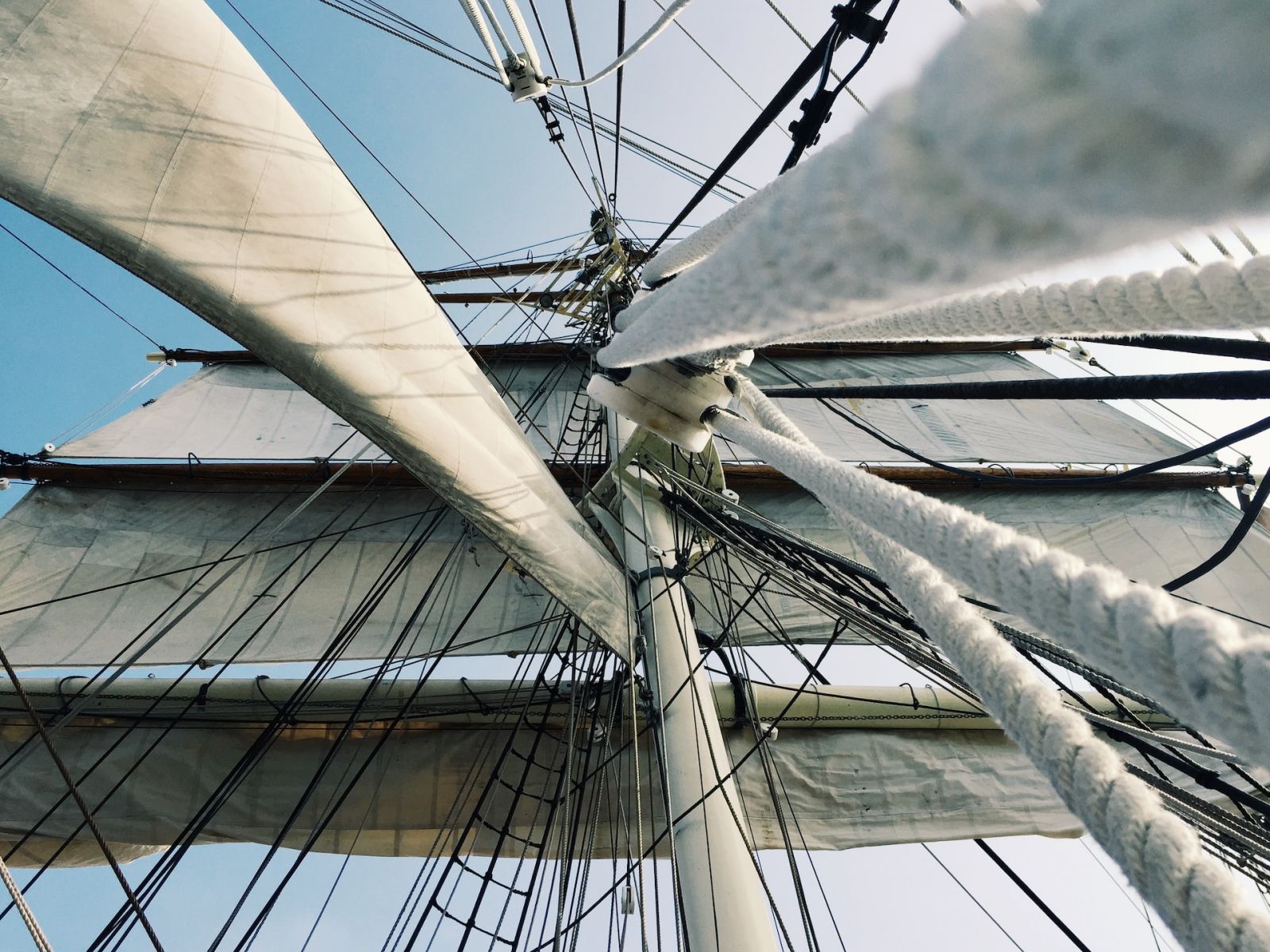
Traditional fabrics used to make sails
In the early days of sailing, natural materials like cotton and flax were used to make sails. These fabrics were durable, breathable, and held up well in various weather conditions. However, they would eventually wear out and lose their shape due to the constant exposure to UV rays and seawater.
While traditional fabrics like cotton and flax were once commonly used for sailmaking, they have largely been replaced by synthetic materials like polyester and nylon due to their superior strength, durability, and resistance to mildew and rot. However, some sailors and sailmakers still use cotton and other natural fibers for certain applications, such as traditional sailmaking or historical recreations.
Modern fabrics used to make sails
Modern sail materials, such as Dacron, Mylar, and laminates, are more resilient and longer-lasting than traditional fabrics. These materials are lightweight, strong, and resistant to UV rays and water damage.
Dacron : Dacron is a popular material for sails because of its durability, UV resistance, and ease of maintenance. It's a type of polyester fabric that is often used for making cruising sails. Dacron offers excellent shape retention and resistance to stretch, making it ideal for both beginners and experienced sailors.
Laminate materials : Laminate sails are made by bonding multiple layers of materials like Mylar, polyester, and Kevlar. These sails offer better shape and performance compared to their fabric counterparts, making them popular among racers. However, they tend to be more delicate and may not be suitable for long-term cruising.
Mylar films : Mylar films are used in laminate sails for their excellent strength-to-weight ratio and shape retention. These films are often sandwiched between other materials, such as polyester or Kevlar, to enhance the sail's resistance to stretch and load handling. However, Mylar sails can be susceptible to delamination and abrasion, requiring extra care and regular inspection.
Sail stitching for shape and durability
Sail stitching is an essential aspect of sail construction, helping to maintain the sail's shape and durability. Various stitching techniques can be used, such as zigzag, straight, and triple-step sewing. The choice of stitching type depends on the sail's purpose and expected loads. In addition, using UV-resistant thread ensures that the stitching lasts longer under harsh sun exposure.
Leave a comment
You may also like, how do sails actually work: full beginners guide.
The sails are your boat's primary driving force. Your boat is designed to sail , and with good wind it will be faster and more comfortable than using the engine. …
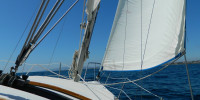
Sail Names: Explained for Beginners (With 15 Examples)
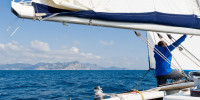
How To Trim Sails: The Ultimate Guide (with Cheat Sheet)
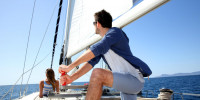
How To Reef Your Sails (Mainsail, Jib, Furling, Loose)
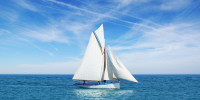
How Much Do New Sails Cost?
Own your first boat within a year on any budget.
A sailboat doesn't have to be expensive if you know what you're doing. If you want to learn how to make your sailing dream reality within a year, leave your email and I'll send you free updates . I don't like spam - I will only send helpful content.
Ready to Own Your First Boat?
Just tell us the best email address to send your tips to:
Home > Education & Expertise > Types of Sails > Mainsail
The mainsail is a key component of your sailing inventory. All sailboat rigs are equipped with at least one mainsail. These sails are not always the largest or the most powerful sail on the boat, however they are key to the performance of your boat. The configuration of your mainsail is only limited to your imagination and your rig. Multiple reefing points to reduce sail area can be designed into your sail, full battens can be added to increase the size of your mainsail and visual items, like your boats insignia and sail numbers will make your mainsail unique to you and your boat.
Each sail is proudly made from name brand cloth and hardware suppliers. Precision Sails custom designs and produces mainsails that come complete with everything you need to set sail and custom options to optimize handling, performance, and shape.
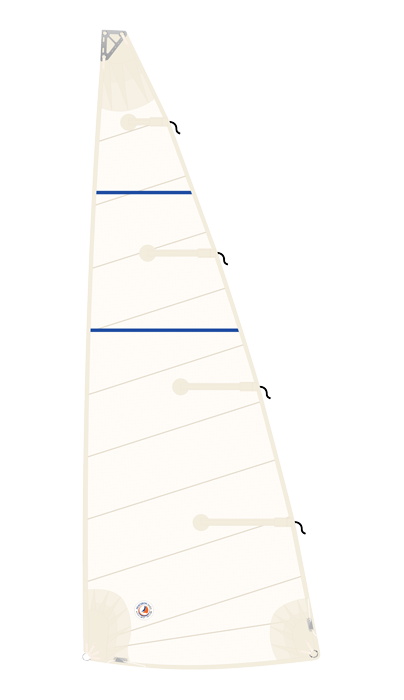
Mainsails that’ll stand the test of time, no matter what you’re up to.
When you request a quote for a new or replacement mainsail from Precision Sails the base price you see will include everything you need to get sailing. All of our mainsails come standard with partial battens, a single reef, block reinforced corners, luff sliders, cunningham, a loose foot with heavy clew slug, leech and foot lines, aluminum headboard, draft stripes, and tell tales.
Need a second reef, offshore reinforcements, or full battens? No problem! We include the prices for these options right on our quotes. Learn more about some of the options we offer to customize your sail below.
Precision Sail’s Tip: When choosing a mainsail you’ll want to carefully consider how you plan to use your sail. Each sailcloth has different properties which are better suited for different applications.
Mainsail Options: What’s Customizable?
At Precision Sails, we take sail customization seriously. To ensure your mainsail performs exactly as you need it to we offer the following customization options.
Mainsail Battens
Battens offer leech stability for mainsails. They often increase roach, when desired, on large roach mainsails. Adding in full battens or a mixture of full and partial battens increases the durability of the mainsail. Our flexible fiberglass battens come in 3 standard sizes: 15mm x 3mm, 30mm x 3mm, and 50mm x 3mm.
Whether you are after a partially battened mainsail, a fully battened mainsail, or a combination, we can help. All full batten pockets come with quality batten receptacles on the luff and a variety of secure leech closures! Pockets are built with tie-ins for security or Velcro for ease of use. This means you’ll always be able to adjust your batten tension to how you like it!
Custom Battens and Receptacles
If you have specific needs or a custom setup, make sure to talk with the designers during your sail design. We often custom order new receptacles or set the sail up to work with clients existing batten receptacles and systems. If you wish to reuse your batten receptacles, let us know and we will build the sail so that you can install your existing receptacles. Due to shipping, round battens and custom tapered battens are not included unless organized with the design team. Additional charges may apply.
Strong reinforced patches on the luff and leech along with heavy duty press rings allow for easy reefing. A row of reef eyelets between the luff and leech allow for clean storage of excess sail. Positioning of reef points can be customized during design but our standard positioning is 15%, 30% and 45% up the luff. This can vary with batten positioning. All of our sails come standard with the first reef point. If your sail requires a specific height up from the tack, please make sure to request this on the design/measurement forms and mention it to your designer.
Sail Control
A heavy-duty press ring and an extra cunningham reinforcement patch are placed about 6″ to 12″ above the tack to allow for tightening the luff of the sail. This sail control helps you move the draft forward or aft to control the optimal sail. A cunningham comes included in all of our mainsails. We also offer flatteners. The flattener is positioned just above the clew on the leech of the mainsail. This option is similar to a cunningham in allowing you to control the shape of the sail. In this case, it is mainly used to flatten the shape of your mainsail.
Identification
An insignia is the sailboat manufacturer’s logo usually placed towards the top of your mainsail. These are laser cut from insignia cloth which is a special heavy-duty UV resistant sticker material that comes in blue, black, red, green, and yellow. Insignias can also be printed onto your sail to minimize weight.
Sail Numbers
Usually placed on your mainsail, sail numbers are used for identification in sailboat races as well as if you are in trouble on the water. Our standard sail numbers are applied with insignia cloth.
Custom Logo
If you own a company or have a personal logo you think would look great on your sail, we can help. Our custom logo printing allows for large colorful logos to be printed on your new sail. This is a great way to get your company logo out on the water!
Furling Mainsail UV Options
UV Protection
Furling Mainsails are equipped with a UV Protection cloth that helps your sail defend against sun exposure, the following color options are our most commonly supplied UV Protection. However, it wouldn’t be a custom sail if we didn’t go the extra mile in customization – other cloth manufactures and color selections are available, speak to a sail consultant for a full list of customization options for your new sail.
Colors are a digital representation of sailcloths and final color may vary depending on sailing conditions, production run, or lighting.
Reinforcements
Radial Reinforcements
Our design team has engineered corner patches that better distribute the load, whether it’s with standard block patches or stronger reinforced radial patches. Radial corner patches have nearly double the number of sailcloth layers at the corner compared to block patches. Our unique radial corner design is stronger and more durable than the competition. Recommended to all sailors, this reinforcement increases the shape retention of your sail without drastically increasing the cost or weight. The corner patches’ extra cloth layers create a longer-lasting sail and prevent premature material failure. It’s important to know that your new sail does not use pre-cut corner patches. Our designers ensure corner patches and reinforcements are customized for every sail.
Offshore Reinforcements -only available with the Navigator Package
Our offshore reinforcement package is an option for all sailors looking for extra reinforcements. Precision Sail’s offshore spec sails are designed to withstand the strongest of winds. Depending on the size of the boat these reinforcements can include:
- Double Tapes: This extra tape layer gives more strength to the outer edges of the sail.
- Wider Steams: Wider seams and an extra row of stitching is added to offshore sails. Where a sail might normally have a 30mm wide seam with 2 rows of stitching we would now use a 38mm seam with 3 rows of stitching.
- Leech Seam Wedgies: Prevents the seams along the leech from splitting by distributing the load onto the panels.
- Double Ply Layers: Increases the number of layers of sailcloth on each of the patches. This adds a tremendous amount of extra strength to the sail. This includes corner, reef, and eyelet patches.
- Reef Reinforcement Belts: Further increases the strength of your reef points and foot of the sail when reefed.
Elite Package
Want a more hands-on approach to your sails design? How components and hardware upgrades?
The Elite package is for you. This package allows you to customize your sail even further while upgrading the hardware and points of attachment of the sail. The Elite package includes:
Additional Design Customization
- Up to 1 hour design consult with our lead sail designer.
- Production order review.
- Customizable clew or tack Position to clear life lines.
- Customizable roach, head, tack, clew, corners, sail shape, and dimensions.
- Customizable tack angle for clearance of dodger, head height, etc.
- Choice of sail colors (draft stripes, numbers, corners).
Additional Sail Enhancements
- Leech, luff, and reef belts where applicable.
- Leather protected clew corner.
- Spectra webbing.
- Vectran, Dyneema or Kevlar leech and foot lines.
- Gortex / Tenara UV protected thread. Review of pros and cons with your designer.
- Furling marks.
- Additional tell tale positions.
- Spreader patches.
Navigator Package
Precision Sail’s signature package is defined by its unparalleled options and possibilities. Designed for the blue water sailor, the Navigator Package represents the pinnacle of superior quality and custom design. This package allows for elite customization and hardware upgrades for those seeking true distinction. No detail has been overlooked!
The Navigator Package includes:
- Design Consultation up to 1 Hour
- Radial Corners
- Triple Row of Triple Zig Zag Stitching
- Leather Clew Protection
- Leech Seam Wedges
- Spectra Webbing
- Premium UV Treated Thread: - Tenera, Serabond, Serafil, Lifetime
- Dyneema Leech and Foot Lines with Covered Cleat
- Custom Draft Stripe Color
- Tie-in, Velcro, or Flip-Flop Batten Pockets
- Double Tapes (Luff, Leech, Foot)
- Stainless Steel Rings
- Furling Marks (Furling Sails Only)
Mariner Package
Our Mariner Package is defined by its customizable options and hands-on approach to sail design. This premium package allows sailors to upgrade everything from their hardware to points of attachment of the sail, while working one-on-one with their sail designer!
The Mariner Package includes:
- Design Consultation up to 30 minutes
- Double Row of Triple Zig Zag Stitching
- High-Quality Webbing
- Tie-in Batten Pockets with Dacron Cover
- Single Tapes (Luff, Leech, Foot)
- Metal Cleats (Leech and Foot Lines)
- High Quality Luff Sliders (Metal in High Load Areas)
Helmsman Package
Our Helmsman Package is designed to check off the fundamentals on every sailors list. This package offers the perfect collaboration of choice from trimming tools to finishing options, allowing sailors to design their ideal sail knowing Precision Sails craftsmanship ensures perfection every step of the way.
The Helmsman Package includes:
- Block Corners
- Draft Stripe – Black
- Leech and Foot Lines with Velcro Tab Adjuster and Cleat
- Wool Tell Tales
- Velcro Insert Batten Pockets
- Press Rings (If Applicable)
- Luff Hardware Reinforcement Patches
- Luff Rope or Appropriate Nylon Sliders
- Leech Line with Velcro Attachment
- Alloyed Head Board
- Draw String Sail Bag
Tuxedo Package
Precision Sails Tuxedo Package is a unique way of customizing your sail with a splash of color without sacrificing quality cloth for cosmetics. The Tuxedo package is applied to one side of the sail and matches the color of the leech, luff, and foot tapes, reefing belts, batten pockets, corner patching, and draft stripes. Colors available are: white, red, blue, green, and black. This package is available on mainsails, mizzens, jibs, and genoas.
Sail Details: It’s All About Precision
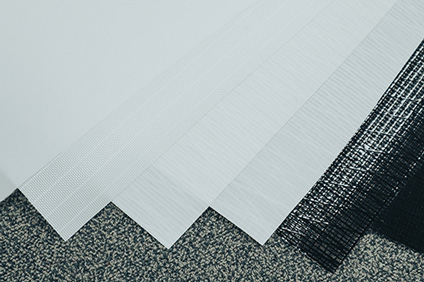
All of our sailcloth comes from the following top brands in the industry: Contender, Dimension-Polyant, Bainbridge International, Mazu, and Challenge. Our sail consultants help narrow down your options by choosing the appropriate cloth weight based on your specific requirements, the type of sailing you do, and the specifications as set out by the appropriate cloth manufacturer.
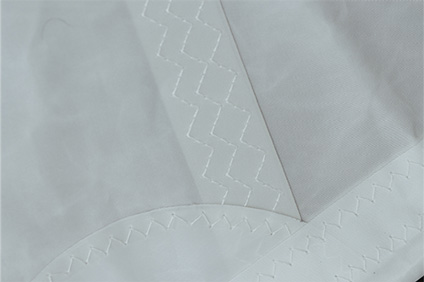
UV protected waxed white thread is used on all our sails. Thread weights come in V30, V46, V69, V92, V138, V207. Tenara, Gore-Tex thread, and different color upgrades are available. Triple step zigzag stitching on all seams adds strength and stops broken threads from unraveling like a row of standard zig zag stitching. Where a small sail may have one row of stitching, a large sail could have four or more. Need more security? The offshore package adds wider seams for extra rows of stitching.
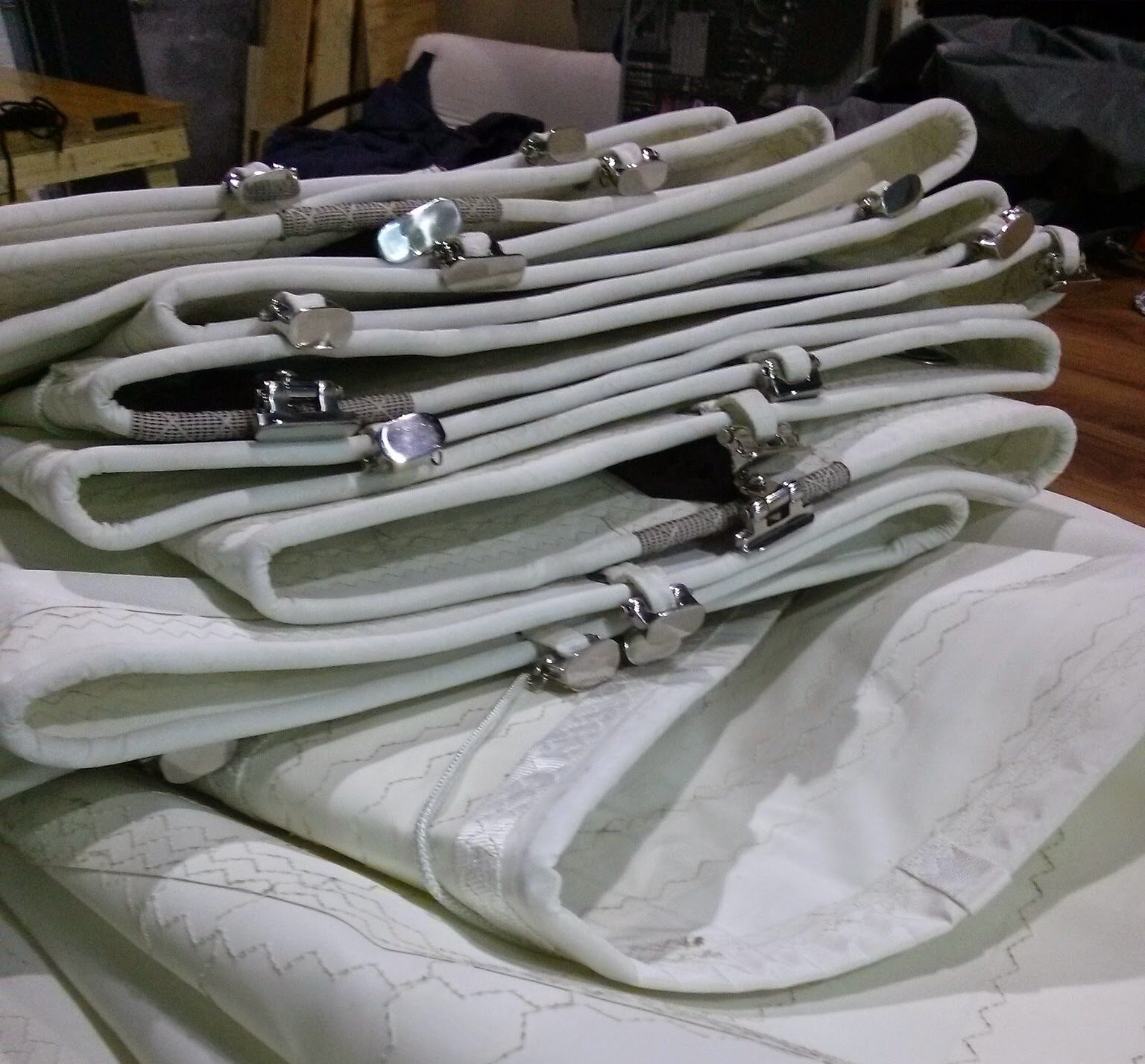
Luff Attachment
Whether your sail has a bolt rope luff, a UHMW Nylon slider, or you would like webbing loops to supply your own custom sliders, we can find the correct attachment for your luff. Reinforcement patches, chafe protection, and heavy-duty press rings secure the mainsail slider attachment points. Sliders are hand-stitched to the sail with several loops of webbing and special heavy-duty waxed thread.
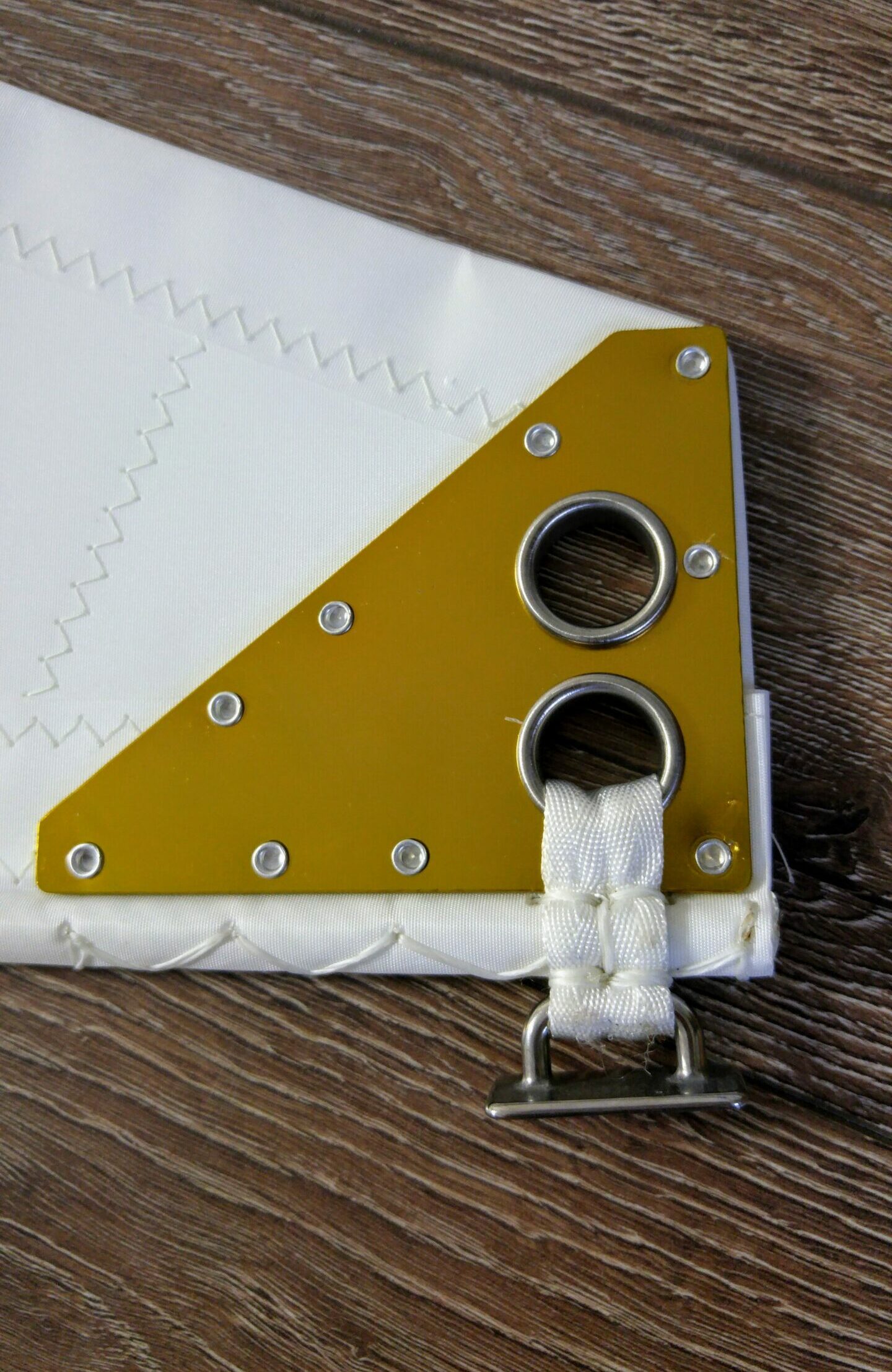
Aluminum head boards of different sizes and styles come from Bainbridge, Challenge, and Antal. Custom headboards are also available. Webbing is added for extra reinforcement and stronger metal sliders are used to secure the sail at the head.
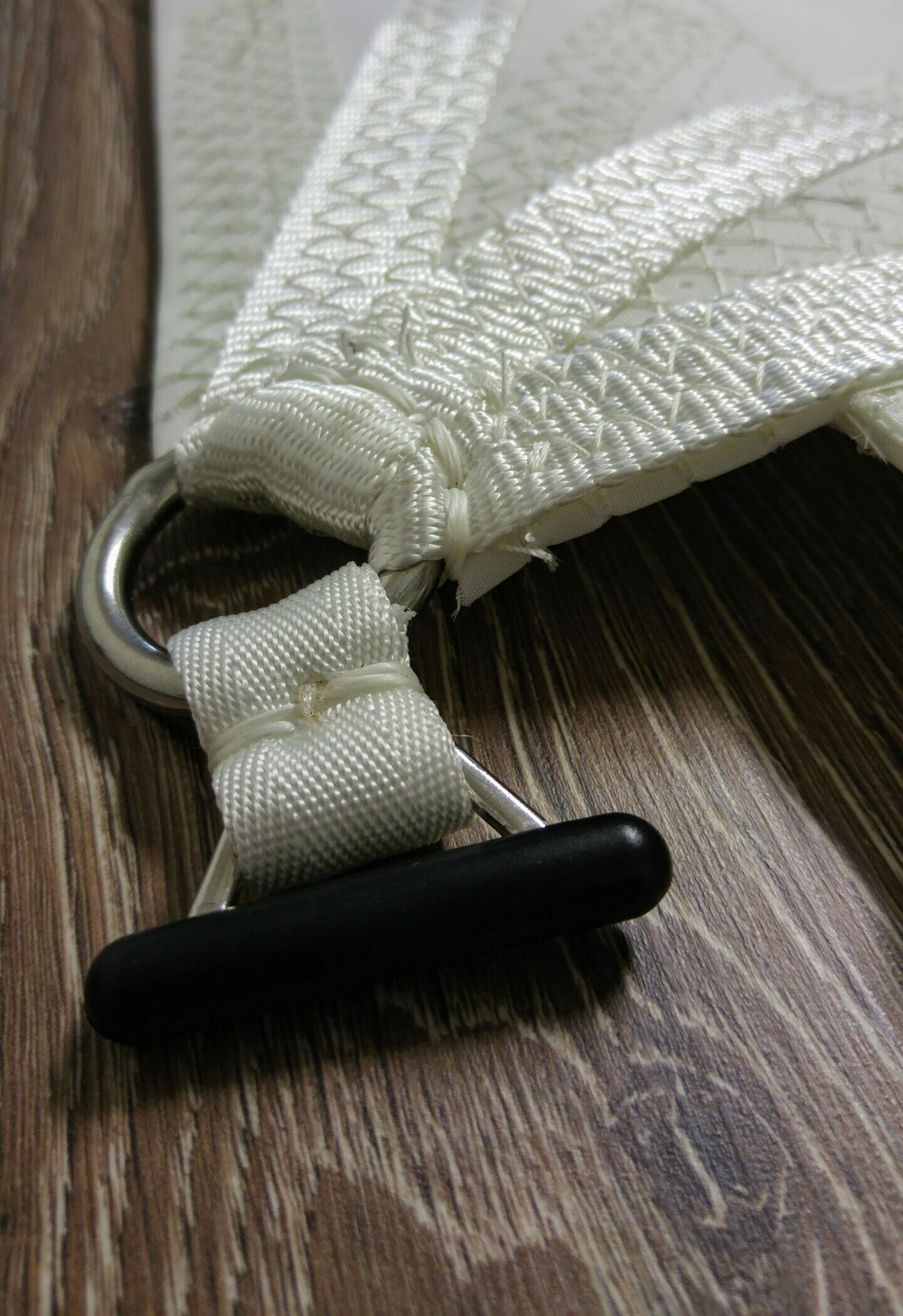
Foot & Clew
Our standard mainsails come loose footed to give you a modern design that emphasizes performance and ease of use. Large diameter heavy duty press rings are used on the clew of your mainsail. These rings come in 14mm, 20mm, 25mm, 30mm, 35mm, 40mm, 50mm, and 60mm sizes. A sail designer will select an appropriate size to be used for your sail. Depending on your configuration a clew slug may also be added. A heavy-duty metal clew slug is attached to the clew corner if your rig does not have an out-haul car. This slug holds your sail down to your boom in the vertical direction just like a clew car would. The slug is webbed on with multiple layers of webbing strap and slides easily along the boom.

Lines & Cleats
Strong leech and foot lines prevent fluttering and cloth fatigue. Our lines come in Kevlar, Polyester, and Vectran. Proper tension is maintained with quality alloy cleats to ensure your leech and foot lines are always secured. Velcro style cleats are also available to prevent your lines and cleats from catching.
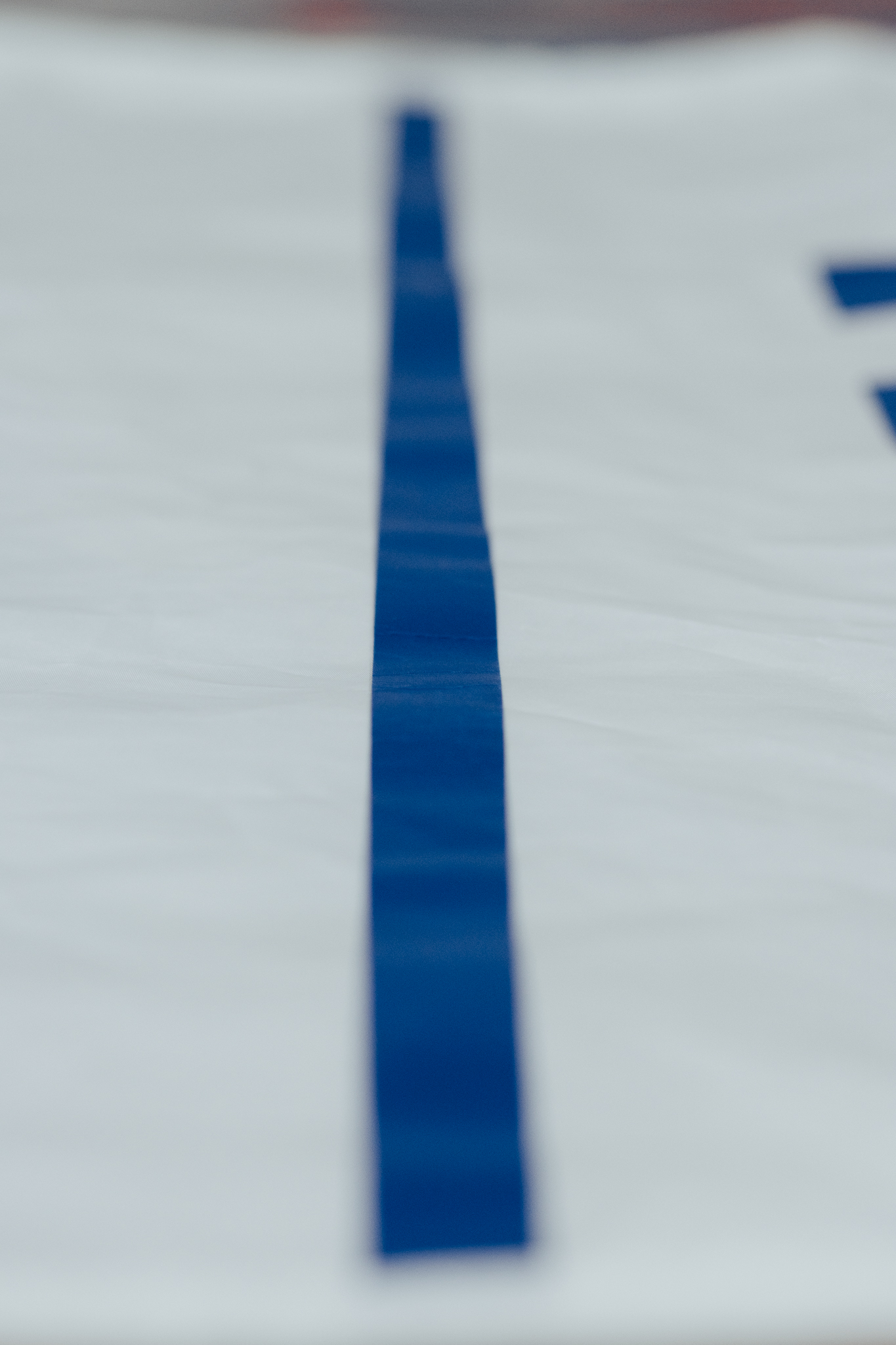
Sail Indicators
Highly visible draft stripes help determine your sail curvature. They come standard in these colors: blue, green, red, black, white, and grey. Draft stripes come in three configurations: multi-stripes, singles stripes, or none at all. Quality wool tell tales are placed on both sides of your headsail and nylon strips are placed along the leech of your mainsail to aid in the process of trimming. These are typically placed in 3 or more locations.
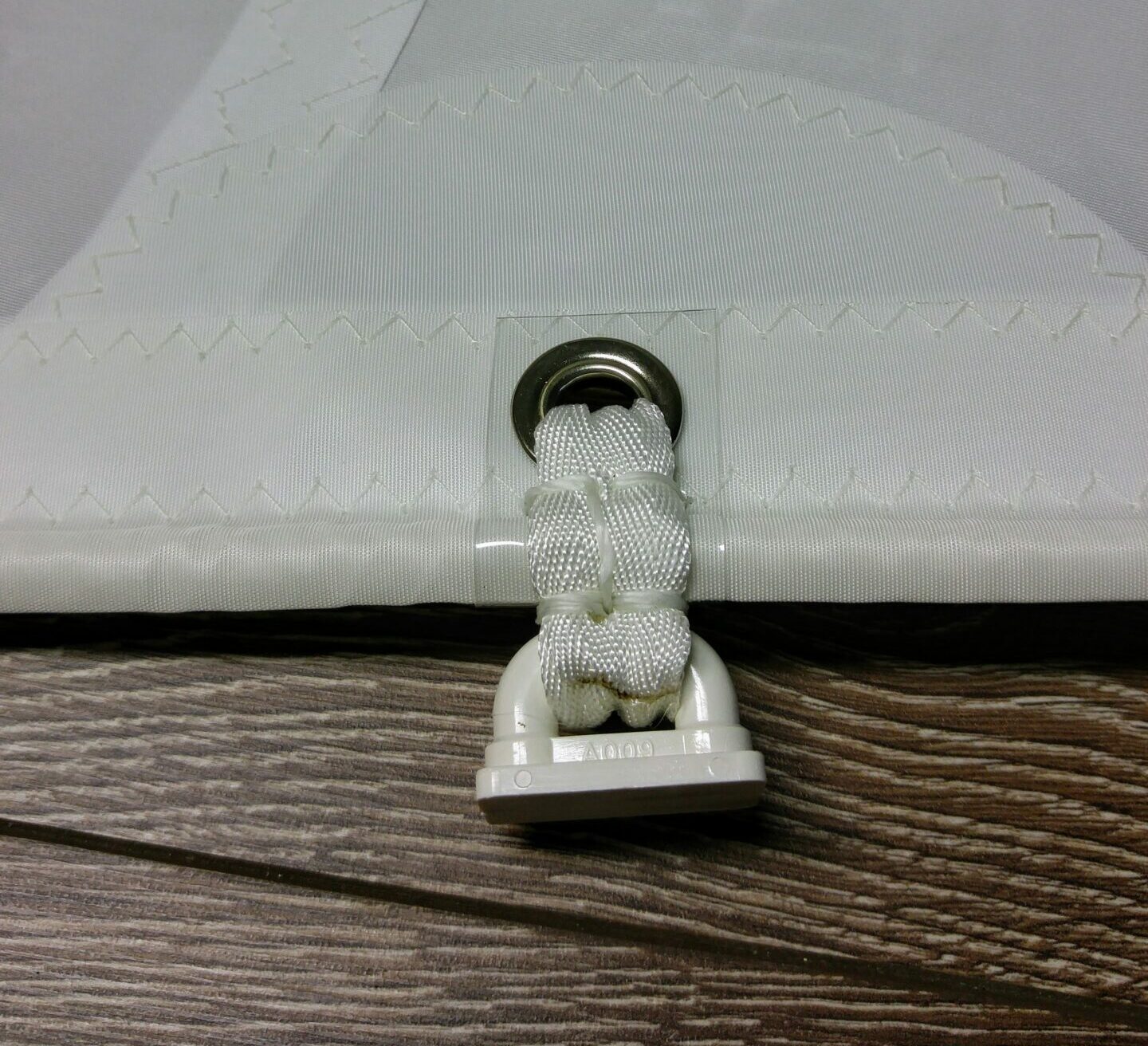
Reinforcement patches, chafe protection, and heavy-duty press rings secure the mainsail slider attachment points. Sliders are hand-stitched to the sail with several loops of webbing and special heavy-duty waxed thread. With a wide variety of sliders available in the market finding the correct attachment is easy. By using our simple measurement form your sail designer will be able to specific exactly what your mainsail needs.
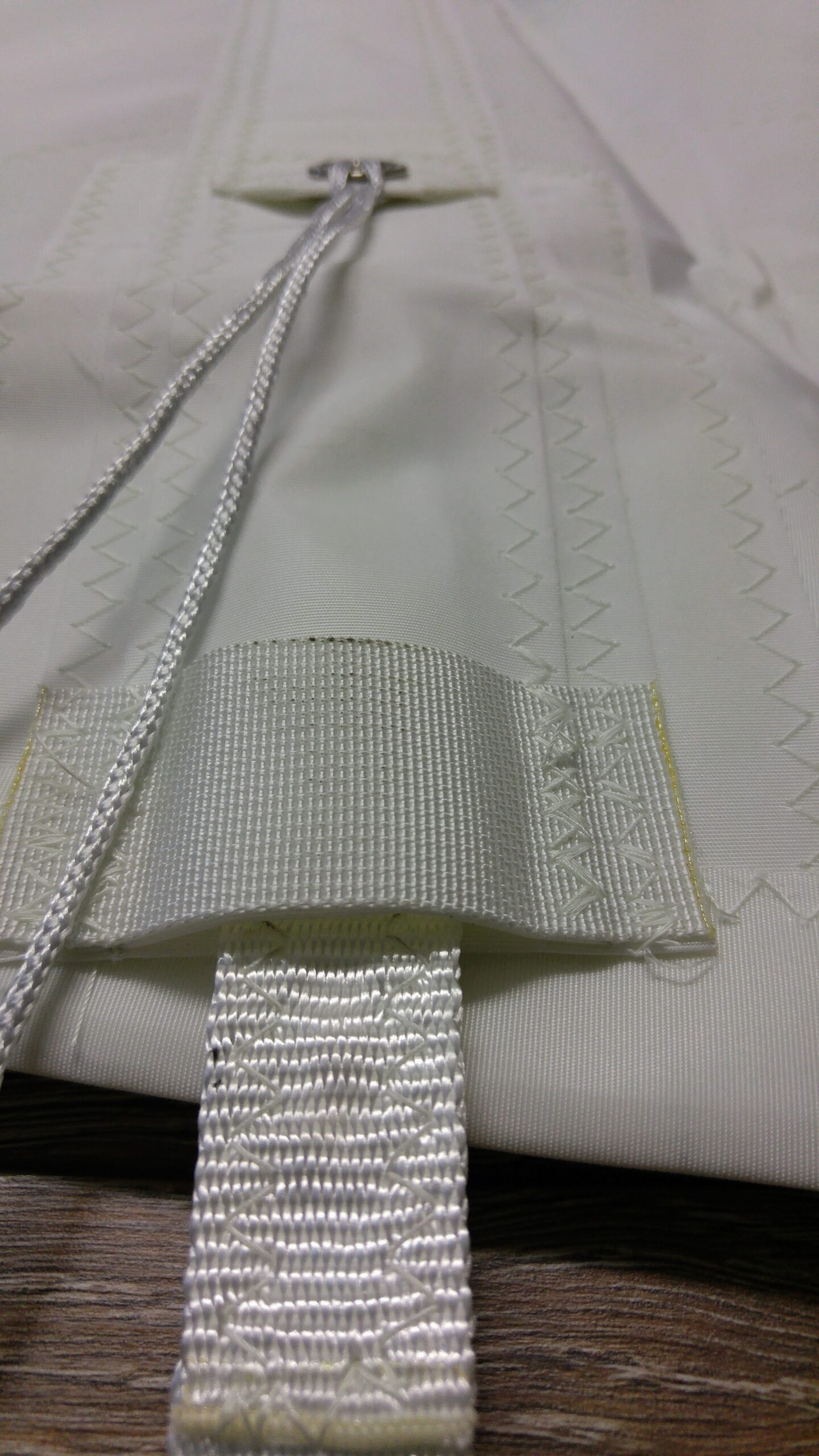
Batten Pockets
A batten pocket that performs well is essential in keeping your battens secured and in place. Extra pocket reinforcement is standard on all our sails. We offer several pocket types including, flip flop, velcro insert, tie in, and leech wrap.
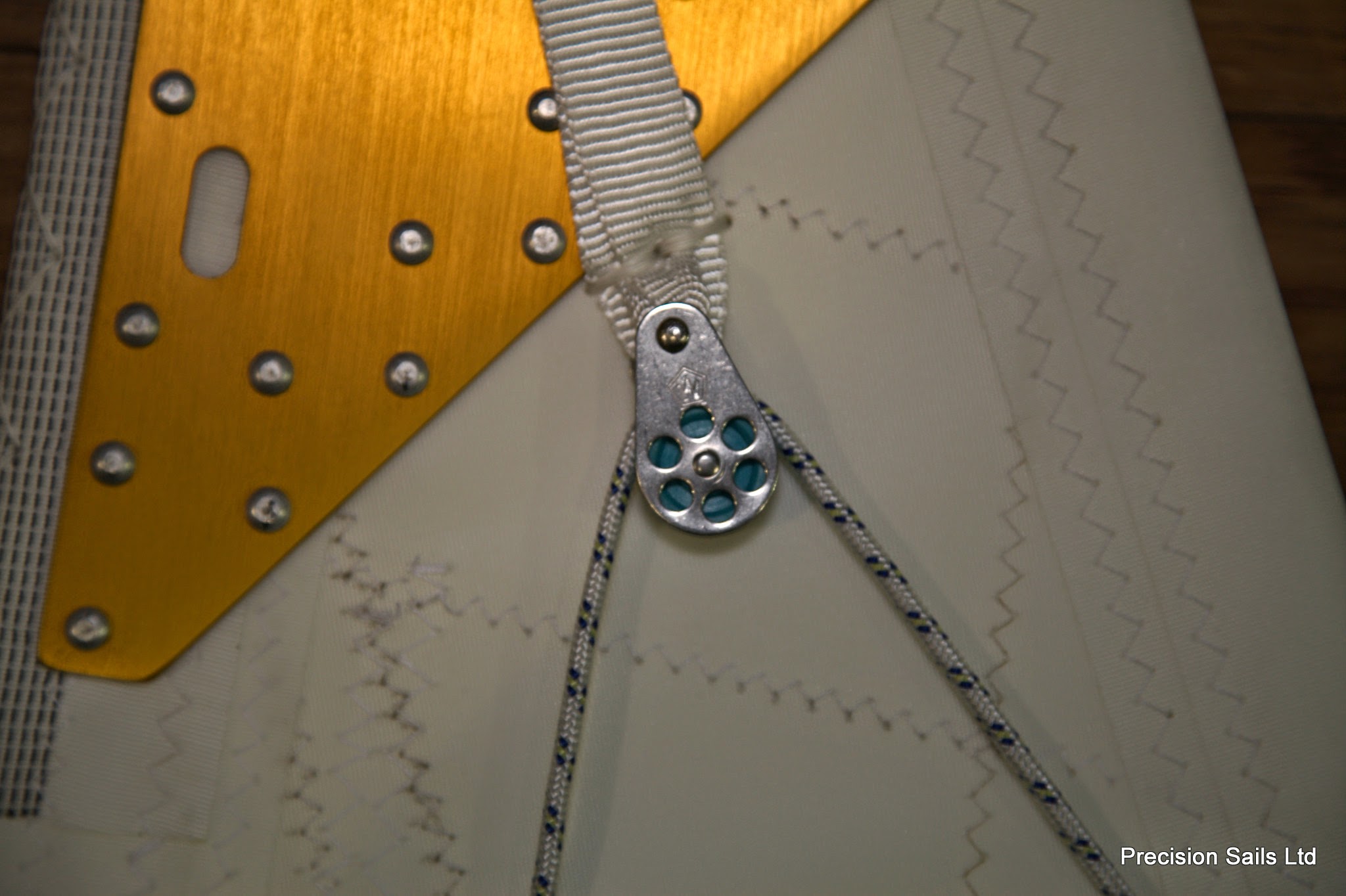
Overhead Leech Line
Standard leech lines with a cleat are included in all mainsails. Overhead leech lines are available for boats where it’s difficult to reach the clew of the sail. If your clew is difficult to reach we can design a leech line that runs up the leech, around a block at the head and down the luff.
Cloth Choices
Picking the perfect cloth is one of the most important factors when building a new sail. Luckily, our experts can help you consider the pros and cons of different cloth options and we’ll work with you throughout the process to make sure that we find the right fit for your sailing needs.
Cruising Laminate Sails
Laminate cruising sails are best suited for sailors who are looking for improved performance through better sail shape, and retention of sail shape over the life of the sail. These types of sails are produced using the same methods as racing sails. However, they are built with longevity in mind using Polyesters and Taffeta to increase durability and ease of care. Laminate sailcloth is designed to resist stretch under initial load, as well as stretch over time.
Cruising Dacron Sails
Precision Sails offers the largest selection of Crosscut and Radial Dacron sails in the industry. Whether you are sailing with the family at the summer cottage a few weekends a year or cruising around the world, there is a Dacron made precisely for your needs and within your budget. Each sailcloth manufacturer offers several qualities of Dacron to choose from in order to fit your needs. We’ve grouped sailcloth of similar qualities from each manufacturer to help you make a well-informed decision about what’s best for you!
Club Racing & Long Distance Racing Sails
Racing sails are built for speed. Precision Sails has access to the best Racing Laminate sail cloth offered in the industry. Whether you are racing against your fellow club members in “beer can” races just for fun or campaigning your boat in long distance races for bragging rights and prize money, there’s a Racing Laminate sail that will meet your expectations and your budget.
Mainsail Gallery
Check out some pictures of our Mainsail on Sailors Boats and in our design software! Get an understanding of the design and quality of a Precision Sails Mainsail!
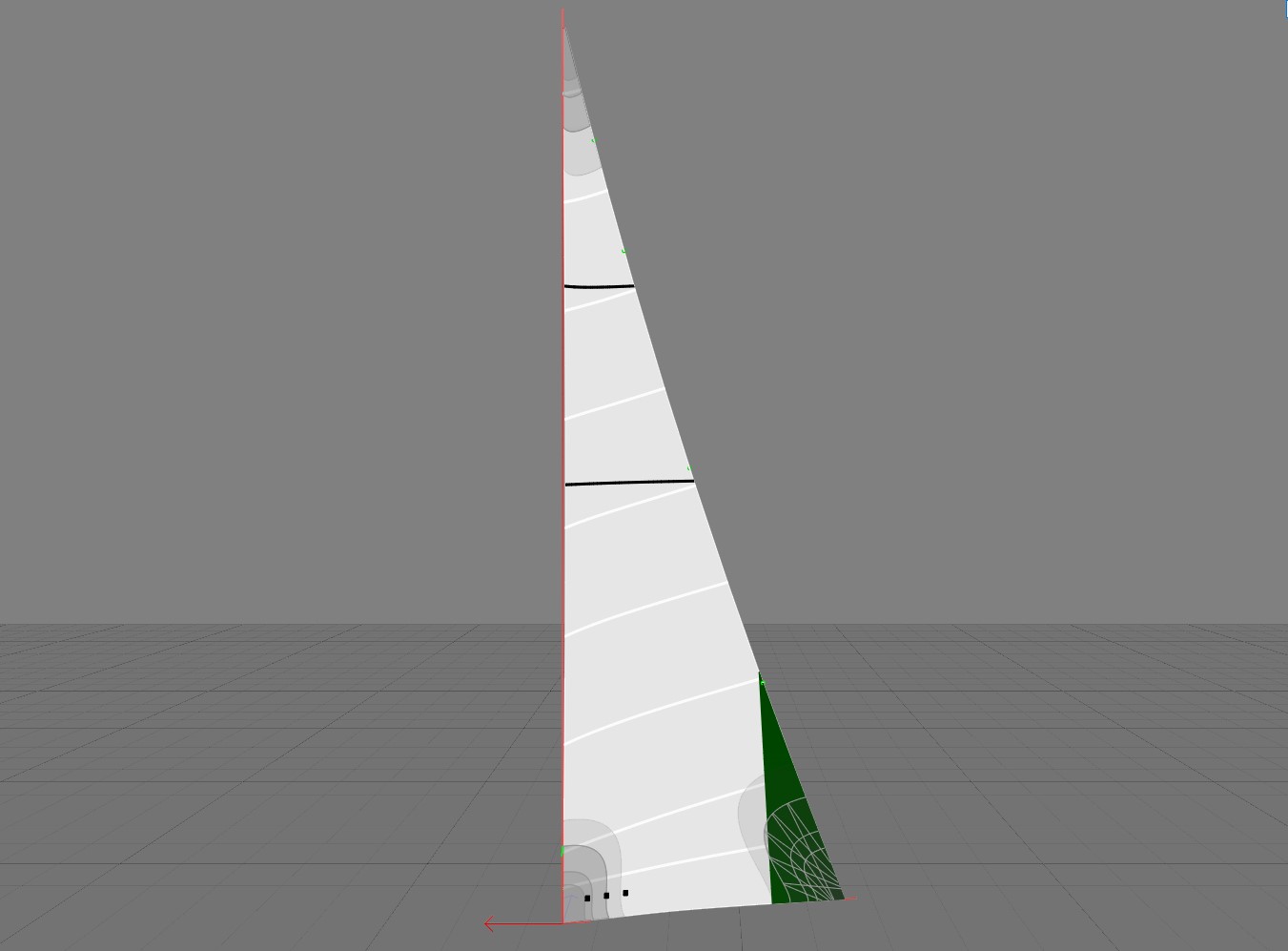
Ready to Find Your Dream Mainsail?
Submit a Quote Request today and our friendly team will be more than happy to make your dream sail come true.
" * " indicates required fields
Sail Types: A Comprehensive Guide to 8 Types of Sails
Sailboats come in all shapes and sizes. And that means there are many types of sails on the market! For those who might not know, sails are made of canvas and use wind power to propel sailboats through the water.
Understandably, different sails are required for different types of sailboats . And sailboats are categorized by the number of hulls they have. Monohulls have a single-hull design, catamarans have two hulls, and trimarans have three. Generally, sailors use catamarans for upwind sailing (but they can be used to sail downwind in certain conditions).
The type of sail you'll need for your sailboat depends on the kind of sailboat you have. Additionally, sails are highly dependent on the wind and weather conditions. Therefore, it's always a good idea to have different types of sails on board to navigate the ever-changing weather conditions.
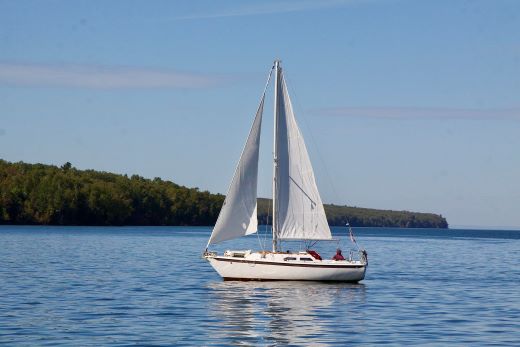
8 Types of Sails for Sailboats
As mentioned, you should carry multiple sails when sailing to prepare for various weather conditions. Here's a brief overview of the types of sails for sailboats:
1. Mainsails
The mainsail is the largest and most important sail. Therefore, it's probably the first sail to come to mind when you think of camping. Typically, it's situated directly behind the mast — connected to the boom — and uses wind energy to move the vessel. The mainsail plays a significant role in tacking and gybing, making it essential for any voyage.
Since the mainsail is a larger sail, it doesn't require wind to propel it forward. And the fact that it can be moved by moving the boom makes it uber-easy to operate.
Learn More About Sailing
2. Headsail
The headsail often accompanies the mainsail, though it is smaller in size. Regardless of your sailboat type, the headsail is positioned at the front of the mast – over the sailboat's bow.
Because headsails are small, they are helpful when navigating through windy conditions. Smaller sails catch less wind, preventing them from propelling your boat as strongly as larger sails. Additionally, headsails help lift, balance, and protect the vessel from inclement weather conditions.
While the term 'headsail' refers to any sail in front of the mast, the jib is the most common type of headsail. (And when a jib is so large that it overlaps the mast, it's called a genoa.)
Learn More About Sailboats
3. Genoa
The genoa is a large sail that attaches to the front of the forestay. (In this instance, it's similar to a headsail.) However, the genoa is larger than the headsail and overlaps the mainsail partially or completely to help the boat go faster.
Genoa sails are useful when sailing through light or medium wind. You can also use it when the wind comes directly from the rear. If you use a Genoa sail during high winds, you'll probably start sailing too quickly and put yourself and your boat at risk.
4. Spinnaker
The spinnaker is a large and whimsical (often colorful) sail. Spinnaker sails are usually symmetrical, allowing them to reach different points of sail. Generally, these are lighter sails and don't cover the mast like the genoa.
Because spinnaker sails are on the larger side, you have to be incredibly careful with them. Don't use them in rough conditions. Instead, save them for sailing in low winds and calm seas.
5. Gennaker
As the name suggests, the Gennaker sail combines a spinnaker and a Genoa sail. They are as large as the spinnaker, although they're not symmetrical.
They come in handy whenever the wind changes from a pure dead run to a reaching point of sail, as sailors can navigate various wind types with the same sail. It's still only meant for lighter and milder winds, but it's more versatile than the spinnaker and genoa.
6. Light Air Sails
Light air sails are useful in calmer conditions when the headsail and mainsail alone aren't cutting it. They include:
- Code Zero : A code zero sail is a gennaker sail ideal for sailing in light to mild winds. It's designed to create lift and boost boat speed whenever regular sails don't generate enough power. For that reason, many racers and cruisers use code zero sails to improve performance and gain control in various situations.
- Windseeker : This small, special sail is reserved for no wind or light wind. Essentially, it helps boats remain maneuverable in extremely calm conditions. And for that reason, it's valuable to long-distance sailors.
7. Storm Jib
Storm jibs can be used as a headsail whenever the weather is particularly rough and windy. Because it functions as a safety seal, it prevents boats from capsizing by reducing the sail area exposed to the wind. Therefore, it's a necessary sail for every sailor.
Read Next: Boating in Inclement Weather
During strong winds and storms, sailors can raise a trysail — a small, triangular sail near the boat's stern — for better control and stability. Generally, sailors do this whenever the mainsail becomes too large and challenging to maneuver.
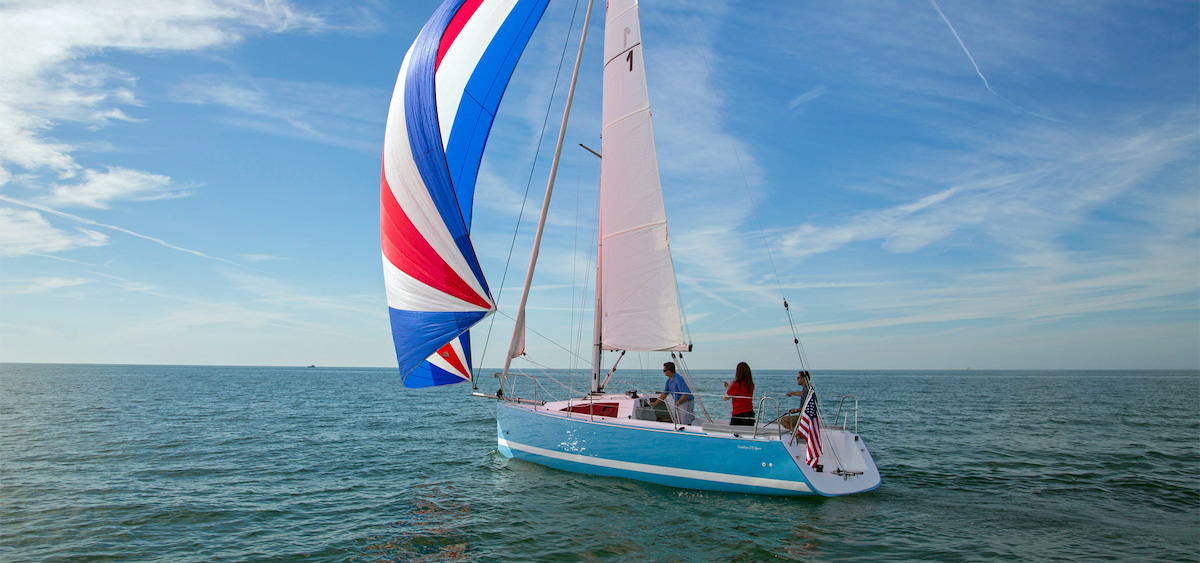
Join Our Newsletter!
Get community news, buying bargains, and how-to guides at your fingertips.

Types of Sails: A Comprehensive Guide
In the enchanting world of sailboat dynamics, where the dance between wind and water takes center stage, the significance of sails cannot be overstated. Like the wings of a bird, these meticulously crafted sails unfurl to catch the slightest whisper of breeze, converting it into a powerful forward thrust that carries us through the vast expanse of the ocean. They are the very essence of a sailboat, the conduits through which dreams and aspirations set sail.
Join us on a captivating voyage as we unfurl the secrets of the myriad types of sails adorning the mastheads of sailboats across the globe. From the grandeur of the mainsail, proudly dominating the skyline, to the nimble headsails that steer with precision, and the enigmatic mizzensails that add an extra touch of finesse, we shall embark on a comprehensive exploration of the diverse array of sail types.
Different Types of Sails on a Sailboat: Why Use Different Sails at All?
Different sail types for different wind conditions.
Triangular sails, such as the mainsail and jib, are commonly used on modern sailboats to optimize performance when sailing upwind. The shape of these sails helps to create lift, which propels the boat forward even against the wind’s direction. The mainsail is attached to the mast at the front edge and a boom at the bottom. Jibs, on the other hand, are headsails that are attached to a stay near the bow of the boat.
Balloon sails, like spinnaker sails, are designed for downwind sailing and catching more wind to increase boat speed when sailing with the wind behind it. These types of sails have a large surface area that allows them to catch more wind than triangular sails. Spinnaker sails can come in different shapes depending on their intended use and can be flown from a spinnaker pole or directly from the bow.
Sail Plans: Different Combinations for Different Boats
Sail plans refer to how different types of sails are arranged and combined on a sailing craft. Sail plans can vary depending on specific design features and intended use of boats. For example, some boats may have multiple masts with several triangular-shaped sails attached while others may only have one mast with one triangular sail (mainsail) and one square sail (spinnaker). The combination of different types of sails can also affect how easy it is to handle a boat under certain conditions.
Understanding Sail Anatomy
Head, tack, foot, luff, leech, and clew. These are the different parts that make up a sail’s anatomy. But what exactly are they and why are they important? In this section, we’ll take a closer look at each part and how it contributes to the performance of a sailboat.

The Head: The Top of the Sail
Starting from the top, we have the head of the sail. This is where the halyard (the rope or wire used to hoist the sail) is attached. The head determines how high or low the sail sits on its mast. A higher head means more power but less control over the sail’s shape. Conversely, a lower head provides better control but less power.
The Tack: The Lower Front Corner of the Sail
Next is the tack which is found at the lower front corner of most sails. It’s where one end of a line called a “sheet” attaches to control how much wind enters through this corner of your sail. Adjusting your sheet will affect your boat’s speed and direction.
The Foot: The Bottom of the Sail
At the bottom edge of any sail lies its foot which helps determine its overall shape and size. Generally speaking, longer feet result in larger sails that provide more power while shorter feet result in smaller sails with better maneuverability.
The Luff: The Forward Edge of the Sail
The forward edge of any sail is called its luff which runs along its mast track or forestay depending on what type of rigging you have set up on your boat. It helps maintain proper airflow over your sails by keeping them from flapping around too much in high winds.
The Leech: The Back Edge of Your Sail
Opposite from your luff is your leech – or back edge – which helps create lift by allowing air to flow smoothly over your sail. A longer leech will result in a more powerful sail, while a shorter one will provide better control and maneuverability.
The Clew: The Bottom Back Corner of Your Sail
Lastly, we have the clew which is found at the bottom back corner of most sails. It’s where the other end of your sheet attaches to control how much wind enters through this corner of your sail. Adjusting your sheet here can affect how well you’re able to steer your boat.
Primary Sail Types
The main sail is attached to the main mast and boom and can be adjusted to match the wind conditions. Its main purpose is to keep the boat steady and under control by providing stability to the stern (back) of the vessel.
There are several variations of mainsails that sailors can choose from depending on their needs. One popular type of mainsail is an in-mast furling mainsail. This type of sail can be easily furled and unfurled by pulling a line, making it ideal for short-handed sailing or cruising. Another variation is a slab reefing mainsail, which has horizontal strips called battens that help maintain its shape. Finally, there is also a boom furling mainsail, which uses a roller system inside the boom to make it easier to handle.
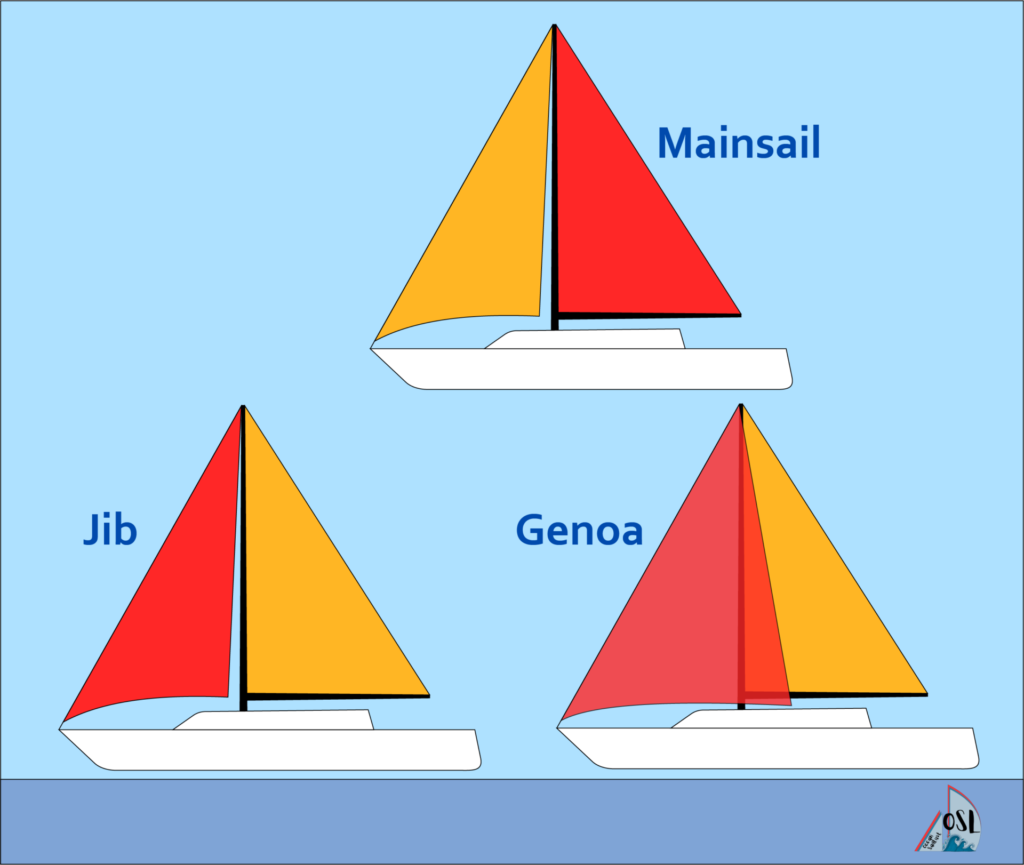
A headsail is any sail located forward of the mast on a sailing vessel. These sails are designed to work in conjunction with the main sail to provide optimal performance under varying wind conditions. There are several types of headsails available, each with its own unique characteristics and purposes.
One popular type of headsail is known as a genoa. This large foresail extends beyond the mast and overlaps with the main sail, providing additional power when sailing upwind or reaching across wind angles. Genoas come in various sizes ranging from 110% up to 150%, depending on how much overlap you want.
Another common type of headsail is called a jib. This smaller foresail does not overlap with the main sail but instead works in conjunction with it. The jib is typically used in higher wind conditions when a smaller sail area is needed to maintain control of the boat.
A staysail is a smaller sail located between the mast and the forestay. This type of headsail is typically used on larger boats to provide additional power when sailing upwind or reaching across wind angles. Staysails are often used in conjunction with other sails, such as a genoa or main sail.
Finally, there is also a mizzensail, which is located aft of the main mast on ketches and yawls. This sail provides additional power when sailing downwind or reaching across wind angles. Mizzensails come in various sizes and can be either fully battened or free-flying.
Lightwind Sails
Spinnaker sails are a type of downwind sail that can be used to increase boat speed when sailing in light winds. They are typically used in wind conditions below 10 knots, which are considered light air sails. Spinnakers come in two types: symmetrical and asymmetrical.

Symmetrical vs Asymmetrical Spinnaker
The symmetrical spinnaker is designed to sail directly downwind or with the wind coming from behind the boat. It is shaped like a balloon, with equal amounts of material on both sides of the sail. The sail is attached to a spinnaker pole, which extends out from the mast and holds the sail away from the boat.
Asymmetrical spinnakers, on the other hand, are designed for sailing at angles off the wind. They have an uneven shape, with more material on one side than the other. This design allows them to be flown without a spinnaker pole, making them easier to handle for smaller crews.
Another type of downwind sail is called a gennaker. Gennakers are similar to asymmetrical spinnakers but have a hybrid characteristic between a spinnaker and a genua. They are designed for reaching or running downwind at higher speeds than traditional cruising chutes or asymmetric spinnakers.
For those who prefer an even more user-friendly option than asymmetrical spinnakers or gennakers, parasailors might be what you’re looking for! A parasailor combines aspects of both a traditional spinnaker and a parachute into one easy-to-use package. The unique design of this sail makes it ideal for use in light winds when other sails may not perform well enough.
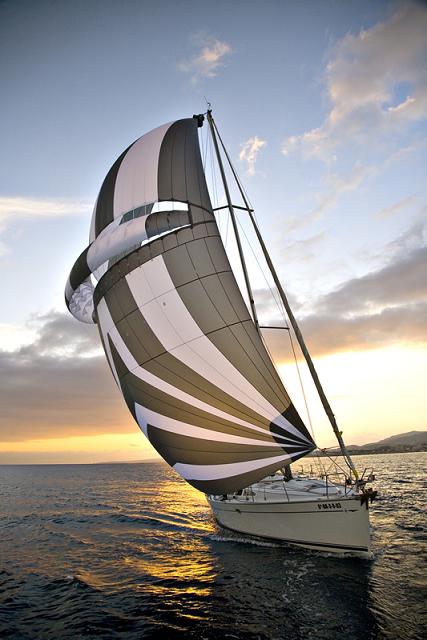
Finally, there’s another type of upwind/downwind sail called the code zero. Code zeros are designed to be used in light winds when sailing upwind, but they can also be used for reaching and running downwind. These sails have a flat shape that allows them to generate lift even in very light wind conditions.
Heavy Weather Sails
Heavy weather sailing is a challenging and potentially dangerous activity. The use of heavy weather sails, such as trysails, is crucial to ensure the safety of sailors and their vessels.
A trysail is a small triangular sail made of heavy-duty material, typically spinnaker cloth or other lightweight fabric. It is designed to be used in stormy weather conditions when winds are high and the seas are rough.
The role of a trysail is to provide an alternative source of propulsion when the main sail or jib cannot be used. In addition, it helps reduce the heeling effect on the vessel caused by strong winds. Trysails are rigged using a separate halyard and can be set up quickly when needed.
A trysail should be used in severe weather conditions when winds exceed 40 knots or more. It is recommended that sailors practice setting up their trysail before they need it so that they can do it quickly and efficiently in an emergency situation.

Another type of heavy weather sail that every sailor should have on board is a storm jib. This sail is typically much smaller than a regular jib and made from heavier materials such as Dacron or nylon. Its purpose is to provide additional stability during high wind speeds and rough seas.
The features of a storm jib include its size, shape, and weight distribution. It has a large luff (the leading edge) which allows it to be hoisted higher up on the rigging than other sails. This helps keep the boat stable during high-speed sailing in strong winds.
A storm jib should be used in extreme weather conditions where wind speeds exceed 50 knots or more. When using this sail, it is important to ensure that the halyard is properly tensioned and that the sail is sheeted in tightly. This will help prevent any unnecessary movement or fluttering of the sail.
Overview Common Sail Types
100% of mainsail
Light – High
100% of foretriangle
Moderate – High
triangular, overlapping
110% – 150% of foretriangle
Light – Moderate
60% – 80% of foretriangle
Close Reach – Broad Reach
Lightwind, Downwind
balloon shape, free flying
200% of mainsail (or even more)
Broad Reach, Running
parachute shape
100% of spinnaker
80% – 85% of spinnaker
Lightwind, Upwind
75% of spinnaker
30% – 60% of mainsail
Mainsail, heavy weather
17.5% of mainsail (or less)
Headsail, heavy weather
max. 65% of the hight of the foretriangle
Unconventional Sails
Wing sails are a type of sail design that is not commonly used in traditional sailboat designs. They are essentially vertical airfoils that generate lift and propulsion by directing the wind over the surface of the sail. Wing sails have become increasingly popular in modern sailing craft, particularly in high-performance racing boats.
One of the main advantages of wing sails is their ability to produce a significant amount of power with very little heeling force. This means that they can be used effectively in high-wind conditions without causing the boat to tip over. Additionally, wing sails are highly efficient at sailing upwind, which allows sailors to point higher into the wind than with other types of sails.
While wing sails may seem like a relatively new concept, they have actually been around for quite some time. The first recorded use of a wing sail was by German engineer Wolfgang Zimmermann in 1959. Since then, many different variations on the design have been developed and tested.

Kite sails are another unconventional type of sail that has gained popularity in recent years. Unlike traditional downwind sails such as spinnaker or parasailors, kite sails are flown from a line attached to the bow of the boat and do not require a mast or boom.
Sail Materials and Technology
Traditional sail materials.
Sails have been used for thousands of years to harness the power of the wind and propel boats across water. Traditional sail materials were flax, hemp, or cotton. These natural fibers were woven together to create a strong, yet flexible material that could withstand the harsh conditions at sea. However, as technology advanced and sailors began to demand more from their sails, new materials were developed.
Modern Sail Materials
Modern sailboats use synthetic materials such as polyester, nylon, or laminated fabrics for their sails. These materials are lightweight and incredibly strong, allowing sailors to achieve greater speeds with less effort. They are also more durable than traditional sail materials and can withstand prolonged exposure to sunlight and saltwater.
Popular Sail and Mast Configurations

The sloop rig is one of the most popular sail plans for modern sailboats. It features a single mast and one headsail, like a jib or genoa. The mainsail is typically triangular in shape and hoisted up the main mast using a backstay to support it. The jib or genoa is attached to the forestay that runs from the top of the mast to the bow of the boat.
Another popular sail plan is the cutter rig, which also features a single mast but has two headsails – an overlapping jib and a smaller staysail. The mainsail is still triangular in shape and hoisted up the main mast with a backstay for support.
Moving onto two-masted rigs, we have ketch rig, which features a main mast and a shorter mizzen mast located in front of the rudder. The mainsail is still triangular in shape and hoisted up the main mast with a backstay for support, while the mizzen sail is generally smaller and triangular or quadrilateral in shape.
Lastly, we have the yawl rig which is similar to the ketch rig but has its shorter mizzenmast located aft of the rudder. The mainsail is still triangular in shape and hoisted up the main mast with a backstay for support, while the mizzen sail is generally smaller and triangular or quadrilateral in shape.
Conclusion: Understanding the Different Types of Sails
Understanding the Different Types of Sails is crucial for any sailor who wants to optimize their performance and safety on the water. Whether you’re racing, cruising or simply enjoying a day out on your sailboat, having the right sails for the conditions can make all the difference.
Ultimately, understanding the different types of sails is essential for any sailor looking to improve their skills on the water. By selecting the right sail for your boat and conditions, you can optimize your performance while staying safe and comfortable during your time at sea.
So whether you’re a seasoned sailor or just starting out, take some time to explore the various types of sails available and find the ones that work best for you. With a little knowledge and experience under your belt, you’ll be well on your way to mastering this exciting sport!
Similar Posts
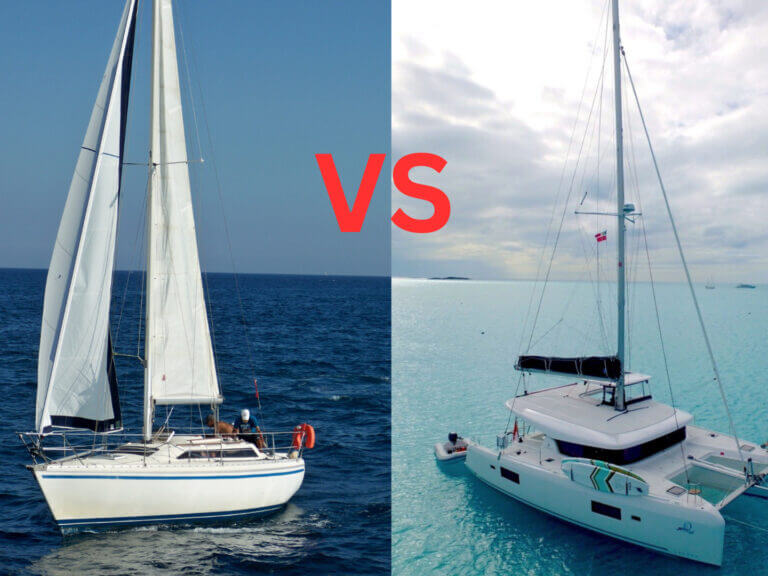
Monohulls vs. Catamarans: Which One is Best for You?
If you’re considering purchasing a sailboat, you might be wondering which type of vessel is best suited for your seafaring adventures. Fear not, for we’re here to help you weigh the differences between monohulls vs. catamarans to make an informed decision. Now, before we dive into the nitty-gritty details of hull design, sail handling, and…

How do Boats Float? Exploring the Science Behind Buoyancy
Sailboats float because the average density of the boat is less than the density of water. When boats displace as much water as it weights, this is known as the buoyancy force generated by Archimedes’ principle. If you’ve ever wondered how do boats float and therefor enable us to embark on thrilling water adventures, you’ve…

Mainsail Furling Systems – Which one is right for you?
With the variety of options of mainsail furling systems available, including slab, in-boom, and in-mast systems, it can be challenging to determine which one best suits your needs. In this comprehensive guide, we will explore the pros and cons of each system, enabling you to make an informed decision that aligns with your sailing requirements….
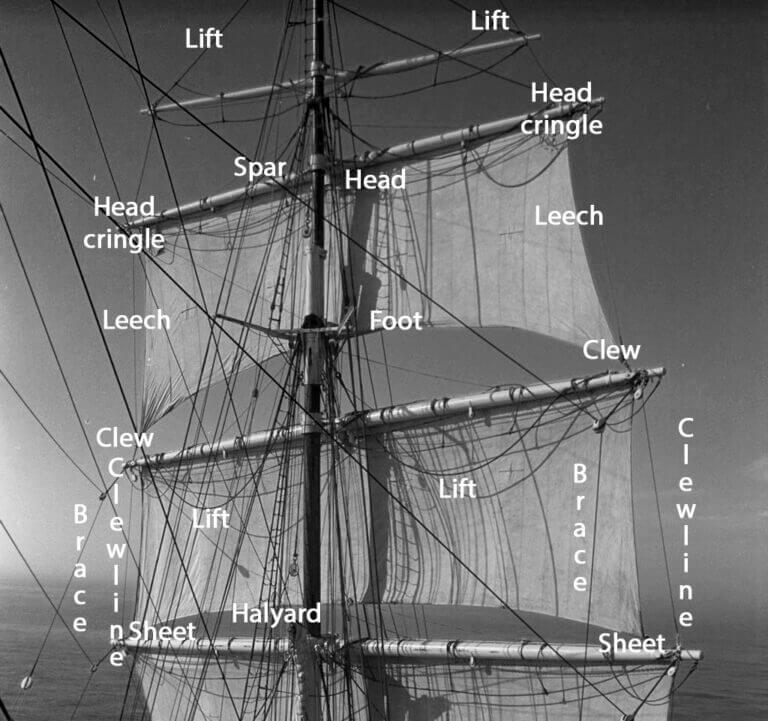
Whats the Difference between Standing Rigging and Running Rigging?
Running rigging refers to the movable lines and ropes used to control the position and shape of the sails on a sailboat. Standing rigging, on the other hand, refers to the fixed wires and cables that support the mast and keep it upright. As the sun rises on another day, we find ourselves immersed in…
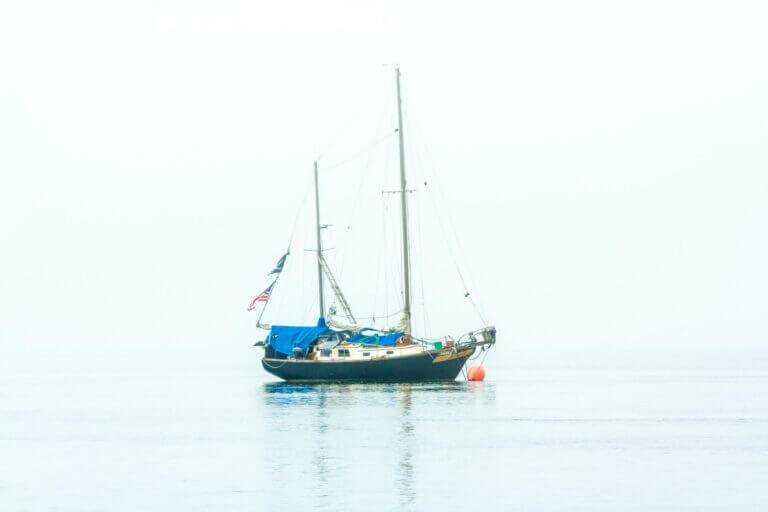
What is a Ketch Sailboat?
Ketch boats are frequently seen in certain regions and offer various advantages in terms of handling. However, what is a ketch and how does it stand out? A ketch is a sailboat with two masts. The mainmast is shorter than the mast on a sloop, and the mizzenmast aft is shorter than the mainmast. Ketches…

Basic Sailing Terminology: Sailboat Parts Explained
Sailing is a timeless activity that has captivated the hearts of adventurous souls for centuries. But, let’s face it, for beginners, sailing can be as intimidating as trying to navigate through a dark, labyrinthine maze with a blindfold on. The vast array of sailing terminology, sailboat parts and jargon can seem like a foreign language…
- New Sailboats
- Sailboats 21-30ft
- Sailboats 31-35ft
- Sailboats 36-40ft
- Sailboats Over 40ft
- Sailboats Under 21feet
- used_sailboats
- Apps and Computer Programs
- Communications
- Fishfinders
- Handheld Electronics
- Plotters MFDS Rradar
- Wind, Speed & Depth Instruments
- Anchoring Mooring
- Running Rigging
- Sails Canvas
- Standing Rigging
- Diesel Engines
- Off Grid Energy
- Cleaning Waxing
- DIY Projects
- Repair, Tools & Materials
- Spare Parts
- Tools & Gadgets
- Cabin Comfort
- Ventilation
- Footwear Apparel
- Foul Weather Gear
- Mailport & PS Advisor
- Inside Practical Sailor Blog
- Activate My Web Access
- Reset Password
- Pay My Bill
- Customer Service

- Free Newsletter
- Give a Gift

How to Sell Your Boat

Cal 2-46: A Venerable Lapworth Design Brought Up to Date

Rhumb Lines: Show Highlights from Annapolis

Open Transom Pros and Cons

Leaping Into Lithium

The Importance of Sea State in Weather Planning

Do-it-yourself Electrical System Survey and Inspection

Install a Standalone Sounder Without Drilling

When Should We Retire Dyneema Stays and Running Rigging?

Rethinking MOB Prevention

Top-notch Wind Indicators

The Everlasting Multihull Trampoline

How Dangerous is Your Shore Power?

DIY survey of boat solar and wind turbine systems

What’s Involved in Setting Up a Lithium Battery System?

The Scraper-only Approach to Bottom Paint Removal

Can You Recoat Dyneema?

Gonytia Hot Knife Proves its Mettle

Where Winches Dare to Go

The Day Sailor’s First-Aid Kit

Choosing and Securing Seat Cushions

Cockpit Drains on Race Boats

Rhumb Lines: Livin’ the Wharf Rat Life

Re-sealing the Seams on Waterproof Fabrics

Safer Sailing: Add Leg Loops to Your Harness

Waxing and Polishing Your Boat

Reducing Engine Room Noise

Tricks and Tips to Forming Do-it-yourself Rigging Terminals

Marine Toilet Maintenance Tips

Learning to Live with Plastic Boat Bits
- Sails, Rigging & Deck Gear
Taming the Main: Sail-Handling Systems for Bigger Mainsails
Dutchman, lazy jacks, and cover-combos state their case for replacing the extra crew member.
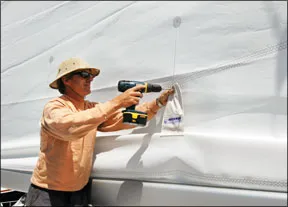
The mainsail continues to be both the heart of most sailplans, and the bane of many short-handed cruising sailors. In its modern bigger-than-ever context, the sail’s overpowering presence can be so daunting to a couple that they daysail their boat with only the jib unfurled. Others spend tens of thousands of dollars to automate mainsail handling—winding it up in a specially designed mast or boom. In addition to being a costly option, these in-spar and in-boom furling systems add more weight and more complexity to the boat’s sailplan, while at the same time, decreasing the efficiency of the sailplan itself. On larger boats, such trade-offs can make sense because the mainsail becomes so large and unwieldy. But for boats in the mid-range, 30 to 45 feet, there are less costly and more sailing-friendly alternatives to wrestling with an uncooperative mainsail.
Market analysis has shown that boatbuyers are indeed looking for bigger boats, and modern rigs that sport larger mainsails than ever before. This trend toward putting more sail area in the mainsail means that one jib can serve a larger wind range, which is most definitely a good thing. But the flip side of this bonus means that handling the larger, heavier mainsail becomes more of a chore, and there are several tasks that must be accomplished in a timely manner. Setting and dousing the sail are the most frequent rituals, but unanticipated reefing and the dreaded thunderstorm-induced fire drill seem to generate the most anxiety.
The best way to get a grip on the situation depends on the skill, number, and agility of the crew. Racing crews and young, fit cruisers lean toward the equivalent of manual “stick shift” transmission on a car—preferring the simplicity of a mainsail equipped only with a halyard, topping lift (or rigid vang support) and slab reefing with no other form of setting or flaking aid. This is the lightest, fastest, least complicated mainsail arrangement, and it maximizes performance when the sail is hoisted and the vessel and crew are happily underway. However, when it comes time to reef, or douse the sail, this configuration can take on the demeanor of a clothesline-hung bedsheet in a gale. Barring significant intervention from the crew, the breeze decides where the leech of the sail will go once the halyard is released, and mainsail reefing and flaking can become a substantial chore.
Lazy jacks, cover/lazy jack combos, and the innovative Dutchman systems have grown in popularity in recent years, offering a more practical, affordable advantage in the battle to tame the main. For a 35-foot boat, prices range from about $250 for a lazy jack kit, $700 for the Dutchman, to anywhere from $800 to $1,500 (not including sail costs) for a lazy jack/sailcover combo. A close comparison of each of these options will provide some valuable insight into taking the gymnastics out of handling a mainsail.
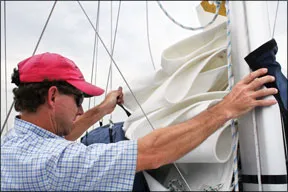
For centuries, sailors have appreciated the value of lazy jacks, a set of lines that act as a sail-gathering guide, catching and coaxing the mainsail into a stack on top of the boom. When the halyard is released, the sail falls in submission on top of the boom as if guided by an invisible hand—at least that how it’s supposed to work when all goes according to plan. And when lazy jacks are properly set up and a few simple guidelines are followed, they are as much a friend to a modern sailor as they were to the short-handed schoonermen who coasted New England. However, in other situations, lazy jacks can snag a batten tip of a sail being hoisted, or on a dark night, a loose lazy jack can even snag a spreader tip just before the crew jibes onto a new tack, resulting in a very different outlook toward the system. In short, this double set of lines is put to use infrequently during a sail, but is permanently carried along for the ride.
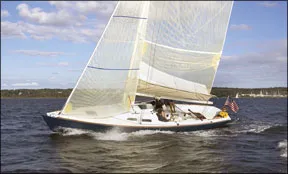
It’s essential that the crew develop a routine for setting and unsetting the “jacks” in order to minimize sail chafe and eliminate and chance that a spreader or any other protrusion is snagged. It’s also crucial to keep the boat head-to-wind or at least have the boom in line with the wind when hoisting sail, and—to a lesser extent—when dousing sail.
Cover/Lazy Jack Combos
Some sailmakers offer a mainsail cover that’s attached to both the boom or sail and a set of lazy jacks. When the halyard is released, not only does mainsail drop to the boom, but it ends up in a cozy hammock-like cover and is just a zipper pull away from being completely stowed. This cover/lazy jack combination goes by several names depending on the sailmaker who builds it. One of the early innovators was Doyle Sailmakers with its StackPack—a combo full-batten main, lazy jack, and Sunbrella sail cover. The lazy jacks are fastened 50- to 75-percent of the way up the spar, and the StackPack is sewn directly to the sail. North Sail’s QuickCover attaches to the boom track but functions like the StackPack. Mack Sail’s Mack Pack fastens to the boom at intervals. Other sailmakers offer slightly different renditions of the cover/lazy-jack combo. All take the sail cover as well as the lazy-jack line system along for the ride.
Naturally, in our world of “no free lunch,” there are always some strings attached, and in this case it’s the lazy jack lines themselves, along with the Sunbrella or other acrylic cover that’s part of the package. In some designs, the “jacks” are kept fairly taught and the cover is raised, while in other designs, the lazy jacks can be slacked and the cover is secured to the boom sides. Once a crew gets the feel for how these additions to the sailplan behave, they become less of an inconvenience.
The Dutchman System
In our testing, we found that the Dutchman system simplifies the lazy jack concept. However, it does mandate some additional sail work and minor rigging additions, but the cost-to-benefit seems a bargain. At the heart of the system are three or four light lines clamped to the topping lift that drop vertically through fairleads in the sail to small tabs along its foot, just above the boom. The mainsail is set up with a series of grommets that allow these lines to be laced through the sail, and when a mainsail has been properly trained to fold along its creases, it simply slides from full hoist to the boom.
The system’s simplicity and functional design utilizes monofilament lines (some owners prefer Dacron) that are all but invisible, and the topping lift that they are attached to is already present on many sailboats. Aboard boats with a rigid vang or high-tech hydraulic vang, a topping lift still can be easily rigged to provide attachment for the Dutchman lines. The best bet is to set up the topping lift to function like a conventional halyard rather than a permanently fixed line near the masthead. One advantage of an adjustable topping lift is that should a mainsail halyard shackle get jammed in the topping lift, you can usually free the shackle by slackening the topping lift.
Once the sail has been lowered, both lazy jacks and the Dutchman system add a bit of complication to snapping a sail cover in place. In the case of the Dutchman system, covering up usually involves a series of small secondary zippers that accommodate the vertical monofilament lines. The traditional lazy jack system may only need to be eased a little in order to put on a conventional sail cover. Unfortunately, lazy jacks can also complicate mainsail hoisting by trapping batten tips as the sail gently flogs during the hoisting process. Many sailors prefer to ease the lines and gather the tackle together just behind the spar, keeping it there until it’s time to douse or reef the sail. Care must be taken to ensure that the lazy jacks are stowed tightly. Many a newly painted mast has been dinged by the small blocks used in lazy jack tackle, hardware that can slap relentlessly against the mast when a breeze fills in and the lazy jacks have been poorly stowed.

Reefing lines were easy to use on all of the systems we tested. The most user-friendly systems took into consideration the stack height of the cars used on the mainsail track, and incorporated a block, pendant, and jam cleat tack rather than a tack hook to engage the reef point. The real challenge in many of these setups, however, was how a crew could cope with extreme conditions and the need to set a storm trysail. Once again, the Dutchman system, when set up with an adjustable topping lift, provided for the easiest transition to a storm trysail. All that had to be done, once the mainsail was lowered, was to slacken the topping lift and gather up the loose monofilament line—this cleared the area aft of the mast and allowed the storm trysail to be easily set.
Mainsails up to about 250 to 300 square feet are easy enough to handle that flaking aids are optional rather than essential. Over this size, and up to about 500 square feet, any of the three options mentioned can be as valuable as an extra crew member. However, we found that the Dutchman system did get our most enthusiastic nod of approval, even though all three systems certainly improved mainsail handling significantly. Our testing revealed that the single set of mainsail-penetrating lead lines of the Dutchman system provided a more positive guide for the mainsail, directing it into a neatly flaked stack on the boom with fewer strings attached.
The fact that each of these approaches allows a crew to use a well-cut conventional mainsail is a big plus. There’s no need to succumb to an overly flat, roachless, in-mast furling mainsail, or a furling boom as heavy as an extra crew member. There is a point however, where the sheer size of the mainsail makes a mast or boom furling system a preferred option, and in a future issue, we will take a fresh look at how mast and boom-furling systems stack up and what new features they offer.
- Mainsail Solutions
- Ups and Downs of Mainsail Systems
RELATED ARTICLES MORE FROM AUTHOR
11 comments.
My wife and I found that a post mast furler was the answer on our 48’ ketch. We were East Coast sailors from Maine to the Bahamas. When there were just the two of us we usually sailed jib and jigger. We sailed “Whimsy” for twenty yeaars and only the last three with the post mast furler. We sold her with my 80th birthday and my wife’s approaching disability. I wish we had installed it 15 years sooner.
A sailmaker recommended the Dutchman for my International Folkboat since I mostly sailed singlehanded, and I was pleased with the results. I was able to hoist, douse and reef the main with relative ease. It does require some changes to the sail cover, but it was totally worth it.
Main sail up and down is greatly improved with a more better system than traditional Sail Lugs. Install Track with Ball Bearing Cars and Main goes up quickly and down under control. Throw sail ties on and Cover when Safe!!!
We have a large full baton main with 20’ boom and 64’ mast on our ketch. Taming it was a priority for the two of us as scrambling across our wheelhouse roof grabbing at the flapping sail and swinging boom seemed really dangerous. We sewed our own Stack Pack system taking a mix of the best ideas from Sailrite’s DIY instructions, the Mac Pack and Stack Pack systems. If you are into sewing canvas work and really like planning and designing this is a great project where you end up with something better than you can buy. We sewed in custom straps so it can be totally rolled and stowed on the boom when on sails longer than a day or two to prevent chafe.
One item that really makes it work well for us is the 20’ long #5 zippers we got from Paskal in Australia. Very expensive to ship to the USA, but worth it. These zippers are twice the size of the #10 zips that you see on most canvas work and open completely like a jackets zipper. Advantages are the stainless pulls do not bind and salt does not affect the zippers operation. The best advantage is it zips closed starting from the mast running to the boom end so helps compact and stuff the sail as it closes, this is the opposite direction of all other zipper systems and a big reason it works well. We can open the sail cover fully while standing clipped in at the mast in about 15 seconds using the “laundry line” pully system attached to the zipper pull. When stowing also while at the mast, we get it about ¾ closed in the same 15 seconds before it jams on some sail folds sticking out that need a simple tuck in to get the zipper past. Still much easier, safer and quicker than before. And getting up on the wheelhouse roof is rarely if ever needed. If you have a very tall boom with hard access, I would consider the Paskal zipper installed this way. The stack pack also “automatically” holds and stows the three sets of slab reefing lines which used to be a spaghetti mess on the wheelhouse roof.
One other thing that really helps with taming our large main is that we have all halyards and slab reefing on the mast, old school style. With our set up I can jump the main up to within about 2 feet of the top in less than a minute before having to wrap the halyard on the dedicated self-tailing winch (mounted on the mast) to winch the last foot or two and do the final tensioning. By raising it fast, and having a clear view of the process, catching a baton end on the stack pack’s lazy jack lines is rarely a problem and easily fixed. I can do this solo (using the Pelagic autopilot remote fob for keeping the boat turned into the wind) with this very large full baton sail because I removed the halyard clutch from the mast that was adding too much friction. Friction is now only from the single sheave at the top of the mast (and the regular sail slugs). I feel sorry for all the more modern boats with all lines led back to the cockpit where you have to slowly grind up the majority of the main. Ditto for the one in-mast furling system I tried which seemed to be a delicate two person grinding operation to prevent binding the sail as it is wrapped up hidden inside the mast. Typically, you have to go to the mast to sort something out anyway, so why not consider doing everything at the mast if you have a good safe jackline tether system. Sheaves, blocks and clutches add a huge amount of friction (and expense). Experiment without them and see what you think.
Since I am a sewing fool, I also made large custom rope bags mounted on the mast just below the winches to store the halyard tails. They are mesh at the bottom for drainage, made of a stiff rubberized fabric and are about 8” diameter and 16” tall with a Sunbrella draw string top. With the top of the bag opened all the way I drop the halyard in as I jump the sail up. When the main is up and all the excess halyard is stuffed in the bag, pull the drawstring top closed. When you drop or reef the main the halyard automatically feeds out the smaller drawstring opening without any twists or snarls. And no pile of spaghetti at your feet to get tangled in. No coiling or flaking of the main halyard needed. I like this safe and very time efficient system so much I am rigging smaller rope bags for other reefing and furling lines tails around the boat. The key is keeping the bags diameter just small enough to not let the rope double back inside it and get snarled. For ½” halyard the 8” diameter seems about right.
Sometimes simple, fast, and easy is also safer.
In addition to the jacks/cover systems, I found the Tides marine sail track/slides system a HUGE help. As a senior, I could hand over hand haul my full batten main all the way up on my Cal ll-46. With ease. Then just a quick single crank for tension. To drop the sail, free the halyard and it would literally drop into the cover. Good enough till you anchored or docked. Then finish tucking in and zip! And you don’t even have to go up the mast to install it. Just slide over old track and fit the new slides on the mail.
Great tips and tricks in this thread. Reduction of friction with ball bearing mast head sheaves as well as ball bearing mast slide systems from manufacturing source you like best are massive improvements. I sail a 24.5 meter schooner mostly single handed. Hoisting and reefing are both easily accomplished with above systems with a simple set of lazy jacks. Just remember to tighten them well before lowering the main Leeward lazy can be slacked and taken fwd prior to hoisting with wind 20 to 40 degrees off the bow to keep any boom movement away from deck crew Have fun out there
We have a Dutchman system, which uses a topping lift halyard attached to a line looped through blocks. The line runs through the Dutchman clamps. We have been able to adjust the clamps position on the loop so that it is now “set it and forget it.” We do loosen the topping lift halyard (to a point we’ve marked on the halyard) once the main is raised so the topping lift isn’t constricting the boom/sail. When coming in, we tighten the halyard (to our other mark on the halyard) so that the Dutchman system is more taught and ready to do its job. The main drops and flakes itself pretty neatly. Also, some have mentioned issues with raising their main (jumping it at the mast, rather than cockpit pull, etc.). On our C320, we can pull the main up from the cockpit to within about two feet and then crank the cabin top winch from there. I’ve had two Dutchman systems in two different harbors, and one issue is that the monofilament line collects dust from the air. With enough dew, the water and dirt run down through the holes in our sail cover and then stain the mainsail at the point of the Dutchman grommets. I recently tried a new fix: I took some squares of an old blue T shirt (same color as sail cover) and wrapped them around the fishing line and into the holes to try to intercept the “mud.” We’ll see how it works.
Our 48′ ketch was equipped with lazy jacks when we bought her but I disliked them. They seemed to frequently be in the way or they were tapping (sometimes banging) against the mast when retracted. If left deployed, they could tap or smack against the main. I removed them and didn’t regret it.
During our 8-and-a-half year circumnavigation, I couldn’t count the number of times I tucked a reef in or shook one out but if I had a dollar for every time, I’d still be poor but I would have a lot of dollars. I got to the point where I could go up to the mast, tuck a reef in and return to the cockpit in just a few minutes, our old fashioned sail slugs notwithstanding. Very heavy weather took longer. Among those in our informal ‘fleet’ with in-mast furling, every single boat had problems with getting the sail jammed at one time or another. On my boat, I prefer to keep it as simple as possible.
Fair winds and calm seas.
In my personal experience, I have come to dislike the ubiquitous “Sail Pack”. I sail on a wide array of vessels and find them very problematic. I understand that if all the details are worked out they can become more stream lined but it is a rare instalation that is set up well and then maintained. My complaints are: Most systems are difficult to stow while sailing, requiring extra steps after the main is hoisted, leaving a messy bag flopping and beating about the foot of the sail. It chafes itself to death. The system hides the foot of the sail during reefing, leaving the crew guessing whether or not the reef is all the way in, over tensioned, or caught on a fold in the sail etc. They get in the way of all other maintenance and work. They add friction to the reefing system. They are often more difficult to close than just putting a sail cover on, so they are left unzipped and UV damage ensues. I recently sailed a 40 plut foot Sloop that has a new name brand sail pack installed by the loft. At the end of the sail it only took 3 experienced men 10 minutes to get the main stowed in the pack making me wonder where the labor savings was hiding. Somewhere under the sailpack no dought.
I like simple dependable systems and the 20 or more sail packs I have used were all more trouble than they were worth.
I realise you have said you intend to cover in-mast furling in a later edition. I have a 43ft boat with in-mast furling. The original was 34 sq m (366 sq ft) with negative roach and appalling shape after 12 years. I had this changed to a new vertically battened sail 41 sq m (440sq ft) with positive roach which is actually a fraction larger than a conventional fully horizontal battened sail for my model which would have been 38 sq m (410 sq ft). So i have a much better shape and control than the original and is 20% greater sail area than the original and in fact 9% larger area than a conventional horizontally battened sail. None of the complications of lazy-jacks/Dutch system etc and all managed from the cockpit with an electric winch. Has never, ever, jammed. What’s not to love?
My wife and I, now in our mid-to-late 50’s have sailed our 42′ sloop for >20 years. In the beginning it had a dutchman system that significantly simplified mainsail handling. About 5 years ago we installed a Leisure Furl in-boom furling system. We love it. It’s dramatically safer and will undoubtably extend our ability to manage the 370 sq ft main. We reef sooner and more often and neither of us have to even be on the high part of the deck (or steps on the base of the mast) to secure it! It was well worth the hefty cost which we coordinated with replacing the mainsail.
LEAVE A REPLY Cancel reply
Log in to leave a comment
Latest Videos

Island Packet 370: What You Should Know | Boat Review

How To Make Starlink Better On Your Boat | Interview

Catalina 380: What You Should Know | Boat Review
- Privacy Policy
- Do Not Sell My Personal Information
- Online Account Activation
- Privacy Manager

The Different Types Of Sails And When To Use Them – Complete Guide

Sail forms an integral part of a sailboat. When you sail on the open water and observe other boats (in various sizes), you’d have noticed how each boat type has a specific model of sail. If you’re a beginner in boating, you must know that there are a ton of different sails and they each have their own purpose.
As a general setup, sailboats will use three common sails, including headsail, mainsail, and specialty sail. Due to the varying wind conditions and the model of the sailboat, there are many types of sails including jib, genoa, trysail, storm jib, code zero, gennaker, and spinnaker.
While that sounds like too many models of sails, you can easily differentiate between them and choose the ideal model based on your purpose. This article guides you on this aspect. Let’s begin!
Different Types of Sails & When To Use Them
1. mainsail.
Mainsail is by far the most widely spotted sail model, and it’s usually fixed to the boom and fitted behind the mast. This offers the highest mileage to your sailboat, thereby maximizing speed and performance.
You can use a mainsail if:
- You’re concerned about the performance
- You need to go faster and utilize all wind power
- You need to steer your boat irrespective of the wind’s status
- You’ve a large boat and can offer adequate space to this sail.
This mainsail displays a wide surface area to make the most out of the available wind condition. As a result, you can steer your boat quite easily. However, the downside is its size. It is very large and hard to store if you need to take it down for some reason.
Check out my other article all about maintaing sails!
2. Headsail
Similar to a mainsail, it’s very easy to spot a head sail. Just look at the bow of the boat and see if there is a sail. If you see one then yes that’s a headsail. Also called a jib or genoa, a headsail is smaller in size compared to a mainsail and attaches in front of the mast to the forestay. The Foresail will not have a boom for the clew of the sail to attach to. The clew will be attached to the foresails sheet. It can be used without the mainsail in certain conditions but for the most part the two sails are used together. The foresail is always forward of the main.
The headsail comes in many different forms such as a jib, genoa, spinnaker or storm jib. The most common headsail is a jib or genoa.
You can use a headsail if:
- Your sailboat is set up for it.
- You don’t want to use the mainsail at this time.
- Your mainsail is not usable.
The biggest advantage of a headsail is the option to protect yourself even if the wind turns unpredictable or wild. This all depends on the type of headsail you are using.
So, what are the different types of headsails? Let’s take a look!
As more boaters chose to use a headsail for their boats, the jib was introduced as one of its forms. The Jib is a form of headsail that is attached to a shackle present on the deck’s front region.
The Jib is a sail that does not go past the mast when it is raised and in use. If it goes past the mast then you probably have a genoa.
You can use a jib if:
- You are out for a normal day of sailing in moderate wind speeds
- You have a roller furling. Which is a sail that wraps up around itself.
Some weather conditions can make maneuvering harder or tighter than usual. As a result, it’s essential to use a jib in such cases. It functions well with boats containing a roller furling as the jib handles different positions and tackles the movement of the boat at ease.
2.2 Genoa
Just when you’ve got acquainted with the jib, genoa comes into the picture as a larger version of the jib. If you’re boating along a coastal region, the genoa sail is the one widely used and is attached to the front area of the deck as well.
Here’s a quick trick to find out if a boat has a genoa sail. This genoa is usually larger than a Jib. This means that the genoa effortlessly overlaps and extends itself beyond the mast, thereby covering the mainsail as well.
You should use a genoa sail if:
- You’re planning to sail in minimum wind conditions. Less wind means you need more sail.
- You find the wind to originate from the rear area.
- You own a large boat. Remember that genoa can partially or completely cover the mainsail too. Larger sails for larger boats!
While it’s great for sailing in regular conditions, there are downsides associated with it. A genoa can put you in a dangerous situation if you are sailing in high wind conditions and don’t have the ability to furl in the sail. Furling in the sail will reduce the area of the sail and catch less wind.
Genoas do come in many sizes as well such as 110% or 120%.
The next section of the sail list are ones that aren’t necessary but can be helpful in certain situations. Let’s look at specialty sails!
3. Specialty Sail
While headsails and mainsails are quite commonly used, there are also specialty sails in the market to address specific requirements. Some of the widely seen specialty sails are spinnakers, storm jibs, and code zeros.
3.1 Spinnakers
Spinnaker is a sail dedicated to downwind and is quite large. Think of a beautifully covered parachute.
It’s easy to spot spinnakers as they resemble kites or parachutes. However, it crosses the bow of the boat and isn’t attached to the forestay.
Unlike the genoa sail that covers the mast, a spinnaker fails to do so. The advantage of a spinnaker is the surface area. When the wind is light, the spinnaker can catch a lot more wind giving you more speed. The Spinnaker is usually fixed to three points – pole, halyard, and sheet.
You should use a spinnaker if:
- You have minimal wind on a run.
- You are trying to harness as much wind power as you can.
While it has a wide surface area, the downside is its inability to steer the boat during strong wind conditions. It can even put the passengers at risk when the wind is at high speeds.
Make sure you have experience before trying out the spinnaker.
3.2 Storm Jibs
Storm jib is another type of specialty sail meant exclusively for rough weather. It’s a tiny, triangular structure that helps during offshore racing or cruising. Just think of it as a smaller jib.
You should use a storm jib if:
- You’re going to sail in heavy weather conditions.
- You anticipate high wind speeds.
- You’re going to be in an offshore race and they are an approved sail type.
Note: In the case of an offshore racing requirement, it’s critical to take prior permission from the regulatory authority for using a storm jib.
3.3 Code Zeros
Code zero is another updated version of a spinnaker that’s meant to be a combination of genoa and gennaker sails. It resembles the look of a genoa but is a lot bigger.
You should use a code zero if:
- You’re looking for an overlapping flying headsail.
- You’re sailing only in light air conditions.
- You’re looking for an alternative to a Genoa.
Having said that, a code zero or a screecher does the job of a genoa with better efficiencies.
3.4 Trysail
Trysail is another type of specialty sail that’s tiny, triangular, and can be fixed right above a gooseneck on the sailboat.
The Trysail is less known in the market as most boaters go ahead with common mainsails and headsails. It’s essential to acknowledge trysail as a front-and-aft mainsail model. It offers excellent performance and contains a permanent pennant in it.
You should use a trysail if:
- You’re sailing in heavy weather conditions.
- You’re looking for a storm replacement.
- You are experienced with using them.
The quadrilateral sail in a trysail is usually turned and bent to a mast, and this helps in heading the vessel during windy conditions.
3.5 Gennakers
If you’ve been able to spot genoa and spinnaker in the past, identifying a gennaker is incredibly easy. A gennaker is a hybrid sail form that is small, slow, and requires no pole attached to the mast.
You should use a gennaker if:
- You’re looking for a smaller version of a spinnaker.
- You’ve no space to fix a pole to the mast.
- You require the sail to be easily manageable.
- You’re sailing in a region requiring minimum downwind levels.
Choosing a hybrid sail has a lot of benefits as it combines the usefulness of 2 sail models. However, being aware of their cons is critical to planning a safe sail.
As you begin using these sails, you can also look for better customizations. There are drifters, wind seekers, and other jib types that are meant to handle different wind conditions.
How Many Sails On A Sailboat ?
In general, a sailboat contains two sails. Two sails is the typical setup for the best performance of the boat during different wind conditions. It’s essential to pick your two sails based on your sailing plan.
Why Are There Two Sails On A Sailboat?
A sailboat uses two sails because the wind left over by the first sail is easily caught by the second sail. This helps in steering the sailboat to a better extent and gives the sailboat more power.
Final Thoughts
Sails are one of the major assets of a sailboat. From managing wind to maximizing the performance and longevity of a sailboat, the type of sails you use, plays a huge role. From the various sail types listed in this article, you can choose the best model that fits your sailing routine. Just make sure to remember to check and make sure they are the correct size for your vessel.
Make sure to plan ahead and have the right sails for your sailing weekend. Cheers!
Boatlifehq owner and author/editor of this article.
Recent Posts
Sailboat Racing - Rules & Regulations Explained
Sailboat racing, a blend of skill, strategy, and adherence to intricate rules and regulations, offers a thrilling and intellectually stimulating experience on the water. Navigating through the...
What is the best sailboat to live on? Complete Guide
Embarking on the journey of living aboard a sailboat requires careful consideration of your budget, desired amenities, and storage options. This guide offers a concise, step-by-step approach to...
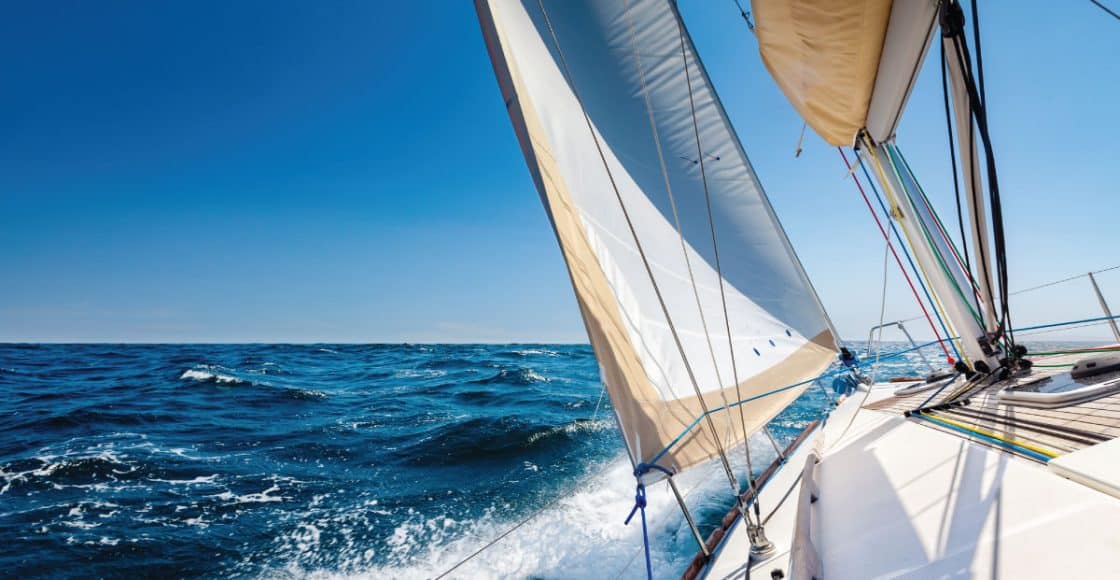
How Sails Work: Understanding the Basics

Table of Contents
Sailing is all about physics and geometry but don’t worry, it’s not too hard to learn. Once the theory is down, it’s all a matter of practice. Let’s look at what sails are and how they work.
Book a sailboat rental & set out on your next expedition
Aerodynamics, hydrodynamics & modern sails
Sails work like airplane wings, except they’re vertical rather than horizontal. As the wind hits the front of a curved sail, it splits, passing on both the downwind (leeward) side and upwind (windward) side.
The leeward wind travels farther due to the curvature of the sail and creates a low-pressure area while the windward wind travels a shorter distance and reaches the aft end faster – together, they create aerodynamic lift that “pulls” the boat forward .
The keel or centerboard in the water below the hull prevents the boat from being pushed sideways. With the lift of the sails and the lateral push or hydrodynamics of the keel, the boat is propelled forward. Where the wind concentrates force in the sails is called the center of effort, while the keel below is called the center of lateral resistance.
Most modern sailboats have a forward (or headsail) and a mainsail. The headsail may be called a genoa, jib, or staysail (different sizes) and is attached at the top of the mast and leads down at an angle to the bow . It’s controlled by lines called sheets. The mainsail is supported by the mast and is attached at the bottom to a lateral spar called the boom.
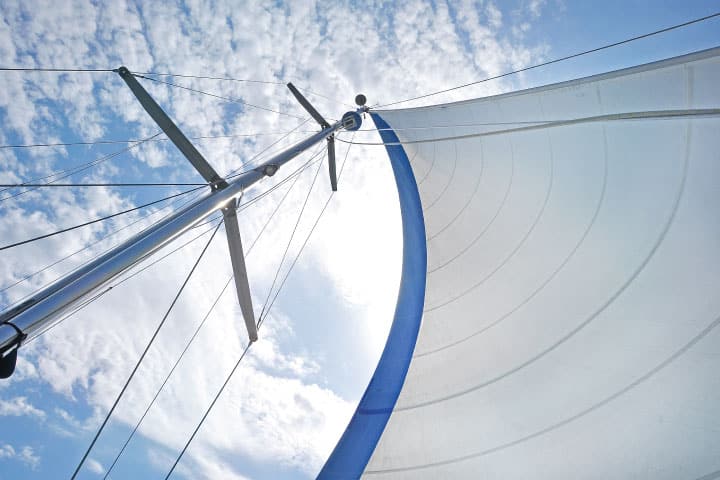
Parts of a sail
Sails come in various shapes, but for our purposes, we will focus on modern, triangular sails. The top of the sail is called the head , and the bottom is the foot. The forward end of the foot is the tack, and the aft end is the clew. The forward edge of the sail is the luff, and the aft end is the leach.
Telltales or short strands of yarn are often attached near the leading edge of a sail to help with sail trim. The shape of the sail is ideal when the strands on both sides are streaming back at the same level, which indicates that wind is moving evenly along both sides of the sail.
READ MORE: Parts of a Sailboat
Points of sail
A boat cannot sail directly into the wind– instead, it sails at an angle to the true breeze. Close hauled is roughly 45 degrees off the wind, close reach is 60 degrees, beam reach is at 90 degrees, and a broad reach is approximately 150 degrees off the wind.
When moving directly or dead downwind, a boat is said to be running, and when the bow is pointed into the wind, that’s called being in irons. A boat cannot sail in irons and can be hard to control when running. When sails begin to luff at the leading edge, the boat is trying to sail too close to the wind and will stall.
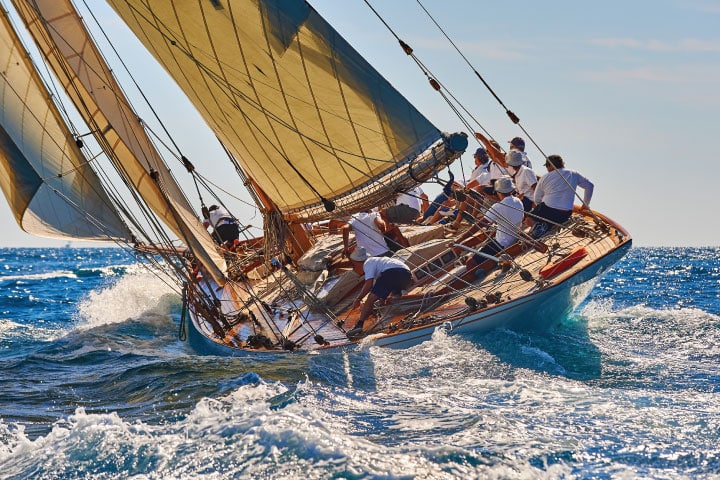
Tacking and jibing (gybing)
A boat changes direction by either tacking or jibing. Sailing upwind, a boat tacks when the bow passes through the eye of the wind until the boat is sailing on the opposite side or “tack” creating a zig-zag course. When sailing downwind, the boat jibes when passing the stern through the wind.
Turning upwind is called heading up and turning away, or downwind is falling off. When the wind passes over the starboard rail first, you’re on a starboard tack and vice versa.
Pro Tip: You can learn how to sail without owning a sailboat. Find a sailboat rental near you , then book! You can save that boat listing and book again to continue practicing.
Sail shape & angle
Boats sail in true wind (the wind that is actually blowing at a given speed and angle) by they’re actually responding to the apparent wind (the angle and speed of the breeze that is felt once the boat is moving). The wind always changes speed and angle, so sails must be adjusted or trimmed in response to the boat to maintain optimal speed.
When sailing upwind, the sails are sheeted in (made flatter by pulling in the sheet lines) to create better foils and greater lift or pull. When sailing downwind, sails are usually loosened or let out to create a “belly” and adjusted to be as perpendicular to the angle of the wind as possible.
Sheeting in (bringing the sails closer to the centerline) enables the boat to point higher (sail closer to the true wind) while easing out (loosening the aft end of the sail) creates more power when the wind is aft like around the beam or broad reach.
A boat is more likely to heel when sheeted in and sailing upwind. Excessive healing doesn’t mean the boat is traveling faster. In fact, it may just be getting overpowered and becoming less efficient than if the sails were trimmed properly.
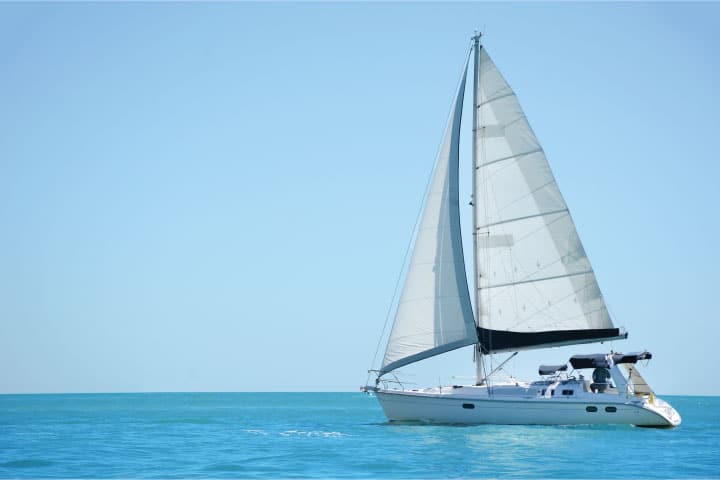
In high winds, shorten or reef sails so the boat doesn’t become overpowered and potentially dangerous. Reefing is done at the tack and clue or the forward and aft parts of the foot of the sail. There may be 1-3 pre-rigged reefing points controlled by reefing lines, so the sails can be made as small as necessary to keep the boat from heeling too far.
Easy to learn
Trimming sails takes time to master; let sails out until they luff or flap, and then sheet in until you feel the boat pick up speed. Smaller boats react quickly to each adjustment and are better for new sailors to learn on than large boats that take a minute to speed up or slow down. Once you’ve mastered the theory, you may spend years perfecting your sailing skills.
Boatsetter is a unique boat-sharing platform that gives everyone— whether you own a boat or you’re just renting — the chance to experience life on the water. You can list a boat , book a boat , or make money as a captain .
List. Rent. Earn— Only at Boatsetter

Zuzana Prochazka is an award-winning freelance journalist and photographer with regular contributions to more than a dozen sailing and powerboating magazines and online publications including Southern Boating, SEA, Latitudes & Attitudes and SAIL. She is SAIL magazines Charter Editor and the Executive Director of Boating Writers International. Zuzana serves as judge for SAIL’s Best Boats awards and for Europe’s Best of Boats in Berlin.
A USCG 100 Ton Master, Zuzana founded and manages a flotilla charter organization called Zescapes that takes guests adventure sailing at destinations worldwide.
Zuzana has lived in Europe, Africa and the United States and has traveled extensively in South America, the islands of the South Pacific and Mexico.
Browse by experience

Explore articles
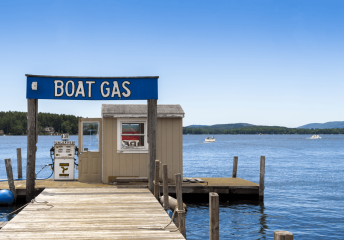
Boat Fuel Consumption: 5 Tips for Measurement, Efficiency, and Savings
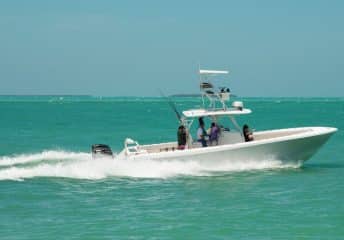
5 Best Fishing Destinations Along Florida’s Gulf Coast
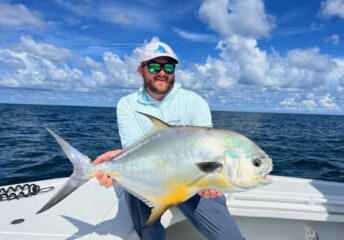
Tampa Bay, St. Petersburg, & Clearwater Fishing Reports (March 2024)
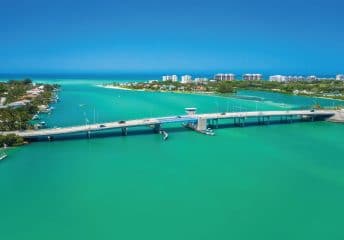
Sarasota Boating Guide

What is a Sailboat Mainsail?

Last Updated by
Daniel Wade
June 15, 2022
A sailboat mainsail is a primary sail used for propulsion. The mainsail is also usually the largest sail on the boat.
The mainsail on a typical sailboat is located on the aft section of the mainmast. This means it 'points' towards the stern of the vessel. The mainsail is usually the largest in terms of sail area, but sometimes other sails (like the spinnaker) are larger.
Table of contents
What does a Sailboat Mainsail Do?
The mainsail catches the wind and propels the boat forward. In essence, it captures the force of the wind and transfers it to the boat. The keel (or centerboard ), rudder, and mainsheet control how the mainsail moves the boat.
What does a Sailboat Mainsail Look Like?
The mainsail is a tall piece of fabric with at least three sides. Mainsails are generally white and located 'behind' the mast and towards the cockpit of the boat. When stowed, the mainsail is often wrapped around the boom and covered by a protective cloth case.
Sailboat Mainsail Types
When most people think of a mainsail, they picture a tall triangular white canvas with a right angle. This representation is accurate to most vessels, but not all mainsails are shaped like triangles.
On a typical cruising sloop, you'll find one of two kinds of mainsails. The most common type of mainsail is tall, triangular, and somewhat narrow lengthwise. The triangular shape belongs to the Bermuda rig, which is a popular and stout sail plan.
Some vessels have a four-sided mainsail that increases in height towards the end of the canvas. This is called a Gaff rig, and it's especially common on older and traditional vessels. Due to its greater area-to-height ratio, the mainsail on a Gaff-rigged vessel can use a shorter mast.
Both Bermuda and Gaff boats have a boom at the base of the sail. However, Gaff-rigged sailboats also utilize a smaller spar at the top of the mast, effectively 'enclosing' three of the four sides of the mainsail.
Parts of a Sailboat Mainsail
Complete sailboat mainsails are a single piece of fabric, but they're made up of many individual parts. Mainsail parts and nomenclature varies between rigs. Here are the primary parts of a common Bermuda-rigged sailboat mainsail, listed from boom to head.
The mainsail tack on a boat is the bottom corner of the sail. The tack is located at the base of the only right angle, which lies above the point where the boom and mast intersect.
The foot of a mainsail runs lengthwise along the bottom of the canvas. The boom lies directly underneath the foot of the sail and extends just a touch further than the foot.
The clew is located opposite of the tack on the other end of the sail. Like the tack, the clew resides on the bottom of the sail and directly above the boom.
The luff is the forward vertical section of the sail that stretches from the clew to the head (top). The luff runs along the mast and sometimes feeds into the mast via sliding guides.
Battens are reinforced canvas straps that run lengthwise across the sail at regular intervals. You'll notice these cross-sections immediately, especially when the sun is behind the sail. Battens help the mainsail retain its shape and strengthen it.
Reefing points
Reefing points are located between battens. The mainsail usually has several sets of reefing points, which consist of a grommet and a small piece of reinforcing material. Reefing points allow you to shorten the sail and tie the excess to the boom. Reefing is useful during high winds when less sail area is necessary.
Telltales, which are often located near reefing points , are small, lightweight strips of material that help you determine which direction the wind is blowing. Telltales are distributed up and down the sail, and there's usually a few on each side.
The leech is the long side of the mainsail opposite to the luff. The leech, which is located on the after part of the canvas, is the longest side of the sail. This is true on Gaff and Bermuda-rigged vessels.
The head is the top corner of the mainsail. This is the point where the main halyard attaches to the sail and hoists it up to the top of the mast. The head of the sail is the highest point of the luff and the smallest angle on a Bermuda mainsail.
Gaff Mainsail Parts and Differences
The mainsail on a gaff-rigged vessel has many of the same parts as the triangular Bermuda mainsail, but there are some slight differences. Unlike the triangular sail, a Gaff mainsail has an additional side that connects to a spar.
The fourth side of a Gaff mainsail is located on the top of the sail. The leech of a Gaff mainsail extends far above the luff and beyond the head. The tall side of the sail is called the "peak," and it's located directly across from and above the head. The side of the sail between the head and the peak is called the "gaff." The spar runs along the gaff and acts as a second boom.
Mainsail Materials
Sailcloth technology has come a long way, especially in the last century or so. Originally, sailboat mainsails were made of an organic cloth such as canvas. Non-synthetic sailcloth is rare but still available, and it's often made of a mixture of hemp, cotton, and other materials.
Synthetic sailcloth is much more common on modern boats. Most modern mainsails are made of a synthetic material called Dacron. This polyester-based material is strong, lightweight, and long-lasting.
How to Hoist a Mainsail
Hoisting the mainsail brings it to the top of the mast. When the mainsail is up, the boat can catch the wind and begin to move. Before hoisting the mainsail, make sure the mainsail is connected to the boom and the mast at all the proper points, including the sliding sail slugs on the mast. Here are the steps to hoisting the mainsail.
Attach the Head Shackle
Once the sail is hanging on the mast and the boom, attach the head shackle to the grommet (clew) at the top corner of the sail.
Loosen the Mainsheet
As a precaution, loosen the mainsheet so the boom can swing freely. This prevents damage or unexpected movement when the mainsail catches the wind.
Find (and Hoist) the Main Halyard
The main halyard is connected to the head shackle. Take this line and pull it down, or attach it to a winch if it's too difficult. Continue pulling or winching the main halyard until the luff of the mainsail is tight.
Tie Off the Main Halyard
Find a cleat and tie off the end of the main halyard. This will prevent the sail from loosening while underway. Be sure to organize the leftover halyard slack, as you don't want it getting tangled with any other part of the rigging.
Reefing the Mainsail
Once underway, you're likely to encounter a situation where you have too much sail up. When the wind picks up, you'll need to reef (or shorten) the sail and reduce its area. Here are the steps required to reef the mainsail.
Find the Correct Direction
Maneuver the vessel to a close-hauled or close-reaching position. That means the bow of the boat should be roughly 30-45 degrees to the wind.
Loosen the Main Halyard
Loosen the main halyard and free up some slack to work with. Also, release the mainsheet vang.
Reef the Sail
With the main halyard released, pull the mainsail down to the desired reef point. Tighten the reef tack and secure the excess sail to the boom.
Hoist the Sail
Hoist the sail again and secure the main halyard as it was before. Make sure the luff of the sail is tight. Now you're set to resume your course and trim the mainsail as necessary.
Related Articles
I've personally had thousands of questions about sailing and sailboats over the years. As I learn and experience sailing, and the community, I share the answers that work and make sense to me, here on Life of Sailing.
by this author
Sailboat Parts
Learn About Sailboats
Most Recent

What Does "Sailing By The Lee" Mean?
October 3, 2023

The Best Sailing Schools And Programs: Reviews & Ratings
September 26, 2023
Important Legal Info
Lifeofsailing.com is a participant in the Amazon Services LLC Associates Program, an affiliate advertising program designed to provide a means for sites to earn advertising fees by advertising and linking to Amazon. This site also participates in other affiliate programs and is compensated for referring traffic and business to these companies.
Similar Posts

Affordable Sailboats You Can Build at Home
September 13, 2023

Best Small Sailboat Ornaments
September 12, 2023

Discover the Magic of Hydrofoil Sailboats
December 11, 2023

Popular Posts

Best Liveaboard Catamaran Sailboats
December 28, 2023

Can a Novice Sail Around the World?
Elizabeth O'Malley

4 Best Electric Outboard Motors

How Long Did It Take The Vikings To Sail To England?

10 Best Sailboat Brands (And Why)
December 20, 2023

7 Best Places To Liveaboard A Sailboat
Get the best sailing content.
Top Rated Posts
Lifeofsailing.com is a participant in the Amazon Services LLC Associates Program, an affiliate advertising program designed to provide a means for sites to earn advertising fees by advertising and linking to Amazon. This site also participates in other affiliate programs and is compensated for referring traffic and business to these companies. (866) 342-SAIL
© 2024 Life of Sailing Email: [email protected] Address: 11816 Inwood Rd #3024 Dallas, TX 75244 Disclaimer Privacy Policy
No products in the cart.
Sailing Ellidah is supported by our readers. Buying through our links may earn us an affiliate commission at no extra cost to you.
The Most Popular Types Of Sails On A Sailboat
A sloop-rigged sailboat typically features a mainsail, a headsail, and an additional light-wind sail, such as a spinnaker or Gennaker. The mainsail is rigged aft of the mast, while the headsail is attached to the forestay. The two most commonly used headsails are the Genoa and Jib.
The sails are vital parts of a sailboat since you obviously couldn’t sail without them! There are many different sails depending on the type of sailboat and its rig configuration, and we’ll walk through them together in this article.
The different types of sails on a sailboat
We can divide the selection of sails on a sailboat into three categories:
- Standard sails
Light-wind sails
- Storm sails
Each category serves different purposes depending on the vessel’s rig configuration and the sail’s functionality.
The standard sails
The standard sails usually form a sailboat’s basic sail plan and include :
- The Mainsail
- The Staysail
- The Mizzen sail
These sails are the ones that are used most frequently on sloop, ketch, and cutter-rigged sailboats and are usually set up to be ready to use quickly.
Headsails are often rolled up on a furler, while the main and mizzen sail are stored on the boom or furled into the mast.
The halyards and sheets are kept within easy reach, making these sails the primary choice in most situations. Let’s dive further into each of them.
The mainsail is a triangular sail that flies behind the mast on top of the boom . Although it may not always be the largest sail on the vessel, we commonly refer to it as “the main.”
It is a vital sail, and keeping the sail shape trimmed properly on every point of sail is crucial for the stability and performance of the boat.
A Jib sail is a headsail that does not overlap the mainsail. It is typically between 100% and 115% of the foretriangle but can also be smaller. The foretriangle is the triangular area formed by the mast, deck, and forestay. The Jib is often used with a self-tacking system involving a sheet traveler in front of the mast.
This sail is often seen on newer boats with fractional rigs, which typically have a larger mainsail area than the headsail area. However, the Jib is versatile and also used in other configurations.
People often mix the terms Genoa and Jib. Many refer to any headsail as a Jib, which is incorrect. I personally prefer to use the correct terms to avoid confusion .
A Genoa sail resembles a large Jib but extends past the mast and overlaps the mainsail. Genoas are usually larger than 115% of the foretriangle , with sizes ranging from 120% to 150%. They are often used on vessels with masthead rigs and smaller mainsails but are also common on fractional rigs.
The Staysail is typically found on cutter rigs and is set on the inner forestay or cutter stay. It can be combined with other sails, such as a Jib, Genoa, or Yankee, or on its own in stronger winds.
The Staysail is also useful when sailing downwind, as it can be paired with a headsail and extended to opposite sides of the boat using a pole.
The Yankee sail resembles a Genoa and Jib but has a high-cut clew. This shape allows for improved airflow when used with another headsail. The Yankee is often used on cutter-rigged boats in combination with a staysail and is known for its versatility in different wind conditions.
Mizzen Sail
A mizzen sail is similar to the mainsail, only smaller . It is set on the aft mast of a boat with multiple masts, such as a ketch rig. The mizzen sail is usually used to provide balance and stability to the vessel and provides additional power when sailing downwind.
Another handy usage is to fly the mizzen at anchor to keep the bow up against waves and swell.
The light-wind sails are large, made of thin nylon, and typically shaped like a half-balloon. They are a type of headsails that are great when the winds are too light to fill the standard headsail and are often used when sailing downwind.
The four most commonly used light-wind sails are:
- The Spinnaker
- The Gennaker
- The Code Zero
- The Parasailor
They all provide excellent forward propulsion on a sailboat but usually require some extra rigging to be set.
Experienced cruisers love to use light-wind sails in nice weather, but they have a critical weakness to be aware of. These sails easily get overpowered when the wind increases, and I strongly advise being careful and observant of the wind conditions when flying them.
(Yes, I have managed to rip mine on one occasion due to getting overpowered, but that’s a different story…)
Let’s continue and take a closer look at each of the light wind sails.
A Spinnaker sail is a large, lightweight downwind sail used at deep angles between 120 and 180 degrees. It is symmetrical in shape with two clews and is often brightly colored.
The Spinnaker is set by using a pole to extend the sail’s clew to the vessel’s side. Then, a sheet is attached to the other clew and led back to the stern of the boat.
A Gennaker sail combines the characteristics of the Genoa and Spinnaker. It is made of nylon like the Spinnaker but is asymmetrical like a Genoa and rigged slightly differently. The tack is attached to the bow, and the clew has a sheet led aft to the cockpit. The Gennaker can be equipped with a snuffer to make it even easier to set up and take down.
It is popular among cruisers because it is simpler to use than a spinnaker and it doesn’t require a pole. The sail is effective at angles between 90 degrees and almost all the way down to 180 degrees, making it versatile for various light-wind conditions.
A Parasailor is similar to the Spinnaker in many aspects but has some distinct differences. It has a double-layer wing that inflates as the sail is filled with air, creating a batten-like effect pushing the leech out while providing lift to the bow.
The wing also helps to prevent the rolling movements you get with a Spinnaker and the collapsing of the leech that can occur with a Gennaker at deep angles.
This makes the parasailor effective at sailing angles between 70 and 180 degrees dead downwind. Parasailors can be set like a Gennaker when reaching or with a pole like the Spinnaker for running downwind.
A Code Zero sail combines some elements of the Genoa and Gennaker. Unlike the Gennaker, the Code Zero has a different shape, allowing it to be used while sailing upwind.
Another benefit is that it can be used with a furler which makes it easy to roll in and out. However, it can’t replace the Gennaker or Spinnaker entirely, as it is not effective at sailing angles deeper than 120 degrees.
If you see a big yacht with three forestay’s, the forward one probably holds a code zero sail. A bow spirit allows the ability to fly additional light wind sails as well!
Storm Sails
The storm sails consist of a small Mainsail and Jib in heavy-duty materials designed for rough conditions. These sails enable us to maintain speed and stability in the boat in severe weather too strong for the standard sails.
Storm sails are often brightly colored , such as red, orange, or yellow, to make them more visible at sea.
Storm Mainsail
A storm mainsail is used when the reefing setup doesn’t allow the standard mainsail area to be reduced enough to prevent overpowering. The sail can handle rough conditions and is excellent for maintaining stability.
A storm Jib is used when the headsail has been furled to the point where it is no longer effective. It is especially useful for sailboats rigged with a Genoa, as the Genoa gets inefficient when heavily reefed. As the storm Jib is smaller than the standard headsail, it also lowers the center of gravity, making the vessel heel less and become more stable.
Explaining the terms for the parts of a sail
Let us talk some more about sails. The goal is to go sailing, right?
Identifying the different parts of the sails is crucial to understanding which lines go where.
Let’s zoom in on a sail and break down the terms :
The head is the top corner of the sail . Most mainsails have a headboard or plate where the halyard is connected, while headsails use a metal ring. A halyard is a line we use to raise and lower sails with.
The leech is the aft part of a sail , located between the clew and head. We use a combination of the outhaul, main sheet, and traveler to trim and adjust the leech on the mainsail.
The headsail’s leech is trimmed by adjusting sheet tension and angle according to the wind speed and direction. A traveler is a track with a movable car or pulley system for adjusting the position and angle of a sheet, and most sailboats have one main traveler for the mainsail and car tracks along the side decks for the headsail.
The luff of a sail is the front part of the sail between the tack and head. On a mainsail, the luff runs vertically along the mast and along or close to the forestay on a headsail. Headsails are often equipped with luff foam to help maintain their shape when partially reefed on a furler.
Battens are slats or tubes inserted into pockets on the mainsail to help the sail maintain its shape and increase its lifespan . A traditional sail hoisted and lowered on the boom typically has horizontal battens. Vessels with in-mast furling can use vertical battens instead of horizontal ones.
- A fully battened Mainsail has the battens run through the entire sail length from the luff to the leech.
- A standard battened main sail has the battens along the sail’s leech.
Telltales are small ropes, bands, or flags attached to a sail to give an indication of the airflow around the sail. They help us understand how the wind affects the sail and allow us to fine-tune the trim for optimal performance. Telltales are usually found on the mainsail’s leech and in the front of the headsail’s leech.
The clew of a sail is the lower aft corner and where the outhaul is connected on a mainsail. Headsails have sheets attached to their clew for controlling and trimming the shape and tension.
The tack is the lower, forward corner of a sail. On a traditional Mainsail, the tack is attached to the Gooseneck, a hinge in front of the boom attached to the mast.
With in-mast furling, the tack is connected to the furling mechanism. This mechanism is used to roll the sail into the mast.
The headsails tack is connected to a furler drum on the forestay on most sailboats. Vessels using traditional hank-on headsails connect the tack to a fixed point on the bow.
The foot of the mainsail is the bottom portion of the sail between the clew and the tack. It is trimmed using the outhaul, a line attached to the clew, and used to adjust the tension on the foot of the sail. Some mainsail are configured loose-footed, and others are attach-footed.
The foot of the headsail is trimmed by adjusting the tension and angle of the sheets, which are the lines used to control the headsail’s clew. We use cars, or pulleys, to adjust the angle of the sheets and thus the trim of the headsail.
Traditional and less commonly seen sails
We’ve now looked at the most commonly used sails and walked through the different parts of them. But what about the less common ones? The art of sailing has a rich history, with some unique sail designs that we rarely see today.
Read on if you want to peek into some traditional sails, or skip straight to popular sail and mast configurations here.
Square sails
Square sails are rectangular and usually set across a ship’s mast, mostly seen on traditional square-rigged sailing ships and Viking ships. These sails are efficient for downwind sailing and are hung from horizontal spars called yards. Though not as agile as modern fore-and-aft sails when sailing upwind, they were central to naval exploration for centuries. Today, they’re mainly seen on traditional vessels and tall ships, symbolizing maritime heritage.
If you’ve been to Martinique in the summer, you may also have noticed the round skiff sailboats the local fishermen traditionally used for fishing in the Atlantic Ocean with their distinctive big squared sails. Tour de Martinique des Yoles Rondes is a popular yearly event where the locals race and show off these beautiful old boats with colorful sails!
A gaff sail is a traditional four-sided sail held up by a horizontal spar called the “gaff.” They are used on classic gaff-rigged sailboats and allow for a larger sail area with a shorter mast. Gaff-rigged boats were traditionally popular and usually carried 25% more sail area than the equivalent Bermudan rig, making them fast on a downwind run. The Gaff rig could also carry a topsail between the gaff and the mast.
However, they don’t sail well to windward, and modern designs have shifted towards triangular sails for better upwind performance.
Jib-headed topsail
The Jib-headed topsail is a small triangular sail used on gaff rigs and is set between the gaff and the top of the mast.
A lug sail is an angled, four-sided sail that attaches at a point on its top side, making it hang tilted. The sail is simple to use and often found on smaller or older boats. There are different types, like standing, dipping, and balance lugs, each hanging differently around the mast.
The lug sail evolved from the square sail to improve how close the vessels could sail into the wind. Because of their upwind performance, fishermen used them widely in Europe from the seventeenth through the nineteenth centuries.
Sprit sails
The spritsail, with its unique four-sided design, stands out thanks to a diagonal support called the “sprit.” It was traditionally popular in Thames sailing barges due to its ability to accommodate high-deck cargo. These days, it’s primarily found in smaller boats like the Optimist dinghy in a variant called “leg of mutton spritsail.”
The spritsail was also used in traditional wooden boats like the fearing version of the Oselvar wooden boat traditionally used in western Norway.
It is also commonly used by the indigenous Guna Yala tribes in Panama in their dugout Ulu’s up to this day. We saw plenty of them when we cruised along the coast, and some of them approached us to sell us their delicious catch of the day!
Lateen sails
A lateen sail is a triangular sail set on a long spar angled on the mast. It was originally popular in the Mediterranean and on Arab shows, and its design enhanced maneuverability and played a crucial role in historic sea exploration.
The lateen sail was used on lateen rigs, the predecessor to the Bermuda rig – one of today’s most commonly used rigs!
Which brings us to the following topic:
Popular sail and mast configurations
There are many different rigs and sail configurations between sailing vessels. From the old-school square rigs to schooners, gaff rigs, and more. However, this article will focus on the three most popular rigs seen on modern sailboats:
- The Bermuda Sloop Rig
- The Cutter Rig
- The Ketch Rig
The three rigs have similarities and differences between their sail and mast configurations. We’ll walk through each of them to understand how they utilize their different types of sail.
If you want to learn more about other rigs, take a look here .
Bermuda Sloop Rig
The Bermuda sloop rig is the most common rig on modern vessels. It is characterized by a single mast, a triangular mainsail, and a headsail. This rig is named after the Bermuda Islands, where it was developed in the 17th century.
Some of the key features of the Bermuda sloop rig:
- The mast is typically tall and raked, which allows for a large sail area and excellent stabilit y.
- The mainsail is attached to the mast and boom. It is usually combined with a single headsail at the front of the boat, making it powerful and easy to sail.
- The Sloop is usually equipped with a masthead or fractional rig and flies a Jib or Genoa as its primary headsail.
The Bermuda Sloop rig is known for its simplicity, is often used for racing and cruising, and is popular among sailors worldwide.
The cutter rig is very similar to the sloop rig. The significant difference is that it has a single mast and two headsails – a Staysail and a Yankee. The cutter rig is known for its versatility due to the multiple options in sail plans and the double headsail setup.
Some key aspects that separate the Cutter from the Sloop:
- The rig is often more robust than its Sloop sister because of the additional cutter stay and running backstays.
- The mast is located closer to the center of the boat.
- The Cutter has a staysail on the inner forestay and a Yankee sail on the outer. The sails can be used in combination with each other or independently.
- Tacking the headsail between the forestay and cutter stay is more involved than on a sloop.
- The Cutter rig has two similar variations: the Slutter rig and the Solent rig.
Like the Sloop, the Cutter rig is relatively easy to operate. Still, the additional headsail and rigging make it costlier to maintain. It is also less suitable for racing than the Sloop, but the added versatility helps in different weather conditions and makes it an excellent choice for cruisers.
The ketch rig is also similar to the Sloop but has an additional mizzen mast placed further aft of the main mast. Another mast gives it the advantage of even higher versatility in sail plans. The ketch typically uses three sails. The mizzen sail, a mainsail, and a headsail. The mizzen mast also allows it to fly a second light-wind sail.
Here are a few more distinctions of the ketch rig:
- The ketch typically carries a smaller mainsail than a similarly sized sloop and a smaller mizzen sail.
- A small mizzen and a medium mainsail are easier to handle than one large mainsail.
- The additional mizzen sail makes the vessel easy to balance and gives extra stability downwind.
- The ketch usually doesn’t point as close to the wind as the Sloop and Cutter.
The headsail setup on a ketch is generally the same as for the Sloop. But the ketch can also be rigged as a cutter ketch, which gives it the benefits of the cutter rig! The tradeoff with a cutter-rigged ketch is the higher complexity and additional rigging, hardware, and sails required.
Final words
Well done, you now have a good grasp of the most common sails and their strengths. We have discussed a few rigs and how they utilize different kinds of sails in various sail plans. Remember that more sail types, other rigs, and even more variations are available. It is a complex topic, but this guide covers the basics and gives you a great starting point.
If you still have questions, look below at the FAQ, or leave me a comment. I’m more than happy to help you out!
A sailboat is only as good as its sails, and sails need wind to work. The next logical step is learning how the wind works when we sail and practicing some wind awareness! Head to the following guide to continue your research: Learn The Difference Between True And Apparent Wind Speed.
FAQ: The Different Types of Sails On A Sailboat
What is the foretriangle on a sailboat.
The foretriangle on a sailboat refers to the triangular area formed between the mast, forestay, and deck. If you want to order a new headsail, for example, you’ll have to measure and supply the sailmaker with these details.
What is the difference between a loose-footed and attached-footed mainsail?
A loose-footed mainsail is attached to the boom only at its corners, leaving the rest of the sail’s bottom edge free. An attached-footed mainsail, on the other hand, is secured to the boom along its entire length. The main difference lies in how the bottom of the sail connects to the boom, with the loose-footed design offering more adjustability in the sail shape.
What is a high-cut clew on a sail?
A high-cut clew refers to the design of a foresail, such as a jib or genoa, where the back lower corner (the clew) is raised or “cut” higher above the deck compared to standard designs. This design allows for better visibility beneath the sail and makes it easier to sail over waves without the sail touching the water, which is especially beneficial for offshore or blue-water cruising. Very high-cut clews are commonly seen on yankee sails on cutter-rigged sailboats.
What is luff foam on a sail?
Luff foam is a padded strip sewn into the forward edge of roller furling sails. It ensures the sail is appropriately shaped when partially rolled up, especially in strong winds. This foam not only helps with sail performance but also protects the sail when it’s furled.
What are the most common sails?
The sloop rig sailboat is the most common and usually features a mainsail, a headsail, and an additional light-wind sail, such as a spinnaker or Gennaker.
What are the different types of sails?
There are several different types of sails, and we can divide the most common into three categories:
The standard sails:
- Mizzen sail
The light-wind sails
The storm sails:
- Storm mainsail
- Storm jib
What is a spinnaker sail?
A Spinnaker sail is a large, lightweight downwind sail used at deep angles between 120 and 180 degrees.
What is a Jib sail?
A Jib sail is a headsail that does not overlap the mainsail and is set on the forestay. The Jib can also be set up with a self-tacking system, making it very effective when sailing into the wind.
Is Genoa sail the same as a jib?
People often mix the terms Genoa and Jib. The Genoa is different from a Jib sail as it is larger and overlaps the mainsail, whereas the Jib is smaller and does not overlap the mainsail.
What is a Genoa sail?
A Genoa is a headsail larger than the Jib extending past the mast and overlapping the mainsail. The advantage over the Jib is the larger sail area, making it more effective when sailing off the wind.
How many types of sail plans are there?
Sail plans refer to the configuration and arrangement of sails on a boat or ship. While there are countless customizations and variations, the three most common sail plans are:
Sloop: Characterized by a single mast, a triangular mainsail, and a headsail.
Cutter: Similar to a sloop but has a single mast and carries two or more headsails.
Ketch: Features two masts, with the aft mast (called the mizzen) shorter than the main mast.
What is a Mainsail?
The mainsail is a triangular sail that flies behind the mast on top of the boom.
What is a Gennaker?
A gennaker is basically an asymmetrical spinnaker. A hybrid sail that combines the characteristics of a Genoa and a Spinnaker, designed for sailing off the wind and often used in light to moderate wind conditions.
What is a Storm Jib?
A storm jib is a small, heavy-duty sail used in strong winds or stormy conditions. It is commonly used when the headsail has been furled to the point where it is no longer effective.
What factors determine the type of sail to be used?
The type of sail to be used depends on various factors such as wind conditions, points of sail, sailboat size , and sailing experience. It’s smart to choose the appropriate sail for optimal performance. A Jib, for example, will be more effective than a Genoa while sailing to windward, and vice versa.
How do sails affect the performance of a sailboat?
Sails are the engine of a sailboat. Their design, size, and trim influence the boat’s speed, direction, and stability. Properly adjusted sails capture wind efficiently, allowing the boat to move faster and in the desired direction.
The balance and condition of the sails also impact comfort and safety, with well-maintained sails ensuring optimal performance. The sails are essential in determining how a sailboat performs in various wind conditions.
Sharing is caring!
Skipper, Electrician and ROV Pilot
Robin is the founder and owner of Sailing Ellidah and has been living on his sailboat since 2019. He is currently on a journey to sail around the world and is passionate about writing his story and helpful content to inspire others who share his interest in sailing.
Your article gave me a lot of inspiration, I hope you can explain your point of view in more detail, because I have some doubts, thank you.
What specifically do you want my point of view on?
Leave a Reply Cancel reply
Your email address will not be published. Required fields are marked *
Mainsail Telltales: A Better Approach
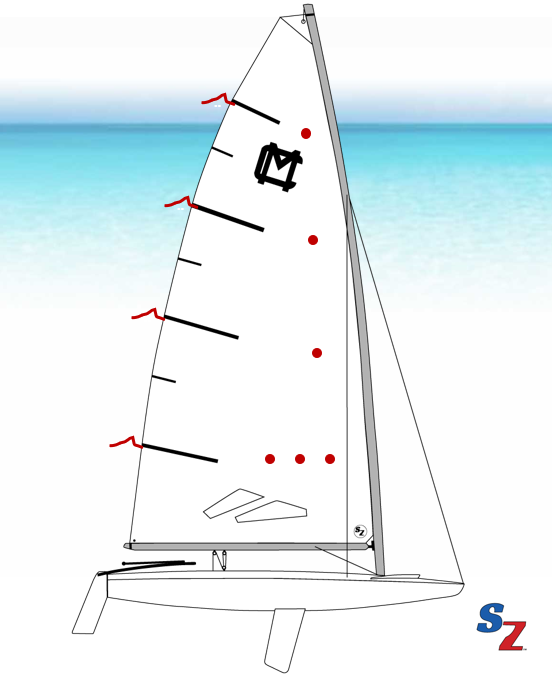
I grew up sailing lasers and love having at least four sets (of mainsail telltales). Most sailors think this is overkill, but I think more information on the wind flowing thru the sail only can help. Rob Seidelmann, perennial MC champion
Think of your mainsail as a multi-dimensional continuously variable transmission. Its shape and angle of attack determine how efficiently you use the wind’s energy. How do you monitor the performance of this big piece of cloth?
On a cat-rigged boat, telltales near the luff can help, if you know where to put them and how to use them. In this article, we’ve compiled the wisdom on luff telltale placement and material. This will set the stage for future articles on sail trim and steering.
Not everyone uses mainsail telltales. For example, we looked at pictures of Bill Draheim, current MC national champion. Bill does not use mainsail luff telltales. Bill writes, “I don’t put telltales on MC sails, but some of my customers put a telltale up about mid way and back a couple feet. Typically when a telltale in that position is flying properly, a set lower than that usually stalls and a set higher than that looks under trimmed. I only use telltales on the shroud to get the most accurate look at the apparent wind angle.” See Bill’s video in our post on shroud telltales for more on his approach.
Purpose of Luff Telltales
On a cat-rigged boat, luff telltales are sometimes called steering telltales, much like the telltales on a jib. They help you find the precise upwind angle for different gears, such as footing, pinching, or max Velocity Made Good (VMG). For some basics on steering with telltales, see Focus on Angle – The Key to Upwind Performance , by the International Sailing Academy.
Luff telltales, along with leech tales, also help with sail trim, including depth and twist. We’ll discuss much more about sail trim and telltales in future articles.
Placement: What’s Important?
Distance behind the luff.
The ideal distance behind the luff balances the needs for sensitivity and stability.
Sensitivity
When sailing upwind, luffing and stalling begin at the the luff of the sail, so you want the telltales as far forward as possible for precise steering information. Telltales further back are less sensitive to steering errors.
For example, perhaps you’re having trouble with pointing. One of the many causes of poor pointing is steering too low and stalling the leeward telltales. If your luff telltales are too far back, you may be stalling the sail without knowing it. You can check this with a telltale placed further forward than normal.
If they’re too far forward, telltales will permanently stall due to the separation bubble around the mast. The size of the separation bubble depends on mast shape, sailing angle, and wind speed. For more about the separation bubble, see Higher Performance Sailing, section 13.16.
Also, in waves, with the boat bouncing around, you may want a less sensitive set of steering tales further back. Many sailmakers put two sets of steering telltales down low near the luff: one further forward for flat water and medium breeze, and another slightly further back and perhaps higher for waves.
Gentry Tufts – A Data-Based Approach
Thanks to Arvel Gentry, you can determine the best distance from the luff for the telltales on your sail. Gentry was the Boeing engineer who first taught sailors about aerodynamics. One of his contributions was the Gentry tufts system of telltale placement. The system is described in detail in Gentry’s July 1973 article in SAIL magazine . If you want to improve your windward sailing performance, also read his November 1973 article .
In A Truer Tale of Telltales, Shevy Gunter (drLaser) describes a practical approach how to install Gentry tufts. Here’s a brief summary:
- Place a horizontal row of steering telltales, beginning about 6″ behind the luff. Use nylon ribbons with tape. Space them a few inches apart, so that the row of telltales extends back to 20-30″ behind the luff.
- Go out and sail in strong wind and note which telltales are always stalled due to the separation bubble behind the mast. The separation bubble ends closest to the mast in heavy air, so this is the limiting case.
- Remove the telltales that are always in the separation bubble. You will find that the remaining forward-most telltales are further forward than the sailmaker placement. This will give you the advantage of more precise steering information.
Distance Up the Luff
You want be able to check the telltales quickly, so you don’t want them too far up. However, the bottom 10-20% of the main generates less power and has more turbulence due to edge effects. Some sailmakers place the lowest set of steering telltales about 10% of the distance up the luff, while others start at 20-25%.
In light air, I get great feedback about steering from telltales that are only 10% up the luff. I can see these easily, even when sitting under the boom. In medium air, I use the 20% height, since the lower telltales seem to stall more.
Ideally, you want to monitor the shape of the sail from the foot to the head. To do so, you can use more than one set of luff telltales, along with your leech telltales.
Sailmakers use as few as two sets and as many as four sets spaced vertically up the sail. All of them align the luff telltales horizontally with any leech telltales to allow comparison of the air flow across the sail from luff to leech.
MC Scow Placement Options
Do all the sailmakers agree on where to place telltales? Using pictures from MC Scow regattas, we developed the diagram on the right and learned that there are some differences.
From this diagram, we identified three options, ranging from KISS to the “more information” approach. We’ll describe these in terms of sets of telltales. A set consists of two telltales – one on each side of the sail. The port and starboard telltales in a set are slightly offset from each other for visibility.
North Sails uses the “keep it simple, …” approach, with two sets down low for steering and two sets up high for upper sail shape.
The lowest set of telltales is about 10% up the luff and about 20″ back. This is lower than most other sailmakers. The second low set is higher and further back for more stability.
The two upper sets are in line horizontally with each other and with the second batten from the top.
North also uses one leech telltale on the top batten. Leech telltales are critical for light and medium air sail trim.
Add a Mid-Mast Set
UK adds a mid-mast set to the KISS approach. This allows you to monitor the powerful middle elevation of the sail. UK also provides three sets of steering tales down low, and a second leech telltale on the small batten below the top main batten. UK’s luff telltales are are 20″ back from the luff.
More Information – our recommended option
As Rob Seidelmann says, it’s nice to have more information. Rob sails a Moorhouse/Sobstad MC sail and he uses telltales at four heights, aligned with the four main battens. The main battens each have leech telltales.
Rob also uses three sets of steering telltales for the lowest set, aligned horizontally. He claims that the set is 20″ back from the luff, but isn’t specific about this measurement. The pictures I saw show at least one of them further forward than the other sailmakers. As a laser sailor, he may be taking advantage of the insights in the Gentry tufts system.
Telltale Material
Telltales are best when they are useful in all conditions. The woolen yarn supplied by sailmakers has advantages and limitations:
- Yarn recovers more quickly after being wet.
- Yarn is fuzzy and sticks to seams easily
- Yarn is small diameter and sometimes hard to see through the sail
- Yarn sometimes unravels
Some sailors, including Arvel Gentry and Rob Seidelmann, prefer strips of sailcloth, which also has advantages and limitations:
- Sailcloth is lighter and more sensitive
- Strips are wider and more visible through the sail
- When wet, the strips stick to the sail harder and take longer to recover
SailTales – A Better Approach
What if we could have the advantages of sailcloth without the sticking-when-wet issue? SailZing offers SailTales as a better approach. SailTales have the following unique features:
- Lightweight sailcloth treated with UV protection and water-resistant coating
- Fluorescent colors for high visibility in all conditions
- Longer-wearing than yarn
Related Content:
Sailors helping sailors.
Will you share your knowledge with your related Comments below?
Continuous Control Lines Kit for MC Scow
Wind shear and gradient effects on trim & strategy – drlaser, you may also like, bill draheim on shroud telltales, pinching and footing in waves, e-scow tuning guides and tips, optimist sailmakers and manufacturers tuning guides, sail trim board, melges performance sailboats, mc-scow sailing speed guide plus drills, poll: preferred telltale length, practice the body mechanics of tacking to..., continuous control lines: quicker trim adjustment for..., leave a comment cancel reply.
You must be logged in to post a comment.
This site uses Akismet to reduce spam. Learn how your comment data is processed .
Insert/edit link
Enter the destination URL
Or link to existing content

Used Sails For Sale
44 listings found.

Pacific Seacraft 37 Yankee

Used Ullman Main for Pacific Seacraft 37

Precision 23

Sunfast 3300 Sailboat Sails, A2, Code 0, Code 55

J105 Spinnaker
J105 Mainsail

J105 Racing JIB

Windseeker / Dazy Staysail / Spinnaker Staysail

30 Foot Sabre 30 MK1

Catalina 380 Spinnaker

Asymm Sail 240 sqm

San Juan 24 Genoa

San Juan 24 Mainsail

Doyle Code 0 for Beneteau Oceanis 41

J-105 Ullman Mainsail

J105 Elvstrom Sobstad Mainsail

J-105 Quantum Mainsail

UK Sailmarkers Racing Sale

Hobie Mirage kayak Sail kit

Hood Cruising Spinnaker

Island Packet 350 sailes for sale

C&C 40 Genoa 130%

C&C 40 Mainsail

E Scow spinnaker
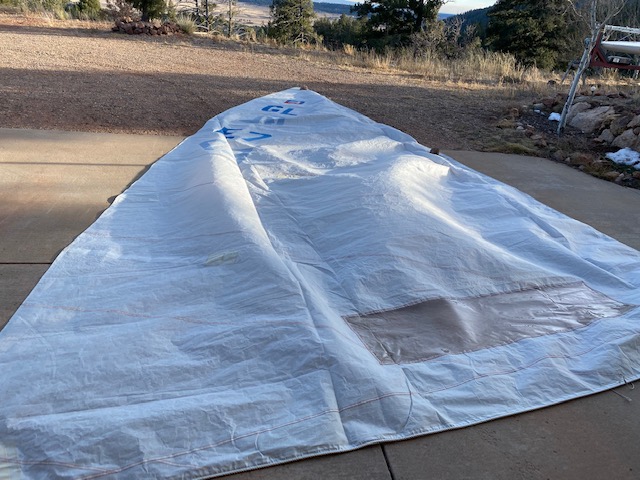
E Scow mainsail

Like-new North Sails jib
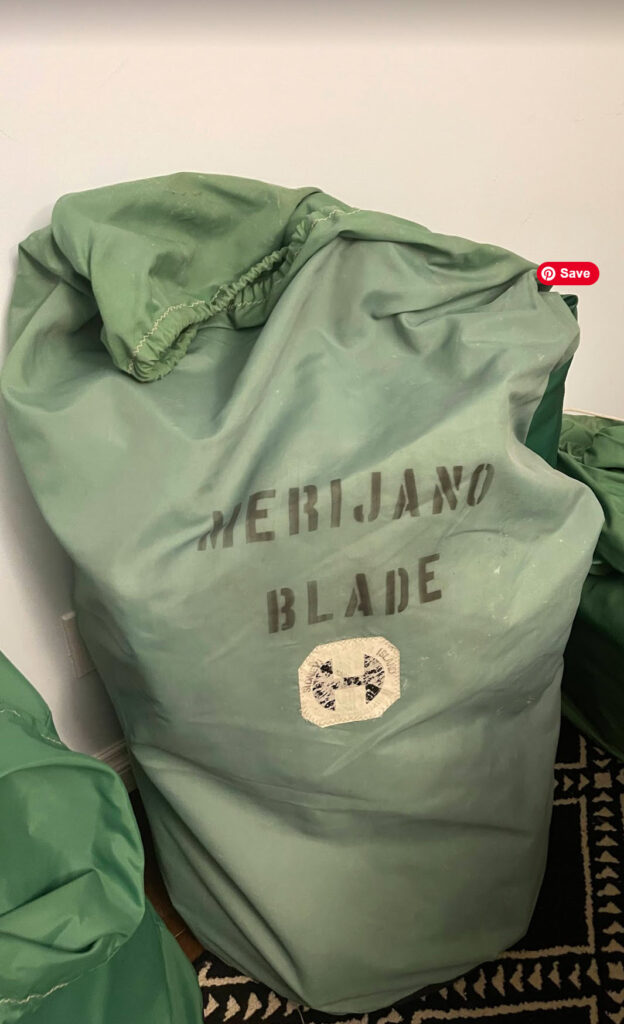
Never Used Hanked Storm Jib

Large Spinnaker sail with sock

Catalina 42 135% Genoa
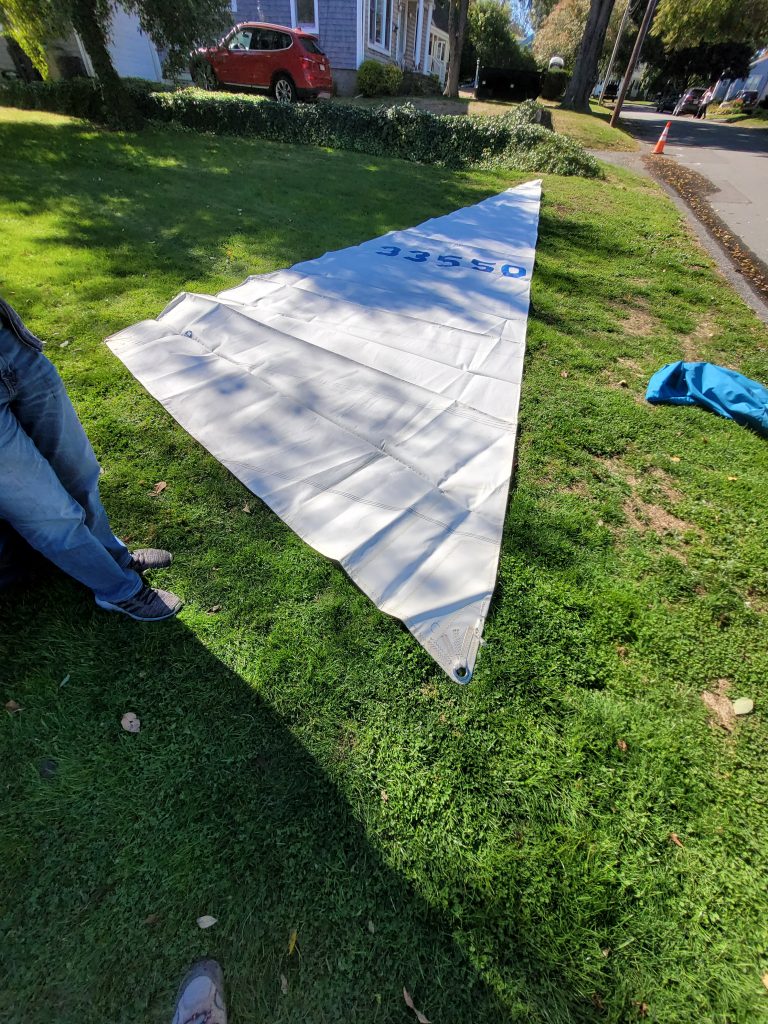
Storm TriSail

2018 Doyle Sailmaker J24 Mainsail

J 130 Quantum Main

1976 Cape Dory 25, Hank-on jib, North Sails, brand new

Parasailor – like new – Florida

28ft JiB Sail by Odyssey

Genoa Jib for Freedom 21

Genoa – New

Mylar 170 headsail
Used sails for sale on sailtrader.
Finding and buying a high-quality and affordable used sail is hard. With SailTrader it doesn’t have to be. SailTrader allows you to find used sails from top brands, used racing and cruising sails, and allows you to find sails for your sailboat based on your sail dimensions.
Used Sails From Top Brands
SailTrader is able to help you find used sails from top brands such as North Sails , Quantum Sails , UK Sailmakers , Doyle Sails , Evolution Sails, Precision Sails, Hood Sails and more. Thanks to our marketplace design, and the ability for anyone to sell their used sail, there is a lot of competition for used sails. This makes it easy for buyers to find a sail at a competitive price they can afford.
Shop Racing or Cruising Sails
Sailing is a very specific and unique sport/hobby. This can make it difficult to find used racing and cruising sails at an affordable price. Most people who are selling their used sails have difficulty finding their target customer, and people who are shopping for sails have a difficult time finding someone selling exactly what they need. SailTrader is here to alleviate this problem. Our site is specifically designed to make buying and selling sales quicker and easier. Now, sellers can find their target client, and buyers can search for precisely what they need and find it!
Anyone in the sailing community can create an account, meaning our inventory of used racing and cruising sails is constantly changing. And thanks to the design of our marketplace your search is not limited to your immediate area, meaning you can find a used racing or cruising sail from anywhere! Whether you are looking for a used racing sail, or for a used cruising sail, you are sure to find exactly what you are looking for on SailTrader.
Find Sails Based on Dimensions
There are so many different types of sails that searching for a new one can be an overwhelming process. Now, it doesn’t have to be. Simply measure your old sail, type in the sail dimensions, and find a list of used sails that match those dimensions.
Sail dimensions are specific for every boat and each of them have maximum sail dimensions that cannot be exceeded. In order to properly measure your dimensions you will need to establish the P, E, J, and I of your boat.
A few terms to help you measure the sails are the luff, the leach/leech, and the foot. The luff is the sail’s forward edge. It is the side attached to the mast. The leach/leech is the back edge of a sail, the one not attached to the mast. And the foot is the bottom edge of a sail.
In addition, it is also helpful to know the location of the head, the tack, and the clew. The head is the top left corner of the sail which attaches to the top of the mast. The tack is the bottom left corner of the sail. And finally the clew, is the bottom right corner of the sail.
If you are looking for a mainsail for sale , you will need to know the P and E dimensions. The “P” measurement (also known as the Luff) is the distance from highest point that the mainsail can be hoisted to the top surface of the boom. The “E” measurement (also known as the foot) is the distance along the boom from the mast to the point on the boom to which the mainsail can be pulled. Occasionally you may also want to measure the Leach/Leech of the mainsail. This is the point from the highest point that the mainsail can be hoisted on the mast, to the furthest point on the boom that the mainsail can be pulled to. Make sure you note the minimum and maximum measurements your boat will allow.
If you are looking for a headsail you will need to know the I and the J measurements. The “I” is the distance down the front of the mast from the halyard to the level of the main deck (the luff), and “J” is the distance along the deck from the tack to the front of the mast.
A jib is a triangular staysail set in front of the mast. With a jib headsail, the J measurement is typically 80-90% of the I measurement. This is because the foot usually overlaps the mainsail a bit.
A genoa is a large jib that overlaps the mainsail. Genoas are categorized based on the amount they extend past the mainsail. For instance a 135% genoa has a foot 35% longer than ‘J’ and a 155% genoa has a foot 55% longer.
Finally, we have measurements for spinnakers . You will need to know the I and the J for these sails. “I” is the distance from the highest part of the spinnaker to the deck, and “J” is the length of the spinnaker pole.
Used Sails on SailTrader
Selling and purchasing sails online can be a hassle. You may purchase them and end up with a sail that doesn’t fit, or you can purchase one and end up getting a poor-quality sail. SailTrader takes the guesswork out of purchasing used sails. With our unique marketplace design, we can ensure you get a quality sail at an affordable price. Use SailTrader for all of your used sails purchasing and selling.
Used Sail Blogs

How Much Are Used Sails Worth?
Determining the dollar value of a used sail requires a nuanced understanding of several factors, as the worth of such an item isn’t simply based

Tips For Selling Used Sails
Selling used sails online can be a great way to recoup some of your investment and provide other sailors with affordable options. Here are some

Offshore Racing Sail Names Explained
Table of Contents Racing sailboats is a thrilling and challenging sport, but it can also be overwhelming for those new to the game. There are

Spinnaker Dimensions Every Sailor Should Know
The two types of spinnakers that we use on our boats (symmetrical and asymmetrical) both have a substantial width (girth), which allows then to propel

New Hunter Sails: Features That Will Make Your Sailing Experience Better
If you are looking to purchase a new sail for your Hunter sailboat and want to know the details of selecting a perfect sail, this

How To Measure Your Sailboat For A New Mainsail
Measuring for a new mainsail can seem daunting, as a lot is at stake, and one little error can result in a lot of wasted
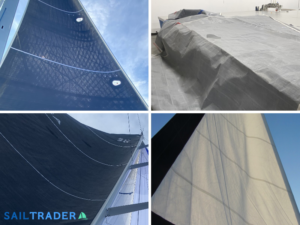
Sail Material Guide For Mainsails and Headsails
We live in a sailing era where technology is advancing at incredible speed, and when it comes to sailcloth, it can be hard to navigate

New Headsail Measurements: What Dimensions A Sailmaker Needs
What do you need to measure to order a new headsail? Are the sails that your boat currently has suitable only for a specific type

Used Sails vs New Sails: What To Consider
Sometimes, you just have a hole in your sail inventory that needs to be filled. Whether it’s a blown sail that you can’t repair, a

What To Look For When Buying A Used Sail
If you are like me, you probably like to get as much utility out of your sails as possible before replacing them. But like anything

Tips for Buying Used Sails Online
Buying a used sail online could be a great way to save money and get your boat back on the water in no time. But

Best Places to Donate Your Sails
So, you have finally decided that it’s time to order a new set of sails. You’ve saved up your funds, chosen a sailmaker, and taken
The Sailor’s Marketplace for Sailboats and Sails.
Sell Your Sailboat
Sailboats for sale.
- New Sailboats
- Used Sailboats
- Cruising Sailboats
- Racing Sailboats
Sell Your Sails
Sails for sail, sail manufacturers.
- North Sails
- Quantum Sails
- Doyle Sails
- UK Sailmakers
Sailing Reviews
- Sailing Line
- Safety Equipment
- Sailing Accesories
As an Amazon Associate SailTrader earns from qualifying purchases.
This website uses cookies to ensure you get the best experience possible.
A cargo ship’s ‘WindWing’ sails saved it up to 12 tons of fuel per day
After six months sailing around the world, the numbers are in for the retrofitted ‘Pyxis Ocean.’
By Andrew Paul | Published Mar 14, 2024 10:00 AM EDT
- Environment
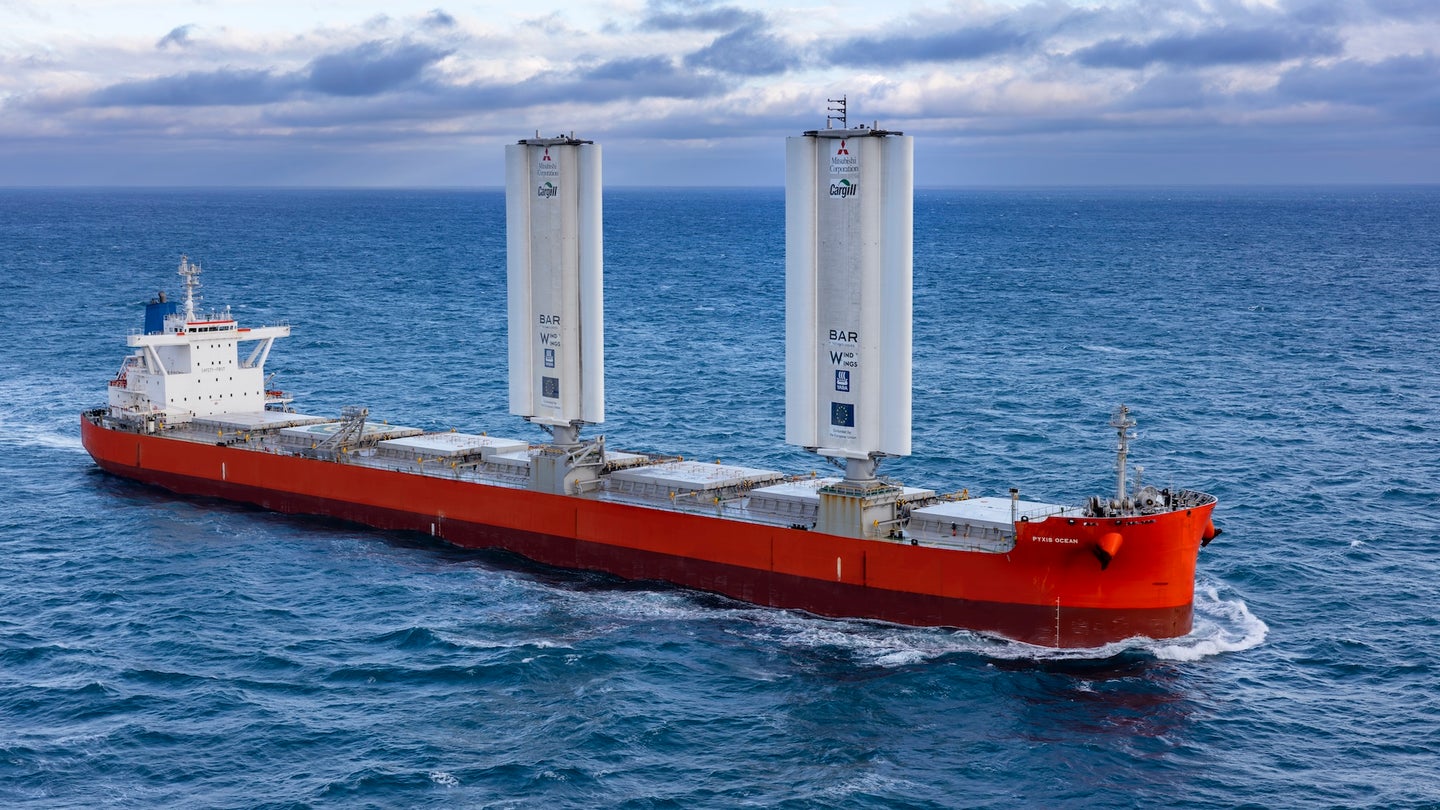
A shipping vessel left China for Brazil while sporting some new improvements last August—a pair of 123-feet-tall, solid “wings” retrofitted atop its deck to harness wind power for propulsion assistance. But after its six-week maiden voyage testing the green energy tech, the Pyxis Ocean MC Shipping Kamsarmax vessel apparently had many more trips ahead of it. Six months later, its owners at the shipping company, Cargill, shared the results of those journeys this week—and it sounds like the vertical WindWing sails could offer a promising way to reduce existing vessels’ emissions.
Using the wind force captured by its two giant, controllable sails to boost its speed, Pyxis Ocean reportedly saved an average of 3.3 tons of fuel each day. And in optimal weather conditions, its trips through portions of the Indian, Pacific, and Atlantic Oceans reduced fuel consumption by over 12 tons a day. According to Cargill’s math, that’s an average of 14 percent less greenhouse gas emissions from the ship. On its best days, Pyxis Ocean could cut that down by 37 percent. In all, the WindWing’s average performance fell within 10 percent ts designers’ computational fluid dynamics simulation predictions.
[Related: A cargo ship with 123-foot ‘WindWing’ sails has just departed on its maiden voyage .]
In total, an equally sized ship outfitted with two WindWings could annually save the same amount of emissions as removing 480 cars from roads—but that could even be a relatively conservative estimate, according to WindWing’s makers at BAR Technologies.
“[W]hile the Pyxis Ocean has two WindWings, we anticipate the majority of Kamsarmax vessels will carry three wings, further increasing the fuel savings and emissions reductions by a factor of 1.5,” BAR Technologies CEO John Cooper said in a statement on Tuesday.
The individual success of Pyxis Ocean is encouraging news, but that’s just one of the 110,000-or-so merchant ships in the world. On top of that, ports are currently designed to accommodate shipping vessels’ traditional proportions—that 125-feet of height added by WindWings could potentially complicate docking in many locations. According to Jan Dieleman, president of Cargill’s Ocean Transportation business, they’re already working to address such issues.
“Cargill is creating ways for all [wind assisted propulsion] vessels—not just the Pyxis Ocean—to operate on global trade routes,” they said in this week’s announcement, adding that the company has begun talking to over 250 ports to figure out the logistics needed to accommodate such ships.

Andrew Paul is Popular Science's staff writer covering tech news. Previously, he was a regular contributor to The A.V. Club and Input, and has had recent work also featured by Rolling Stone, Fangoria, GQ, Slate, NBC, as well as McSweeney's Internet Tendency. He lives outside Indianapolis.
Like science, tech, and DIY projects?
Sign up to receive Popular Science's emails and get the highlights.
She sailed around the world solo — and learned to stop and smell the ocean breeze
Cole brauer became the first american woman to complete the global solo challenge.

Social Sharing

It took just four months for Cole Brauer to complete her historic solo sailing journey around the world — but she's already missing that ocean air.
"I definitely miss being out on the water already. I'm 100-per-cent ready to go back," Brauer told As It Happens host Nil Köksal. "It's something that I miss at every second of every single day, just that fresh, pure ocean air."
Brauer arrived at A Coruña, Spain — the same place she started the trek — on March 7 from her trip around the world, making her the first American woman to complete the race known as the Global Solo Challenge.
The 29-year-old was the youngest competitor and the only woman of the fleet of 16 boats. She finished in second place. Philippe Delamare of France won the race, with the lone Canadian, William MacBrien, unable to finish after his boat started taking on water.
The journey spanned over 48,200 km, venturing to the capes of Africa, Australia and South America.
Brauer says that as a very driven person, the trip helped her slow down and enjoy life.
"If you just gorge yourself and eat all of your food within the first month, it's going to be very depressing for three months after that," said Brauer.
"So you really, really learn how to slow down, enjoy life, watch the sunrises, watch the sunsets."
Keeping people up-to-date
Brauer says the 130-day journey reminded of her the isolation that came during the COVID-19 pandemic.
"Even during COVID, I thrived being alone and writing and taking notes and sailing by myself. And I feel like that was exactly the same way that I had felt on the boat," said Brauer.
But when Brauer left A Coruña on Oct. 29, 2023, she kept in touch with her friends by posting on Instagram with the help of the satellite internet service Starlink, and the team that was helping her on the journey.
And she didn't just share the good news. Part of the way through the journey, Brauer injured her rib.
"I wanted to start this video by saying the last, like, 24 hours I've been so angry," she said in one of her video updates.
"Angry that things keep going wrong. I'm angry that my ribs hurt so bad. I don't want you guys to think I'm like [a] Superwoman or something."
Brauer said that was the lighter version of the story. In the original recording, she says she was cursing half the time, which made it not so suitable for social media.
"For me, posting on Instagram, it was kind of a virtual diary. And sometimes you just need to get it out. And the majority of those videos were me just getting it off my chest," she said.
When she arrived ashore in Spain, her friends and family were emotional that she had made it back. But Brauer says she didn't feel like she had even left, because she had been able to stay in contact with the people important to her.
She says she was able to virtually join friends' dinner parties and talk to her mother on a regular basis.
An inspiration
Brauer took on the challenge at what some might call a disadvantage. She is 152 cm tall, and has been prohibited from competing in some races because of her height.
But Brauer didn't feel like it was a disadvantage.
"I've never been a bigger person. I only know what it's like to be a five foot, two inches, 100-pound woman," she said.
"To do things on the boat, I've always had to do things with a little bit extra steps and using mechanical advantage, using pulleys, using things that help me."
She hopes her story will help get more people into sailing. She suggests people check out boat clubs, which are far less expensive than yacht clubs.
"There is some infrastructure out there for cheaper sailing opportunities. There's just, one, there's not that many people that actually know about it. And two, a lot of kids are usually into doing, you know, more recognized team sports," said Brauer.
As for Brauer, she is already getting ready to set sail again in June for a race. It won't take her around the entire world again, but she's looking forward to getting back on the water.
ABOUT THE AUTHOR

Philip Drost is a journalist with the CBC. You can reach him by email at [email protected].
Produced by Chris Trowbridge
British Airways Concorde aircraft sails the Hudson: See photos, video of move
British Airways iconic Concorde aircraft made its way back home to the Intrepid Museum from the Brooklyn Navy Yard on a barge Tuesday, crossing under the Brooklyn Bridge and sailing the Hudson.
Videos and pictures from the transfer presented a stunning sight as the aircraft moved along the Hudson River with the New York City skyline and Statue of Liberty in the background.
Intrepid Museum, in a news release , said that the aircraft was undergoing restoration work at the Brooklyn Navy Yard.
"The months-long restoration project included removal of the aircrafts paint coating, sanding, and recoating, using the same colors and markings that made Concorde a true aviation legend," the museum said in its release.
It was loaded onto a barge Wednesday and sailed up the Hudson River to Weeks Marine in Jersey City for an overnight stay, reported NorthJersey.Com , part of the USA TODAY NETWORK, before embarking towards its final destination.
On Thursday morning, around 9:30 a.m., the Concorde was lifted by a 300-foot crane and returned to Pier 86, where it was welcomed by gathered onlookers.
The Intrepid had opened up Pier 86 for the public to allow visitors to witness the Concorde's return firsthand. A livestream was also set up.
The museum said that tours of the Concorde will resume on April 4 and that visitors will be able to step inside the Concorde, "hear about its history and peer into its sophisticated flight deck."
The museum also renovating a section of Pier 86 adjacent to the Concorde's display area.
The British Airways Concorde, renowned as the fastest commercial aircraft in the world, arrived at Intrepid Museum's Pier 86 in 2003 and has been a cherished exhibit since.
See pictures from the transfer here:
Saman Shafiq is a trending news reporter for USA TODAY. Reach her at [email protected] and follow her on X, the platform formerly known as Twitter @saman_shafiq7.
Watch CBS News
Strict enforcement credited for smooth sailing during Miami Beach Spring Break 2024
By Anna McAllister
Updated on: March 15, 2024 / 3:48 PM EDT / CBS Miami
MIAMI BEACH — It's been smooth sailing in South Beach for spring breakers , thanks to the city's strict enforcement this year.
"The laws y'all put up and stuff, you scared everybody away ain't gonna lie to you," said King Cid.
The City of Miami Beach, beefing up its police presence and implementing parking and towing rules, along with DUI checkpoints.
This comes after two people were shot and killed in South Beach last year during spring break.
"It was chaotic, it was complete disorder," said Miami Beach City Commissioner David Suarez.
Commissioner Suarez says last year's spring break tarnished the city's reputation and says city leaders are working to change how the city is perceived.
"It's just these two weeks in March that unfortunately have tarnished our brand," said Suarez.
The city's now-viral breaking up with the spring break campaign appears to be effective — so far.
But, we still have to get through what's expected to be the busiest weekend so far.
"It is a big test, it's a bit of an unknown but based on the last couple of weeks, things have been quieter. I think we're going to be okay. We have robust measures in place but we're ready, we have law enforcement out there and I think we're going to have a good weekend," said Miami Beach Mayor Steven Meiner.
Despite the new rules and enhanced security this year, a lot of visitors say they're still loving their time in beautiful South Beach.
"It's not as rowdy but we're still having fun, we're having a blast and I pretty much see the same thing for everybody else," said Jazhaia Watkins.
- Miami Beach Police
- South Florida
- Breaking News
- Spring Break
- Miami Beach

Anna McAllister joined the CBS 4 team as a reporter in December 2022 and is ecstatic to be back in South Florida.
Featured Local Savings
More from cbs news.
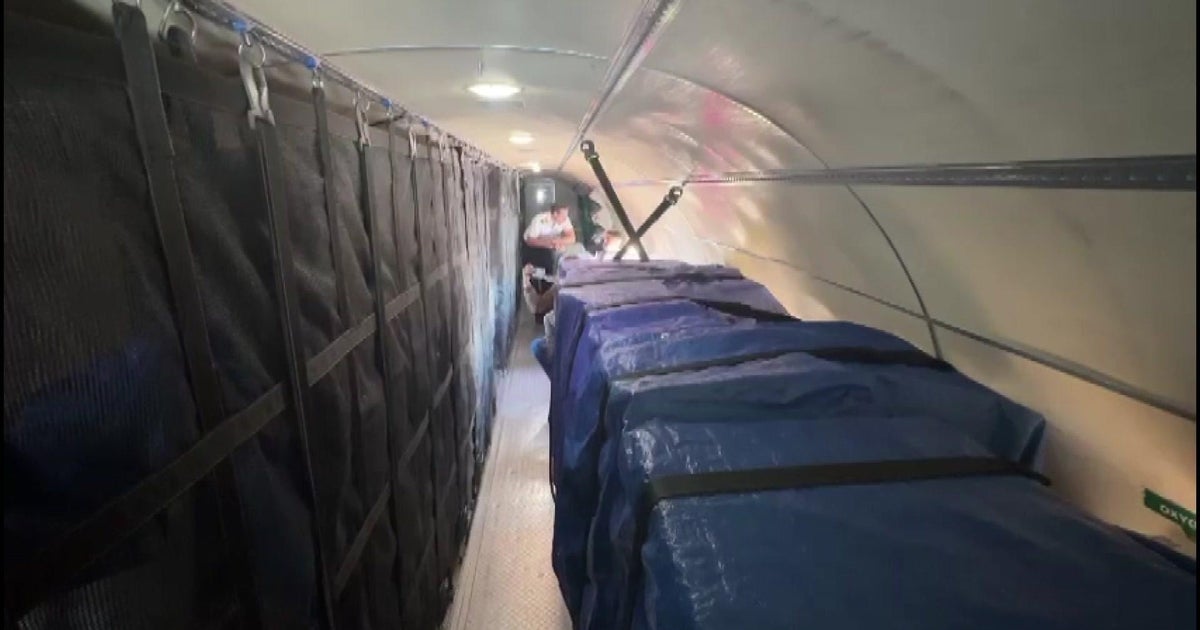
Exclusive: First reported relief flight makes it into Cap-Haitien, Haiti, to deliver critical supplies

30 years after Shannon Melendi's murder, family honors her memory, works to keep killer in prison

Miami Beach Police: Woman accidentally shot in leg on Collins Avenue

BSO conduct criminal investigation, dig for clues in backyard of Pompano Beach home
Things to Do in Elektrostal, Russia - Elektrostal Attractions
Things to do in elektrostal.
- 5.0 of 5 bubbles
- 4.0 of 5 bubbles & up
- Good for a Rainy Day
- Good for Kids
- Good for Big Groups
- Adventurous
- Budget-friendly
- Hidden Gems
- Good for Couples
- Honeymoon spot
- Good for Adrenaline Seekers
- Things to do ranked using Tripadvisor data including reviews, ratings, photos, and popularity.

1. Electrostal History and Art Museum

2. Statue of Lenin

3. Park of Culture and Leisure
4. museum and exhibition center.

5. Museum of Labor Glory

7. Galereya Kino
8. viki cinema, 9. smokygrove.

10. Gandikap
11. papa lounge bar, 12. karaoke bar.
- Statue of Lenin
- Electrostal History and Art Museum
- Park of Culture and Leisure
- Museum and Exhibition Center
- Museum of Labor Glory

Strange Glow Over Moscow Skies Triggers Panic as Explosions Reported
B right flashes lit up the night sky in southern Moscow in the early hours of Thursday morning, new footage appears to show, following reports of an explosion at an electrical substation on the outskirts of the city.
Video snippets circulating on Russian-language Telegram channels show a series of flashes on the horizon of a cloudy night sky, momentarily turning the sky a number of different colors. In a clip shared by Russian outlet MSK1.ru, smoke can be seen rising from a building during the flashes lighting up the scene.
Newsweek was unable to independently verify the details of the video clips, including when and where it was filmed. The Russian Ministry of Emergency situations has been contacted via email.
Several Russian Telegram accounts said early on Thursday that residents of southern Moscow reported an explosion and a fire breaking out at an electrical substation in the Leninsky district, southeast of central Moscow.
Local authorities in the Leninsky district told Russian outlet RBC that the explosion had happened in the village of Molokovo. "All vital facilities are operating as normal," Leninsky district officials told the outlet.
The incident at the substation in Molokovo took place just before 2 a.m. local time, MSK1.ru reported.
Messages published by the ASTRA Telegram account, run by independent Russian journalists, appear to show residents close to the substation panicking as they question the bright flashes in the sky. One local resident describes seeing the bright light before losing access to electricity, with another calling the incident a "nightmare."
More than 10 villages and towns in the southeast of Moscow lost access to electricity, the ASTRA Telegram account also reported. The town of Lytkarino to the southeast of Moscow, lost electricity, wrote the eastern European-based independent outlet, Meduza.
Outages were reported in the southern Domodedovo area of the city, according to another Russian outlet, as well as power failures in western Moscow. Electricity was then restored to the areas, the Strana.ua outlet reported.
The cause of the reported explosion is not known. A Telegram account aggregating news for the Lytkarino area described the incident as "an ordinary accident at a substation."
The MSK1.ru outlet quoted a local resident who speculated that a drone may have been responsible for the explosion, but no other Russian source reported this as a possible cause.
Ukraine has repeatedly targeted Moscow with long-range aerial drones in recent months, including a dramatic wave of strikes in late May.
On Sunday, Moscow Mayor Sergei Sobyanin said the region's air defense systems had intercepted an aerial drone over the city of Elektrostal, to the east of Moscow. No damage or casualties were reported, he said.
The previous day, Russian air defenses detected and shot down another drone flying over the Bogorodsky district, northeast of central Moscow, Sobyanin said.
There is currently no evidence that an aerial drone was responsible for the reported overnight explosion at the electrical substation in southern Moscow.
Related Articles
- Russian Soldier Bashes Drone With Shovel After Detonation Failure: Video
- Russia Headed for Disappointment in Battles Along Dnieper River: UK
- Ukraine's Military Receives Good News From Multiple NATO Allies
Start your unlimited Newsweek trial


Turn Your Curiosity Into Discovery
Latest facts.

Facts About The Research in Epithalon Properties Overview Analysis

How To Protect Children From Junk Food Marketing
40 facts about elektrostal.
Written by Lanette Mayes
Modified & Updated: 02 Mar 2024
Reviewed by Jessica Corbett

Elektrostal is a vibrant city located in the Moscow Oblast region of Russia. With a rich history, stunning architecture, and a thriving community, Elektrostal is a city that has much to offer. Whether you are a history buff, nature enthusiast, or simply curious about different cultures, Elektrostal is sure to captivate you.
This article will provide you with 40 fascinating facts about Elektrostal, giving you a better understanding of why this city is worth exploring. From its origins as an industrial hub to its modern-day charm, we will delve into the various aspects that make Elektrostal a unique and must-visit destination.
So, join us as we uncover the hidden treasures of Elektrostal and discover what makes this city a true gem in the heart of Russia.
Key Takeaways:
- Elektrostal, known as the “Motor City of Russia,” is a vibrant and growing city with a rich industrial history, offering diverse cultural experiences and a strong commitment to environmental sustainability.
- With its convenient location near Moscow, Elektrostal provides a picturesque landscape, vibrant nightlife, and a range of recreational activities, making it an ideal destination for residents and visitors alike.
Known as the “Motor City of Russia.”
Elektrostal, a city located in the Moscow Oblast region of Russia, earned the nickname “Motor City” due to its significant involvement in the automotive industry.
Home to the Elektrostal Metallurgical Plant.
Elektrostal is renowned for its metallurgical plant, which has been producing high-quality steel and alloys since its establishment in 1916.
Boasts a rich industrial heritage.
Elektrostal has a long history of industrial development, contributing to the growth and progress of the region.
Founded in 1916.
The city of Elektrostal was founded in 1916 as a result of the construction of the Elektrostal Metallurgical Plant.
Located approximately 50 kilometers east of Moscow.
Elektrostal is situated in close proximity to the Russian capital, making it easily accessible for both residents and visitors.
Known for its vibrant cultural scene.
Elektrostal is home to several cultural institutions, including museums, theaters, and art galleries that showcase the city’s rich artistic heritage.
A popular destination for nature lovers.
Surrounded by picturesque landscapes and forests, Elektrostal offers ample opportunities for outdoor activities such as hiking, camping, and birdwatching.
Hosts the annual Elektrostal City Day celebrations.
Every year, Elektrostal organizes festive events and activities to celebrate its founding, bringing together residents and visitors in a spirit of unity and joy.
Has a population of approximately 160,000 people.
Elektrostal is home to a diverse and vibrant community of around 160,000 residents, contributing to its dynamic atmosphere.
Boasts excellent education facilities.
The city is known for its well-established educational institutions, providing quality education to students of all ages.
A center for scientific research and innovation.
Elektrostal serves as an important hub for scientific research, particularly in the fields of metallurgy, materials science, and engineering.
Surrounded by picturesque lakes.
The city is blessed with numerous beautiful lakes, offering scenic views and recreational opportunities for locals and visitors alike.
Well-connected transportation system.
Elektrostal benefits from an efficient transportation network, including highways, railways, and public transportation options, ensuring convenient travel within and beyond the city.
Famous for its traditional Russian cuisine.
Food enthusiasts can indulge in authentic Russian dishes at numerous restaurants and cafes scattered throughout Elektrostal.
Home to notable architectural landmarks.
Elektrostal boasts impressive architecture, including the Church of the Transfiguration of the Lord and the Elektrostal Palace of Culture.
Offers a wide range of recreational facilities.
Residents and visitors can enjoy various recreational activities, such as sports complexes, swimming pools, and fitness centers, enhancing the overall quality of life.
Provides a high standard of healthcare.
Elektrostal is equipped with modern medical facilities, ensuring residents have access to quality healthcare services.
Home to the Elektrostal History Museum.
The Elektrostal History Museum showcases the city’s fascinating past through exhibitions and displays.
A hub for sports enthusiasts.
Elektrostal is passionate about sports, with numerous stadiums, arenas, and sports clubs offering opportunities for athletes and spectators.
Celebrates diverse cultural festivals.
Throughout the year, Elektrostal hosts a variety of cultural festivals, celebrating different ethnicities, traditions, and art forms.
Electric power played a significant role in its early development.
Elektrostal owes its name and initial growth to the establishment of electric power stations and the utilization of electricity in the industrial sector.
Boasts a thriving economy.
The city’s strong industrial base, coupled with its strategic location near Moscow, has contributed to Elektrostal’s prosperous economic status.
Houses the Elektrostal Drama Theater.
The Elektrostal Drama Theater is a cultural centerpiece, attracting theater enthusiasts from far and wide.
Popular destination for winter sports.
Elektrostal’s proximity to ski resorts and winter sport facilities makes it a favorite destination for skiing, snowboarding, and other winter activities.
Promotes environmental sustainability.
Elektrostal prioritizes environmental protection and sustainability, implementing initiatives to reduce pollution and preserve natural resources.
Home to renowned educational institutions.
Elektrostal is known for its prestigious schools and universities, offering a wide range of academic programs to students.
Committed to cultural preservation.
The city values its cultural heritage and takes active steps to preserve and promote traditional customs, crafts, and arts.
Hosts an annual International Film Festival.
The Elektrostal International Film Festival attracts filmmakers and cinema enthusiasts from around the world, showcasing a diverse range of films.
Encourages entrepreneurship and innovation.
Elektrostal supports aspiring entrepreneurs and fosters a culture of innovation, providing opportunities for startups and business development.
Offers a range of housing options.
Elektrostal provides diverse housing options, including apartments, houses, and residential complexes, catering to different lifestyles and budgets.
Home to notable sports teams.
Elektrostal is proud of its sports legacy, with several successful sports teams competing at regional and national levels.
Boasts a vibrant nightlife scene.
Residents and visitors can enjoy a lively nightlife in Elektrostal, with numerous bars, clubs, and entertainment venues.
Promotes cultural exchange and international relations.
Elektrostal actively engages in international partnerships, cultural exchanges, and diplomatic collaborations to foster global connections.
Surrounded by beautiful nature reserves.
Nearby nature reserves, such as the Barybino Forest and Luchinskoye Lake, offer opportunities for nature enthusiasts to explore and appreciate the region’s biodiversity.
Commemorates historical events.
The city pays tribute to significant historical events through memorials, monuments, and exhibitions, ensuring the preservation of collective memory.
Promotes sports and youth development.
Elektrostal invests in sports infrastructure and programs to encourage youth participation, health, and physical fitness.
Hosts annual cultural and artistic festivals.
Throughout the year, Elektrostal celebrates its cultural diversity through festivals dedicated to music, dance, art, and theater.
Provides a picturesque landscape for photography enthusiasts.
The city’s scenic beauty, architectural landmarks, and natural surroundings make it a paradise for photographers.
Connects to Moscow via a direct train line.
The convenient train connection between Elektrostal and Moscow makes commuting between the two cities effortless.
A city with a bright future.
Elektrostal continues to grow and develop, aiming to become a model city in terms of infrastructure, sustainability, and quality of life for its residents.
In conclusion, Elektrostal is a fascinating city with a rich history and a vibrant present. From its origins as a center of steel production to its modern-day status as a hub for education and industry, Elektrostal has plenty to offer both residents and visitors. With its beautiful parks, cultural attractions, and proximity to Moscow, there is no shortage of things to see and do in this dynamic city. Whether you’re interested in exploring its historical landmarks, enjoying outdoor activities, or immersing yourself in the local culture, Elektrostal has something for everyone. So, next time you find yourself in the Moscow region, don’t miss the opportunity to discover the hidden gems of Elektrostal.
Q: What is the population of Elektrostal?
A: As of the latest data, the population of Elektrostal is approximately XXXX.
Q: How far is Elektrostal from Moscow?
A: Elektrostal is located approximately XX kilometers away from Moscow.
Q: Are there any famous landmarks in Elektrostal?
A: Yes, Elektrostal is home to several notable landmarks, including XXXX and XXXX.
Q: What industries are prominent in Elektrostal?
A: Elektrostal is known for its steel production industry and is also a center for engineering and manufacturing.
Q: Are there any universities or educational institutions in Elektrostal?
A: Yes, Elektrostal is home to XXXX University and several other educational institutions.
Q: What are some popular outdoor activities in Elektrostal?
A: Elektrostal offers several outdoor activities, such as hiking, cycling, and picnicking in its beautiful parks.
Q: Is Elektrostal well-connected in terms of transportation?
A: Yes, Elektrostal has good transportation links, including trains and buses, making it easily accessible from nearby cities.
Q: Are there any annual events or festivals in Elektrostal?
A: Yes, Elektrostal hosts various events and festivals throughout the year, including XXXX and XXXX.
Was this page helpful?
Our commitment to delivering trustworthy and engaging content is at the heart of what we do. Each fact on our site is contributed by real users like you, bringing a wealth of diverse insights and information. To ensure the highest standards of accuracy and reliability, our dedicated editors meticulously review each submission. This process guarantees that the facts we share are not only fascinating but also credible. Trust in our commitment to quality and authenticity as you explore and learn with us.
Share this Fact:

IMAGES
VIDEO
COMMENTS
The mainsail is placed aft of the mast, which simply means behind. The headsail is in front of the mast. Generally, we have three sorts of sails on our boat: Mainsail: The large sail behind the mast which is attached to the mast and boom; Headsail: The small sail in front of the mast, attached to the mast and forestay (ie. jib or genoa)
In this guide, we'll focus on the three main types of sails: Mainsail, Jib, and Spinnaker. Mainsail is the primary sail on your boat. The mainsail is the largest sail on a sailboat and is typically attached to the mast and boom. It is found aft (rear) of the mast. It's attached to the boat through a track or sail slide, which allows it to move ...
In the old days, your sailmaker offered you one kind of mainsail, and sailors were generally happy with the result. You got a sail with a moderate roach, four battens to support that roach, a few reefs and some sail-trim devices, like a cunningham or a flattening reef. Today, however, mainsails seem to come in all shapes and sizes, with a wide ...
Main sails are the backbone of sailing, providing propulsion and maneuverability to sailboats of all sizes. Understanding the different types, materials, and maintenance practices is essential for maximizing your sailing experience and prolonging the lifespan of your main sail.
The mainsail is a key component of your sailing inventory. All sailboat rigs are equipped with at least one mainsail. These sails are not always the largest or the most powerful sail on the boat, however they are key to the performance of your boat. The configuration of your mainsail is only limited to your imagination and your rig.
Headsail/Jib. The headsail, or the jib, is likely the second most popular kind of sail found on sailboats. This is because it often accompanies the mainsail, the most popular kind. On all sailboats, the headsail is put at the front of the mast over the sailboat's bow. It is always a smaller sail than the mainsail.
8 Types of Sails for Sailboats. As mentioned, you should carry multiple sails when sailing to prepare for various weather conditions. Here's a brief overview of the types of sails for sailboats: 1. Mainsails. The mainsail is the largest and most important sail. Therefore, it's probably the first sail to come to mind when you think of camping.
Spinnaker sails are a type of downwind sail that can be used to increase boat speed when sailing in light winds. They are typically used in wind conditions below 10 knots, which are considered light air sails. Spinnakers come in two types: symmetrical and asymmetrical. Author: Ken Heaton CC BY-SA-4..
For a 35-foot boat, prices range from about $250 for a lazy jack kit, $700 for the Dutchman, to anywhere from $800 to $1,500 (not including sail costs) for a lazy jack/sailcover combo. A close comparison of each of these options will provide some valuable insight into taking the gymnastics out of handling a mainsail. 288.
As a general setup, sailboats will use three common sails, including headsail, mainsail, and specialty sail. Due to the varying wind conditions and the model of the sailboat, there are many types of sails including jib, genoa, trysail, storm jib, code zero, gennaker, and spinnaker. While that sounds like too many models of sails, you can easily ...
With the lift of the sails and the lateral push or hydrodynamics of the keel, the boat is propelled forward. Where the wind concentrates force in the sails is called the center of effort, while the keel below is called the center of lateral resistance. Most modern sailboats have a forward (or headsail) and a mainsail.
The amount of draft is typically expressed as a percentage and is determined by dividing the fullness of the sail at the point of maximum draft by the chord length (the length of the line you drew from the luff to the leech) and then multiplying by 100. Typical draft, or depth, aboard a cruising boat will be around 15 percent.
Mainsail. A mainsail is a sail rigged on the main mast of a sailing vessel. [1] On a square rigged vessel, it is the lowest and largest sail on the main mast. On a fore-and-aft rigged vessel, it is the sail rigged aft of the main mast. The sail's foot is normally attached to a boom. [1] (. In extremely heavy weather, the mainsail may be lowered ...
A sailboat mainsail is a primary sail used for propulsion. The mainsail is also usually the largest sail on the boat. The mainsail on a typical sailboat is located on the aft section of the mainmast. This means it 'points' towards the stern of the vessel. The mainsail is usually the largest in terms of sail area, but sometimes other sails (like ...
A sloop-rigged sailboat typically features a mainsail, a headsail, and an additional light-wind sail, such as a spinnaker or Gennaker. The mainsail is rigged aft of the mast, while the headsail is attached to the forestay. The two most commonly used headsails are the Genoa and Jib. The sails are vital parts of a sailboat since you obviously ...
New to sailing? We created this comprehensive basic sailing video series just for you! We know how difficult it is to find solid answers to your questions re...
KISS. North Sails uses the "keep it simple, …" approach, with two sets down low for steering and two sets up high for upper sail shape. The lowest set of telltales is about 10% up the luff and about 20″ back. This is lower than most other sailmakers. The second low set is higher and further back for more stability.
Used Sails From Top Brands. SailTrader is able to help you find used sails from top brands such as North Sails, Quantum Sails, UK Sailmakers, Doyle Sails, Evolution Sails, Precision Sails, Hood Sails and more. Thanks to our marketplace design, and the ability for anyone to sell their used sail, there is a lot of competition for used sails.
Using the wind force captured by its two giant, controllable sails to boost its speed, Pyxis Ocean reportedly saved an average of 3.3 tons of fuel each day. And in optimal weather conditions, its ...
On Thursday, Cole Brauer made history, becoming the first American woman to sail solo nonstop around the world. The 29-year-old from Long Island, New York, celebrated at the finish line in Spain ...
As It Happens6:05How a worldwide sailing race taught Cole Brauer to stop and smell the ocean breeze It took just four months for Cole Brauer to complete her historic solo sailing journey around ...
The southern oceans of the Atlantic and Pacific that Brauer endured alone in her 30,000-mile sailboat voyage brought her face-to-face with bigger waves and storms than most people will ever see ...
A dream come true: Florida woman celebrates 106th birthday at Walt Disney World Resort New York City St. Patrick's Day parade 2024: Date, time, route, how to watch live Krispy Kreme offers free ...
The Disney Destiny, sister to the Disney Wish and Disney Treasure, will have a first-of-its-kind design theme, "Heroes and Villains," drawing on the legacies of beloved Disney stories, characters and theme park attractions.. The Disney Cruise Line and Walt Disney Imagineering teams were inspired by the dynamic duality of every great Disney story when developing this new ship, where ...
MIAMI BEACH — It's been smooth sailing in South Beach for spring breakers, thanks to the city's strict enforcement this year. "The laws y'all put up and stuff, you scared everybody away ain't ...
Strip Club 54 Sunset Boat Party Off Road Fury Barbados Camel Safari Las Vegas Three Tables Dive Site Ice Lagoon Adventure Boat Tours Elephant Jungle Sanctuary Samui Swift Creek Outfitters & Teton Horseback Adventures Odyssey Whale Watching Giorgos Pame Walking Tours
Elektrostal, city, Moscow oblast (province), western Russia.It lies 36 miles (58 km) east of Moscow city. The name, meaning "electric steel," derives from the high-quality-steel industry established there soon after the October Revolution in 1917. During World War II, parts of the heavy-machine-building industry were relocated there from Ukraine, and Elektrostal is now a centre for the ...
B right flashes lit up the night sky in southern Moscow in the early hours of Thursday morning, new footage appears to show, following reports of an explosion at an electrical substation on the ...
Known as the "Motor City of Russia." Elektrostal, a city located in the Moscow Oblast region of Russia, earned the nickname "Motor City" due to its significant involvement in the automotive industry.. Home to the Elektrostal Metallurgical Plant. Elektrostal is renowned for its metallurgical plant, which has been producing high-quality steel and alloys since its establishment in 1916.